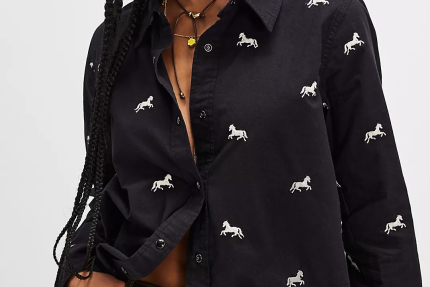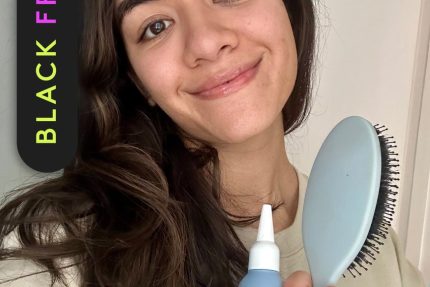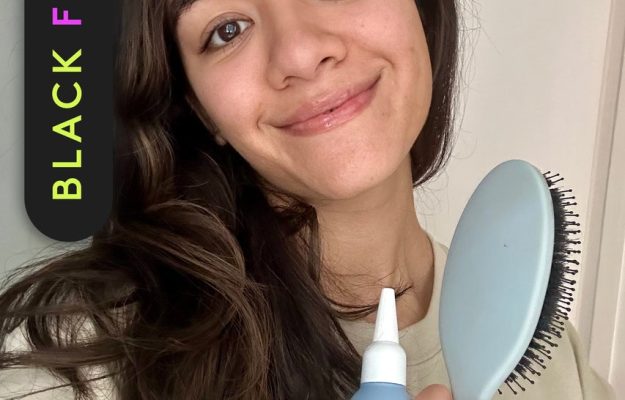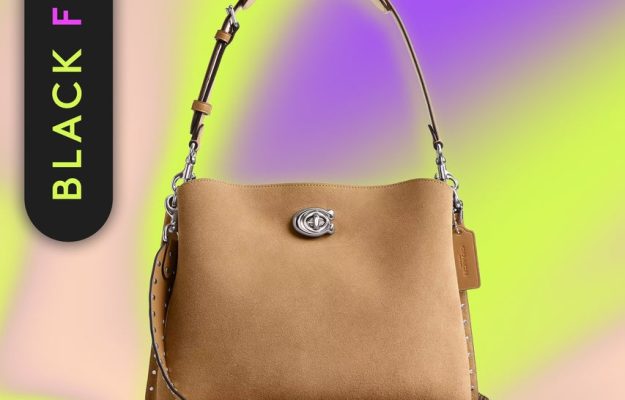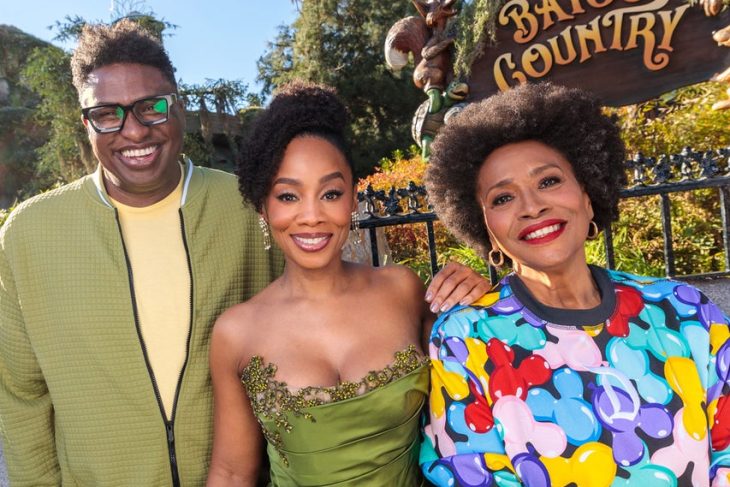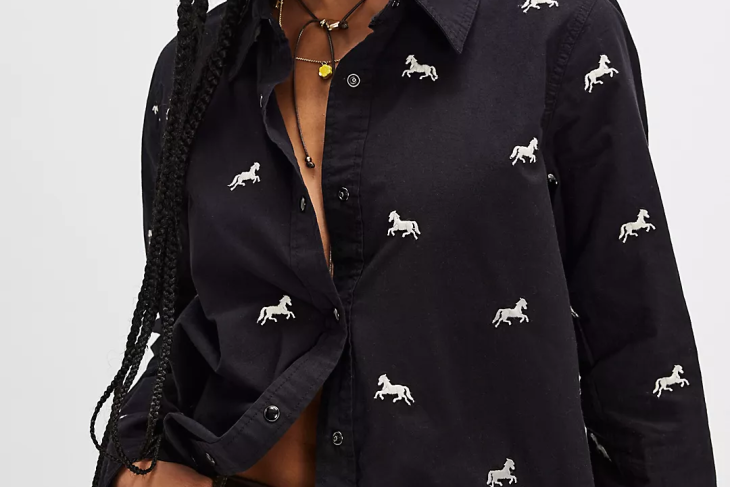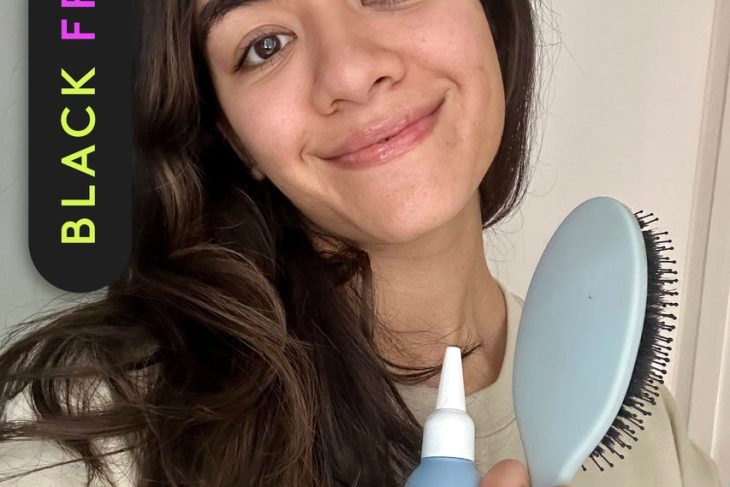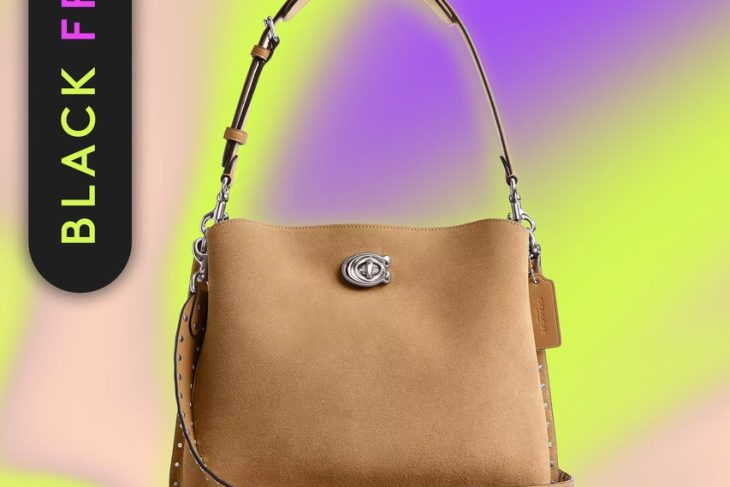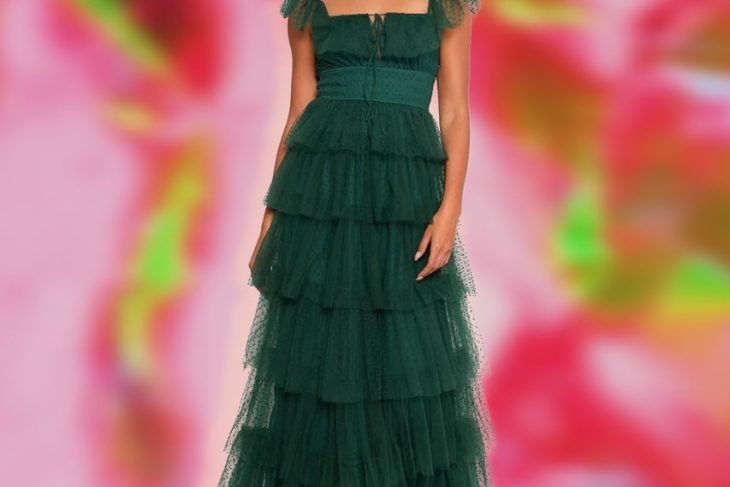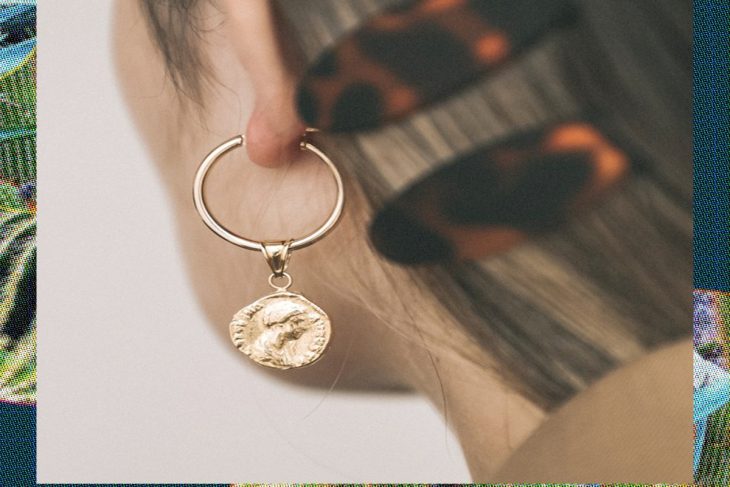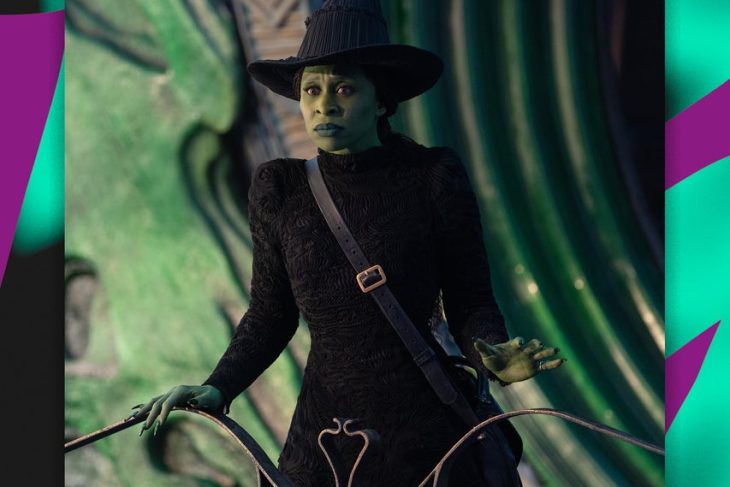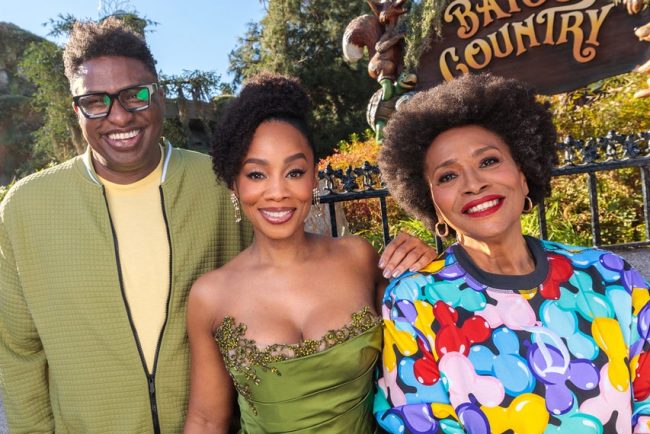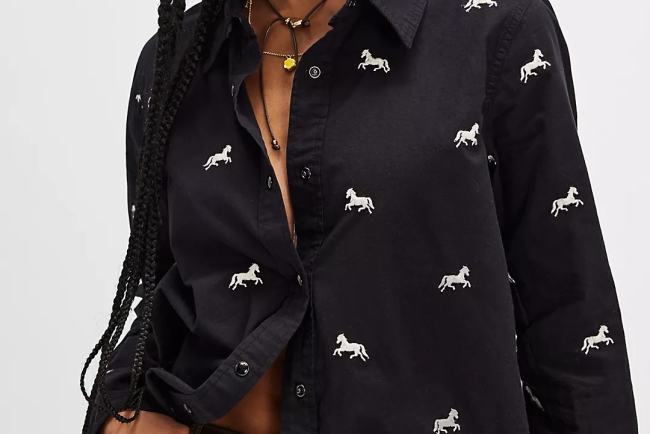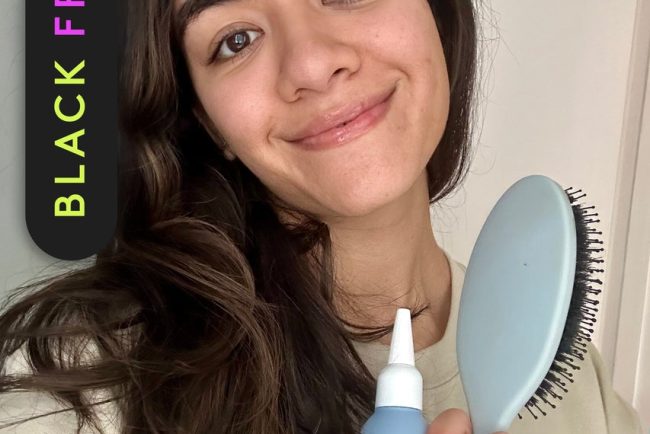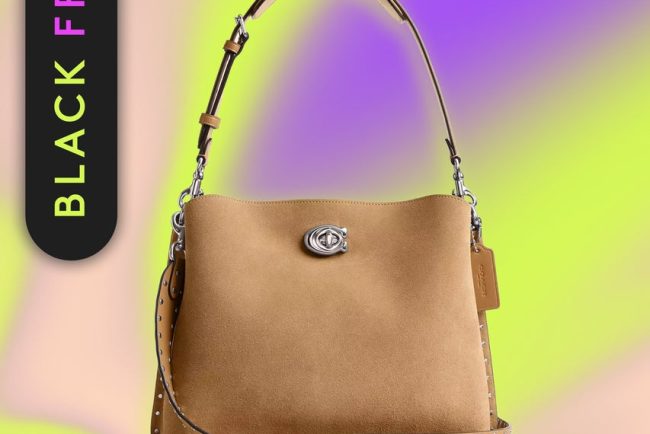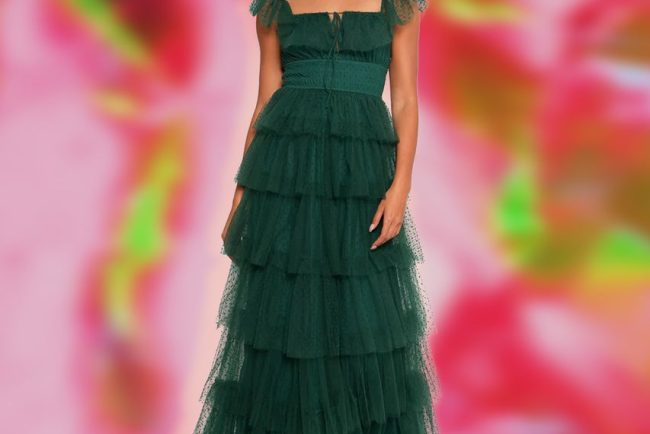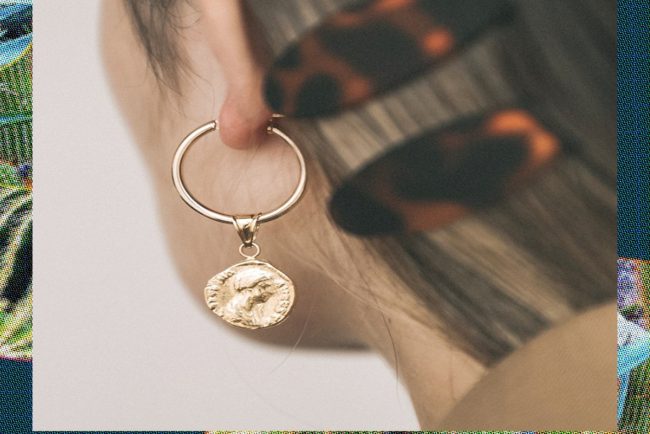
Wicked’s Elphaba Has Always Been Black. Cynthia Erivo’s Stunning Performance Cements It
Elphaba is green. It’s the first thing Glinda says to her in Wicked, the Jon M. Chu-directed blockbuster movie-musical adaptation of Stephen Schwartz’s Broadway classic. The fact that Elphaba Thropp (Cynthia Erivo) is green is as paramount to Wicked’s plot as Galinda Upland’s (Ariana Grande) […]
FASHION
18 Gifts For The Woman Who Wants Nothing This Holiday Season
This holiday season, we’ve found the gifts that feel great to get and even better to give. Shop Well-Received, our collection of editor-approved holiday gift guides, here. We all have those people in our lives — the ones who say they don’t want anything for […]
FASHION
Best of Earth911 Podcast: Keel Labs’ Tessa Gallagher Introduces Kelsun Kelp-Based Textiles
The fashion industry is responsible for as much as 10% of annual CO2 emissions and… The post Best of Earth911 Podcast: Keel Labs’ Tessa Gallagher Introduces Kelsun Kelp-Based Textiles appeared first on Earth911.
style-&-fashion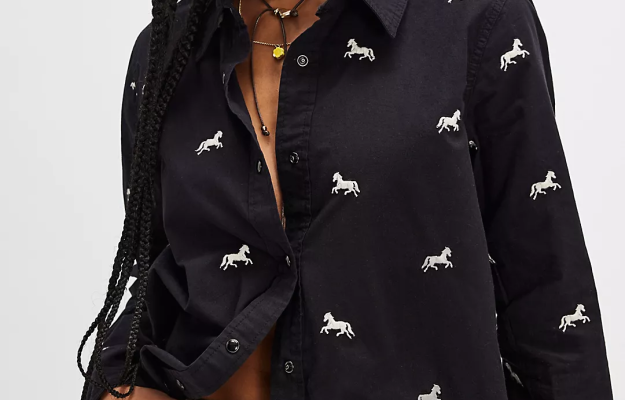


Earth911 Podcast: Peerby’s Daan Weddenpohl Accelerates Circular, Sharing Economies
The sharing economy can be a platform for keeping products in circulation and out of… The post Earth911 Podcast: Peerby’s Daan Weddenpohl Accelerates Circular, Sharing Economies appeared first on Earth911.
EcoTechThe sharing economy can be a platform for keeping products in circulation and out of…
The post Earth911 Podcast: Peerby’s Daan Weddenpohl Accelerates Circular, Sharing Economies appeared first on Earth911.
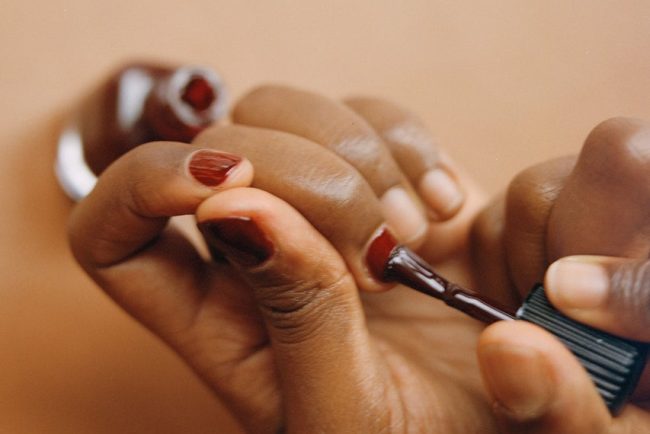
Serious Question: Is Nail Polish Dead?
Each morning, as I sit on the London Underground and am forced to lift my eyes away from the comfort of my phone screen (the service isn’t great down there), I find myself staring at everyone’s hands. I spy a set of perfectly shiny gel […]
FASHION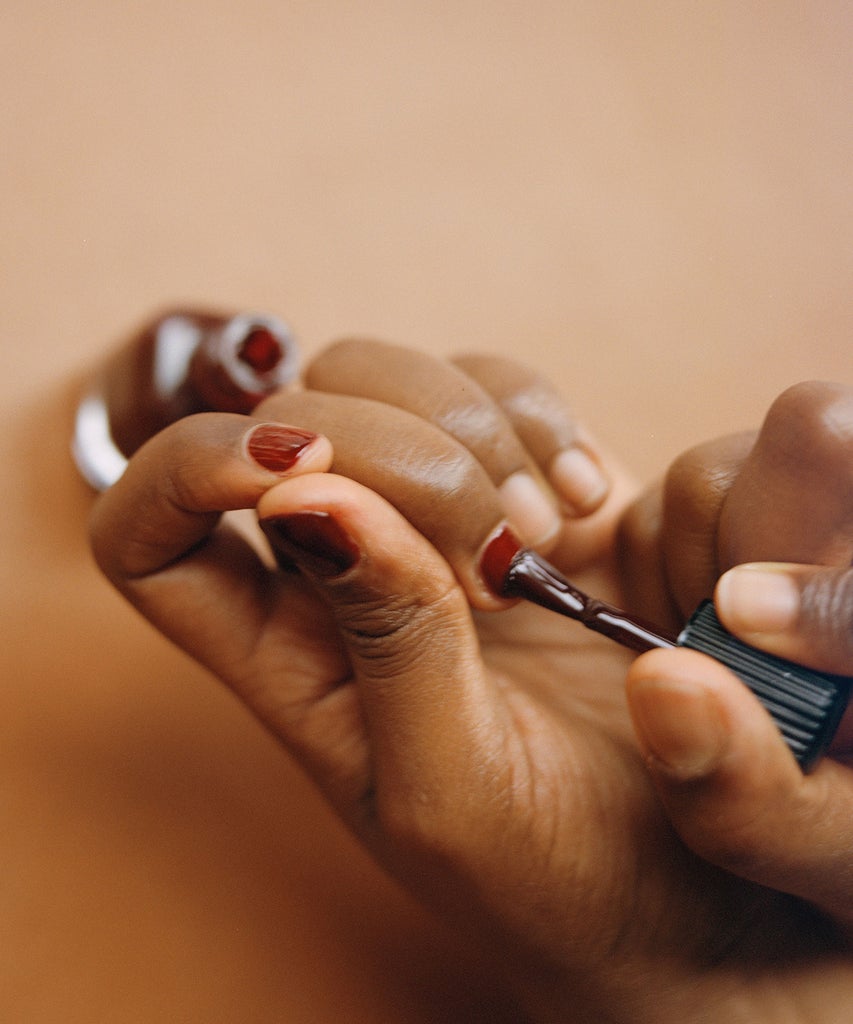
Each morning, as I sit on the London Underground and am forced to lift my eyes away from the comfort of my phone screen (the service isn’t great down there), I find myself staring at everyone’s hands. I spy a set of perfectly shiny gel nails here and a bare-nailed hand there, but rarely do I spy fingernails with “normal” nail polish on them.
You know the type I’m talking about: The regular polish that we all grew up with; the type that chips easily and takes an age to dry between coats. I feel like I can tell the difference between a gel manicure and a regular nail polish manicure upon quick inspection, and my morning commutes have left me with just one question: Where did all the normal nail polish go?
With this question already rattling around in my head, I was startled during a chance encounter at Townhouse recently, when the lady next to me struck up a conversation. She wanted to look at my nails, which were prepped and layered with a coat of builder gel (BIAB), ready for nail art, and we discussed the design I was opting for. When I asked what she was getting, she said, “Ah, I’m old-fashioned. I’m just getting normal nail polish.”
“Old fashioned?” I repeated, incredulously. “You think normal nail polish is old-fashioned?”
“Well, that’s what my niece tells me.”
Is anyone using regular nail polish anymore?
At the ripe old age of 27, I hesitate to begin a sentence with “back in my day” but back in my day, normal nail polish (which I’ll refer to as “OG polish”) reigned supreme. At least it did in my circle of friends and family. Every so often my mum would let me raid the bargain bin at Superdrug for a new (usually pink and sparkly) OG polish. I wasn’t allowed to wear makeup back then, so you could say that cheap OG polish was my gateway drug to the beautysphere. I loved the joy that it brought me (I maintain that it’s impossible to have sparkly nails and not feel joy whenever you see them). My mum would paint my nails for me and I’d paint hers. It felt special.
We don’t do that anymore. If we have anything on our nails, we’ve had a professional do it, probably with gel. Eager to know if this eschewing of OG polish is unique to me and my circle, I reached out to Sophia Green of Greenhouse Studio, a salon that specialises in detailed nail art. “Until recently, I didn’t realise people were still using normal nail polish,” she confessed to me. “I rarely see it in the salon.” Her clients tend to come in with — and ask for — gels or nail extensions.
A quick scour of the internet shows much of the same attitude. One nail technician on Threads claims that “99%” of her clients ask for gel polish over OG polish. She goes so far as to say that you should buy your own OG polishes and take them with you to the salon if you want a traditional manicure, as salons might not carry a wide range of colours anymore. Other users and technicians I spoke to agree, saying it makes no sense for them to stock regular polish if nobody wants it, as it just becomes thick and gloopy over time.
Over on Reddit, a user notes that it’s “interesting” how gel polish is now de rigueur. “Most salons won’t offer nice regular polishes or [create] designs with [them] anymore. But if we look back, not so long ago regular polish was the norm and you [could] still get french tips or simple drawings without hesitation, right?” The replies largely agree, with some even saying that they feel judged when opting for OG polish. “I got shamed when I chose a regular polish for a pedicure even after explaining I had a gel allergy,” wrote one user. Another user, who prefers using OG polish on their toes, said, “I made the mistake of telling this to a friend of a friend, since she was a nail tech, and she told me I was a liar and became quite angry about the entire thing.”
Despite plenty of anecdotal evidence, the statistics to back up this supposed OG polish purge are sparse. The global gel nail market was valued at $1.8 billion in 2023 but one report suggests that gels make up just 40% of the overall nail polish market share. Forty percent is a lot, but it’s far from being the majority.
I asked Gaëlle Lebrat Personnaz, the founder of nail polish brand Manucurist, to weigh in. “Normal nail polish has seen some market decline in comparison to gel and other advanced long-wear polishes,” Personnaz says. But she adds that traditional polish formulas remain in demand for their versatility, convenience, affordability and ease of use. Her own brand’s data shows that around 48% of US consumers still buy regular polishes.
When is regular nail polish most useful?
Clearly, people are still using classic nail polish. “I’ve definitely seen an increase in the use of normal nail polish recently,” says Green, who adds that she was shocked when she first realised this. She maintains that her clients mostly opt for gel, but she’s noticed a shift among the general population when she works at events outside of her salon. She thinks this is because people just can’t afford gel manicures anymore.
This is unsurprising considering that, in London, a gel manicure can set you back up to £70 in my experience. At Townhouse, a signature gel manicure will cost you £46 and at So. Shell, another of my favourite haunts, it will cost you £53. You can expect further charges for the likes of BIAB or the removal of your old set. Want nail art? Well, you may have to sell a kidney.
Obviously, these prices are justified; the beauty sector struggled amid the COVID-19 pandemic and nails are like little canvases, ripe for what I consider to be real art. But one thing is clear: The cost of living is at a high. With this in mind, it would be short-sighted to declare OG polish dead. Would it die out if money were no object? Perhaps, but more likely not.
Claire Stark, a manicurist who specialises in Bio Sculpture and decorates the digits of many of my editor friends, says she’s seen a huge increase in regular nail polish use since the pandemic. “It’s an at-home and user-friendly way to keep your nails looking well groomed,” she explains. “I don’t think it’s old-fashioned per se — I love [regular] polish for an easy manicure that I can change without any hassle. It’s perfect for people who are indecisive like me.”
Stark maintains that OG polish holds a “well-needed space in the beauty community” and is essential for those who find painting their own nails a therapeutic and mindful exercise. OG polish does play an important role here, considering that trying to apply gels at home without proper training can be dangerous and even prompt an allergic reaction. This is because your body can form a hypersensitivity to methacrylate monomers (HEMA), which aren’t found in OG polishes.
Thanks to the increase in awareness surrounding these skin sensitivities and allergic reactions to gel nail polishes, Personnaz says she’s seen a resurgence in interest among consumers who want “natural” nail polishes. More brands are focusing on “free-from” formulas, too, which she says creates a niche appeal for OG polish. To that end, Personnaz expects to soon see a “rebirth” of OG polishes: “Some consumers may return to traditional polish for a more natural aesthetic, a less damaging routine, or less exposure to UV [light].”
The case for regular nail polish doesn’t end there. London-based podiatrist Dina Gohil of DG Podiatrist says she would always rather her clients use regular polishes over gels on their toes. While she understands the appeal of gel pedicures, she says they can cause damage to the nails during the removal process, which typically involves soaking nails in acetone and then scraping off the gel. “These actions can dehydrate and thin the nail layers, leading to peeling, splitting and weakening over time,” says Gohil.
Regular polish, on the other hand, is easily removed gently with acetone-free formulas that reduce the likelihood of dryness and brittleness. This, explains Gohil, gives your nails a break between applications, which is better for nail strength. OG polish also doesn’t require any UV light curing, which Gohil explains is associated with risks of premature skin ageing and skin damage. She also notes that gels can worsen fungus-based toenail conditions. This is because the gel can trap moisture and bacteria.
Religion also plays a part in the enduring popularity of OG nail polish. Some Muslims believe that their prayers may not count if they wear nail polish because water can’t reach the nail during pre-prayer ablutions. Because of this, many Muslim women opt for OG polish during their period, when they’re unable to pray. In this scenario, OG polish is much easier to apply, remove and change during such a short window of time. Some nail polish brands like Nailner and Orly offer “breathable” or “halal” formulas that claim to let water pass through to the nail bed, though the permissibility of these polishes in Islam is debated.
Is gel polish better than regular nail polish?
With all of this in mind, it’s hard to say that gel is better than OG polish — but gels do have their advantages. They are convenient for clients, last well and don’t chip as easily, says Gohil. What’s more, we want polish to last longer without taking up too much of our time, she adds. Gel polishes — in particular, BIAB formulas — are also great for those who bite and pick their nails as they make it harder to do so. They can also help to grow your nails when applied (and removed and reapplied) regularly by a professional.
Then we have to consider the rise in popularity of nail art. Gone are the days of nothing snazzy but a sparkly top coat on your ring finger. Nowadays, nail art is…well…art, using different textures, finishes, tools and formulas. As Korean and Japanese styles make their way west, 3D nail art designs are also beginning to emerge, and such complex creations are much easier and quicker to achieve with gel polishes over regular polishes. You don’t have to wait for them to air-dry between coats and you can add multiple colours and strokes after an all-but-instant flash of a lamp.
Is regular nail polish dead?
Though anecdotal evidence (and my own observations of Londoners during rush hour) might suggest that OG polish is on its way out, the experts — and statistics — say otherwise. “We see consumers looking more and more for the best of both worlds when it comes to the health of their nails, long-lasting colour and convenience of application,” explains Personnaz. With the invention of hardworking hybrid products like Manucurist’s Green Flash LED polish (which cures quickly but can be removed just like regular polish to avoid trauma to your nails) or Drying Drops (which take away the annoyance of long drying times), formulas that work just like OG polishes are looking more attractive than ever.
As Personnaz suggests, it’s not so much about OG polishes dying out. Instead it’s about them getting a rebrand. They’re upgrading and evolving with the times to offer us more without compromise. Think of it as the “skinification” of nail polish. Already we’re seeing more formulas forgo harsh ingredients in favour of nail-strengthening and nail health-boosting additions like plant oils and amino acids. Combined with longer-lasting formulas and quicker drying times, this is sure to put regular polishes back on the proverbial map.
Like what you see? How about some more R29 goodness, right here?
10 OPI Nail Colours Everyone Agrees On For Autumn

Money Diary: A Programme Manager On £40,000
Welcome to Money Diaries where we are tackling the ever-present taboo that is money. We’re asking real people how they spend their hard-earned money during a seven-day period — and we’re tracking every last penny. This week: “I’m a 30-year-old programme manager working at a university and […]
FASHIONWelcome to Money Diaries where we are tackling the ever-present taboo that is money. We’re asking real people how they spend their hard-earned money during a seven-day period — and we’re tracking every last penny.
This week: “I’m a 30-year-old programme manager working at a university and living in south Wales. I moved here for university and never went back home to the Midlands. I enjoy my job as it is rewarding and I have a very good work-life balance — I highly recommend working in higher education for the great annual leave and other perks.
My partner, D, and I bought our first home 18 months ago, having been together for five years, and were lucky to secure a low interest rate for five years at 3%. With regards to money, I would say I’m naturally cautious and more of a saver. Nothing gives me more of a thrill than a great yellow sticker reduction in the supermarket!
My mum passed away just over 18 months ago and grief really does affect every aspect of your life. I attempted to be ‘busy’ all the time, used clothes shopping and spending as a distraction and quick dopamine fix, and effectively stopped caring about my finances. I am more aware of this now and have severely curbed the shopping habit and tried to face my grief. I’ve also had some counselling (both private and via my workplace), though I’ve paused that for now.
Until recently, money was quite tight as I was the breadwinner and covered most bills while D was working part-time. He’s now back in a full-time role so we contribute equally and can start thinking about long-term things we’d like to do together like getting married or renovating the house. For now, we really enjoy our nice little life with our cats.”
Occupation: Programme manager
Industry: Higher education
Age: 30
Location: South Wales
Salary: £40,521
Paycheque amount: £2,496.35. Each month I pay £750 into savings and £850 into our joint bills account, which also covers food and fuel.
Number of housemates: One: my partner, D. We have two cats, T and S.
Pronouns: She/her
Monthly Expenses
Housing costs: £701.29 mortgage.
Loan payments: £80 towards my student loan (unlikely to be ever paid off…).
Savings? £2,382 in an instant savings account, £700 in joint savings and £21,000 in an ISA. I’ve just opened a stocks and shares ISA with Monzo and I’m planning to put £50 to £100 in that a month, but there’s just £5 in there currently. I have a ‘save the change’ setting on my debit account that rounds up what I spend to the nearest £1 and transfers it to your savings. It probably works out at about £30 a month and I barely notice it.
Pension? I contribute 6.1% of my salary and my employer contributes 14.5% but I have no idea how much I’ve saved. I did consolidate some of my pensions a few years ago as I’ve moved jobs several times.
Utilities: £26.20 broadband, £240 water (every six months), £70-£170 gas and electric (we’re on a variable rate), £161 council tax.
All other monthly payments: £4.24 boiler cover, £15 life insurance (for both of us), £28 pet insurance, £14.13 TV licence, £38 phone contract. Subscriptions: £16.82 private dental plan, £11.99 Spotify Premium, £2 Disney+ (my friend’s account; I send a contribution), £4.99 Netflix Basic, £11.30 TOTM sanitary products (bimonthly subscription).
Did you participate in any form of higher education? If yes, how did you pay for it?
Yes, I studied a three-year undergraduate degree. I was part of the first cohort of students to be charged £9k tuition fees back in 2012 and the cost felt quite intimidating at the time, though you’re not charged upfront. Due to coming from a low-income household, I was eligible for the maximum maintenance grants and loans, including a £500 bursary from my university when I volunteered abroad for a month. Fortunately I didn’t need to work during my degree as living costs were low in my city, but I topped myself up with summer jobs and one-off paid jobs like open days or taking part in research studies.
Growing up, what kind of conversations did you have about money?
My mum and dad had an extremely cautious attitude to money and were big savers. They both grew up with very little and were keen to ensure that I grew up with everything I needed. Both were very wary of debt and instilled in me the importance of saving and being sensible, and I saved money from a young age. Mum never spent any money on herself and put the child benefit she received into a savings account for me. I was quite aware that I didn’t have some experiences that my friends had, like going on regular holidays abroad or eating out, but I never went without and my parents saved hard for everything we had. Now I have my own money, I LOVE going out to eat and travelling but I try to adopt a measured approach as well.
If you have, when did you move out of your parents’/guardians’ house?
I left for university when I was 19 and only came home in the summer between my first and second year. I moved out properly when I was 22, when I moved in with my ex and got my first full-time job working in event management.
At what age did you become financially responsible for yourself? Does anyone else cover any aspects of your financial life?
I’ve worked full-time since I was 22 and have been financially responsible since then. My parents have always been there for me and I know they would help if I needed it but I’ve never gone to them about anything. They wouldn’t have tolerated irresponsible financial behaviour, either.
What was your first job and why did you get it?
When I was 16 I did some work experience at an estate agent in my local village and they offered me a paid weekend job doing admin and filing. It was a good first experience in an office environment. I was only paid £5 an hour but it felt like a fortune.
Do you worry about money now?
Yes, though on paper I’m doing well and earning more money than my parents ever did in minimum wage or cash-in-hand jobs. However, I’m so painfully aware of how much things cost. My partner and I manage fine month by month, but I wonder how we will manage if we decide to get married, have a child or need to upgrade our 10-year-old car or do work on our house (which is already a doer-upper). I can’t understand how people have thousands of pounds to put towards these things.
Do you or have you ever received passive or inherited income?
Yes, my mum passed away in 2022 and I received £15k in her will, which I still have in my savings and haven’t touched. When I was younger, my mum received £10k unexpectedly after her uncle passed away and she put £5k of that into a savings account for me as well. I have always been grateful that she did everything she could to make sure I was looked after and set up for my own life.

6:30 a.m. — My partner, D, is up to feed two very hungry cats. He comes back to bed for a cuddle and makes me a cup of tea.
8:30 a.m. — I put on some old clothes and head out into the garden to do some weeding while listening to a podcast. It’s been so nice having our own garden after being in a rented flat, although I know nothing about gardening and it was so overgrown when we moved in. It’s been a big learning curve! This year we have cut back loads of the weeds and planted more things. It’s so nice to see what has actually grown but I wouldn’t say I’ve got any green fingers.
11 a.m. — Jump in the shower and nip to Lidl to do a food shop for the week. Lidl and Aldi are equal distance from me but the temptation of the Lidl bakery — yum! Spend £70.22 on our weekly shop, which includes halloumi, chicken, part-baked baguettes, sausages, ice lollies, milk, cereal, puff pastry, flatbread, ham, a loaf of bread, yoghurt, bananas, apples, berries, salad bits, cheese, pasta sauce, cat litter, kitchen cleaner, a couple of ready meals, a pizza, a jar of curry and some bakery croissants for breakfast.
1 p.m. — D’s family has invited us for a spontaneous Sunday dinner as his sister’s boyfriend is over for the weekend so we drive for half an hour to a pub. I have roast beef and Yorkshire pudding and D’s family kindly pays. Afterwards we pop over to their house for a cuppa. We get a McFlurry on the way back, which D pays for.
6 p.m. — Back home to feed the cats. We finish watching Severance — what a great show and what a cliffhanger at the end!
7 p.m. — I put on a face mask as I’ve been breaking out more than usual recently. I scroll on Vinted and buy a pair of hardly worn leopard print flats for £7.11 including delivery. Vinted is so hit and miss but it’s great when you find a good bargain.
8 p.m. — Give the kitchen a quick clean before the new week. I LOVE watching those Sunday reset cleaning videos and though my cleaning schedule isn’t that rigid or disciplined, it does feel good to be ready for a new week.
10 p.m. — Start a new book, Good Material by Dolly Alderton, and write in my diary. Asleep before 10:30 p.m.
Total: £77.33

7 a.m. — D is up before me to sort the cats out but I drag myself out of bed to do a dumbbells workout on YouTube. I got really into home workouts during lockdown and never felt the urge to go back to the gym. My favourite YouTubers are emkfit, growwithjo and Body Project.
8:30 a.m. — D heads to work and I sit at my desk to start the day with a cuppa and a bowl of cornflakes. I always tell myself I should make more high protein breakfasts but cereal is so easy. I book the car into the garage for Thursday as it was making a grinding noise yesterday.
9:30 a.m. — We have a weekly team call talking about highlights from last week and our priorities for the coming week. It sets us all up and we feel ready to do the week.
11:30 a.m. — I take an early lunch to go to the GP and have an annual pill review with the nurse who checks my blood pressure and that everything is okay. I take my prescription to the chemist and walk home.
1 p.m. — After having a chicken sandwich I meet with my team to discuss how we improve our processes around data protection and compliance — everyone’s favourite topic, RIGHT?
5 p.m. — Finish for the day. I was going to make chicken pasta but I decide to do chicken melt baguettes instead. D comes home and we eat while watching an episode of Ted Lasso.
6 p.m. — We go on a four-mile walk around our town. We’re doing a charity fundraising hike soon in memory of my mum and need to get some practice miles in!
7:30 p.m. — Back home and reward myself with an ice lolly.
8:30 p.m. — Call my long-distance best friend from school, A, who is a new mum. We don’t speak every day and tend to save everything for big monthly phone chats. She tells me about her little one and her new part-time job.
10 p.m. — End the call and head straight to bed, too tired to read or anything.
Total: £0

7 a.m. — D is up with the cats. Tuesday is my office day so I’m up, showered, dressed and pack my lunch.
8 a.m. — Get the train into the city with D, which only takes 25 minutes. Last week I bought a multi-ticket pass, which is equivalent to 12 one-way tickets and will last me a few weeks. It saves me about £1 per journey compared to buying a return ticket every day, and I don’t need to pay anything today.
8:40 a.m. — Walk into the office, have a nice catchup with colleagues and my work friend H. We hot-desk and are next to each other today so we can have a good catchup.
10 a.m. — In a meeting about a student who needs some additional support.
1 p.m. — Lunch. I work in the city centre, which is so nice. I go for a walk and have a browse in FatFace and Oliver Bonas. I also pop to the library to return a book and pick up another I reserved. I rarely buy books and borrowing from the library means that I’m motivated to read and finish them. I pop to M&S and buy a chocolate bar for me and two packets of Percy Pigs for a friend on the way back, £5.15.
1:40 p.m. — Return to the office to heat up my lunch. I really rate the Lidl high protein ready meals for a very nice, quick and healthy lunch.
4 p.m. — Meet with an organisation which is interested in doing work with our project and wants to find out about the process.
4:50 p.m. — Leave to get the train home. I get off at an earlier stop so I can walk the rest of the way.
5:30 p.m. — Back home and feed the cats. The weather is nice and D decides to make hotdogs. We eat them in the garden.
7 p.m. — Sit on the sofa to do some reading from my textbook for my course. It’s a very generous work perk that we can study some courses for free and I’m doing one around creative management, which is super interesting.
9 p.m. — Call my dad to have a quick chat. Catch up with D for a bit afterwards, admire our gorgeous, sleepy cats and head to bed.
Total: £5.15

7 a.m. — Wake up and do a YouTube workout. This time I choose an emkfit Charli xcx one and a kickboxing one, 20 minutes each, and get my sweat on. My cat S walks in and looks very confused.
8:30 a.m. — Shower, have some breakfast (banana on toast) and sit down to start work. I have a one-to-one with the director of our team while my line manager is away. He’s very easy to talk to but I somehow leave the meeting with my to-do list twice as long…
12 p.m. — I go for a walk on my lunch break as I need to go to the post office. It is closed due to staff shortages so I have to carry my parcel back. Nip to Morrisons and pick up toothpaste, mouthwash and onions, which I forgot earlier in the week, £5.85. Get back and make myself a quick ham salad, which is essentially a fridge roulette of random things.
1 p.m. — Get my head into some focused work. There is so much planning and reporting to do.
5:30 p.m. — Finish work, D comes home. I make a tasty Mexican chicken bowl with veg, Cajun rice, cheese and beans. It hits the spot. We watch another Ted Lasso and our cats, T and S, do zoomies all over us while we’re trying to watch TV.
7 p.m. — Scroll on my phone for a bit and decide to book my next nail appointment for my next payday in a few weeks. It’s a bit extravagant, I know. I used to have terrible nails that wouldn’t grow but ever since having BIAB they look so nice and it really does perk me up. I pay half the money upfront so the cost feels more spread out, £18.
7:30 p.m. — Watch an episode of The Decameron while D plays some video games on his desktop.
9 p.m. — I do my evening skincare: double cleanse with The Inkey List oat cleanser and CeraVe hydrating cleanser, apply some CeraVe retinol and just use a Nivea night cream. I used to have loads of random products but I found they were irritating my skin so I’ve really stripped back my routine and noticed a difference.
9:30 p.m. — Carry on with my book and asleep before 10 p.m.
Total: £23.85

3:30 a.m. — Wake up due to one of our cats, T, mewing outside our bedroom door. I try but can’t get back to sleep. I’ve had insomnia for years and it’s less frequent now but it still sucks.
5:30 a.m. — In the end I just get up, sort the cats out, let them out and sit down with my book and have a cup of tea. Annoyingly I start to feel sleepy again at 7 a.m., when it’s time to be awake.
8:30 a.m. — Drop the car off at the garage, fingers crossed they can figure out what’s up with it. It’s tipping down with rain so I run home and make myself jam on toast.
10 a.m. — Get a call from the garage, it’s bad news. The calliper on the front is sticking, which means we need new front pads and discs and it’s £480. I don’t even know what a calliper is. I’m actually really annoyed as we only had our MOT and service done a month ago and had to pay a lot then, too. I hang up and burst into tears. It sounds silly but I think I’m just sleep-deprived and annoyed as I’ve been trying hard to save money for a big trip to Japan later this year. My car is 10 years old but it’s something I resent spending money on.
12 p.m. — Struggle to concentrate on work and have a little nap to feel a bit better. Thank goodness for working from home days. I don’t really eat a proper lunch and just pick at bits. I have some cheese on crackers.
3 p.m. — D comes home from work early and goes to pick up the car. He negotiates and they knock £50 off the labour. Glad to have the car working again at least. £430
5 p.m. — Finished for the day. Instead of cooking, D suggests getting a chippy as it’s so rainy out and we’ve had a rubbish day. It’s music to my ears. We share a large bag and I get a battered sausage, too. He pays. We watch more Ted Lasso.
7 p.m. — I go for a long shower to shake off the bad day, the grease from the fried food and because I badly need to wash my hair. I listen to a true crime podcast, The Girlfriends, and I feel so much better afterwards.
8 p.m. — Take a look at the Nintendo Switch store and see what games on my wish list are on sale. I treat myself to an interactive story game, Florence, which is £4.99 and very soothing to play. I also download some free demos of other games I’m interested in.
9:30 p.m. — Head to bed and give my dad a ring. Chat to him for about 20 minutes before sleeping.
Total: £434.99

7 a.m. — Slept so much better and feel like a new person. Do an emkfit Pilates workout, which is always harder and sweatier than it looks. Shower and then make a berry smoothie for breakfast to make up for all the junk food and lack of nutrition yesterday (balance, right?).
8:30 a.m. — A perk of working from home is getting loads of washing done and the satisfaction when you can get several loads done in a day. It’s the little things.
9:30 a.m. — I’m chairing an interview panel next week for a new role in my team and meet with my colleagues on the panel to run through what we need to prepare and go through the shortlisting. I have major imposter syndrome about it, even though I’m not the one being interviewed!
1 p.m. — Walk into town to post the parcel again. I bought some cute babygrows and Percy Pigs for my friend L as I couldn’t attend her baby shower and I wanted to send her something nice, £3.89 for postage.
1:30 p.m. — I pop into Greggs and get a chicken club baguette (the BEST Greggs sandwich in my opinion), £3.45. I also go to Morrisons and get tzatziki, pomegranate seeds and a little bottle of sauvy b — how middle class am I? I don’t recognise myself sometimes, £7.35.
2 p.m. — Back home and call a local hairdresser to see if I can get an appointment next week. I have a very bog standard bob that is very low maintenance. However, I went to a different hairdresser last time and they did SUCH a botched job — I can see some of it is wonky. I’ve let it grow a bit and decided to try somewhere else. They can fit me in and I pay £8.70 for the deposit for the appointment.
3 p.m. — Do a few hours of work. I don’t know about you but sometimes I get this massive surge of motivation on a Friday afternoon and wonder where it’s been all week.
5:30 p.m. — D is home and I’ve logged off. I make harissa chicken flatbreads with tzatziki and pomegranate seeds. We absolutely devour them and watch more Ted Lasso.
6:30 p.m. — It’s a nice evening so we decide to do an evening walk in my town. My dad rings me just as he’s nipping off to the pub. We have a nice 10-minute chat. His routine is like clockwork and I usually know when he’ll ring me.
8 p.m. — We meander into our local craft pub, D opts for a 0% beer and I get a sour. D pays. I regret my drink of choice (tastes like raspberry saltwater) but it’s nice to hang out and there are dogs in the pub, too. Aw, pub dogs.
9 p.m. — Head home and watch another Ted Lasso with my tiny wine I bought earlier. My Friday nights look very different from my 20s.
Total: £23.39

6:30 a.m. — We have some very needy, meowy cats. D is pretty sleepy so I get up and make sure they’re fed, watered and have clean litter. I let them out for a bit as well.
7 a.m. — Make my morning brew (just PG Tips, nowt fancy for me), sit on the sofa and scroll for a bit. Eat some banana and peanut butter on toast. Mountain Warehouse has a good sale on and free delivery so I buy some new walking socks, a cap and a six-litre hydro backpack for my charity hike, £41.96.
8 a.m. — I prep lunches for our walk using leftover chicken, tzatziki and salad to make an epic sandwich, yum. I pad this out with crisps, apples and a wafer bar and fill up bottles of water. Go to wake up D.
9 a.m. — After having a quick shower, D and I drive to the Wye Valley (thankfully no weird car noises) to practise some of the trail for the fundraising hike in a few weeks. We look at the trail online and choose the bit we think looks hardest, based on elevation.
10:10 a.m. — Arrive, park in a random lay-by and set off. The walk isn’t too bad and mixes lovely woodland with nice villages and pretty views over the Wye Valley. We were expecting rain but it holds out.
11:45 a.m. — Come to a nice village about three miles in. Enjoy our sarnies in the churchyard, which sounds morbid but it’s such a pretty church. We obviously need to stop at the really scenic pub, where I enjoy a half pint of lager and D has a Pepsi, £6.20.
12:30 p.m. — Head back via a different three-mile route which involves climbing a steep hill and I get my sweat on. D is much fitter than me and I have to ask him to slow down so I can ‘take in the view’ (we both know I’m gasping for breath).
2 p.m. — Get back to the car, walking boots off. The relief! I snooze all the way back. We get petrol on the way, £37.07.
3 p.m. — Back home. We don’t have much time to get ready before tonight. I jump in the shower and actually try with my appearance — I’ve curled my hair, got makeup on and put on a dress. D has decided to go in the lane behind our house and pick loads of ripe blackberries so we can bake something nice tomorrow. He gets really engrossed and leaves himself only 10 minutes to get ready!
5 p.m. — We drive into the city and head to a posh Indian restaurant. Our friends bought D a gift card here for his birthday a few months back. We have some drinks, share poppadoms and dips and have a starter each. D has a chicken dish and I go for a vegetable thali. The food is stunning, I am in a food coma. With the gift card, our bill is still £71.31 — eek. We got a bit carried away but we enjoyed it!
7 p.m. — D buys us an ice cream in the Italian gelateria next door to the restaurant. I am struggling with one scoop, he demolishes three! Afterwards we head to the theatre to see a local comedian I love.
10:30 p.m. — Head home, straight to bed. We are ZONKED.
Total: £156.54

“I suppose apart from the unexpected car expense and the posh meal out, this was a standard week. We do like eating out but £70 for a meal is exceptional for us as it was a late birthday treat. I like to think I’m quite savvy and frugal but I’m surprised how much the little top-up food and toiletries shops or online orders add up across the week, so that’s something to be mindful of. My parents never spent money on anything beyond essentials so I do often carry this strange guilt, even though I can afford things, but I hate wasting money too. I can also spot when my nutrition goes out the window when I’m having a bad mental health day or using food to make myself feel better, ha. The car cost did throw me, especially as we’d had the MOT quite recently. I think I’m going to set up a Monzo pot ring-fenced for car costs so I’m more prepared for the future. Most of my hobbies are low-cost and I intend to keep it that way. This was a quiet week for me as well — I didn’t really do any socialising with friends and that probably would have increased costs with going for a meal/coffee. I’m quite content with the life we have. However, if we did decide to do anything major like get married or renovate the house, we’d need to have a serious discussion about our finances and how we work towards those goals.”
Like what you see? How about some more R29 goodness, right here?
Money Diary: A Personal Assistant On £39,000
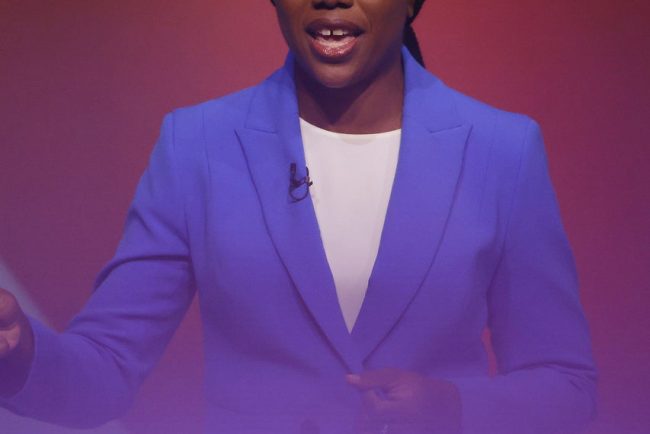
Kemi Badenoch’s Leadership Win Is Historic — But Don’t Call It A Victory For Black Women
It’s been quite the week in politics. As the impact of Donald Trump’s second presidential win reverberates across the globe — and many of us mourn Kamala Harris losing her historic presidential bid — attention is also fixed on the UK, where a Black woman […]
FASHION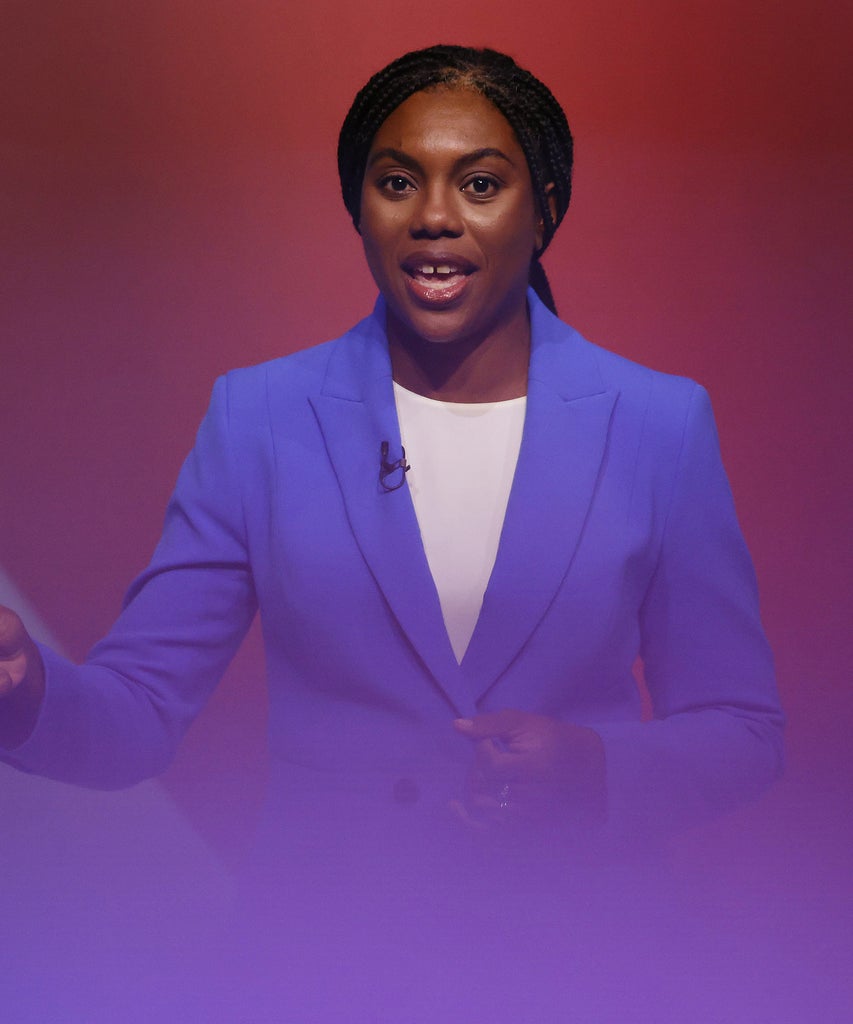
It’s been quite the week in politics. As the impact of Donald Trump’s second presidential win reverberates across the globe — and many of us mourn Kamala Harris losing her historic presidential bid — attention is also fixed on the UK, where a Black woman has risen to lead a major political party for the first time. Yet this milestone offers little solace at a sombre political moment.
Over the weekend, Conservative Party members elected Kemi Badenoch as their new leader, making her the first Black woman to head up a major British political party. Badenoch, a Thatcher idealogue, has been vocal in her opposition to so-called wokeism and identity politics. Following her victory, Labour MP Florence Eshalomi extended her congratulations to Badenoch, writing on X: “From one British Nigerian MP to another British Nigerian MP … Eku ori ire. Your dad would be proud.” For many of us watching, our reaction to the news was a mixture of indifference and disbelief, mainly because Badenoch’s time as an MP and cabinet minister has often been haphazard and divisive, marked by a string of controversial comments that she failed to explain away during her campaign. And yet she won.
Still, it was very much just another day. Until things started getting weird. Black women were told — directly and indirectly — that jokes and memes aside, we should feel good about this appointment. The prime minister called the election of the first Black leader of a Westminster party a “proud moment” for the country. Social media users argued that we should put politics and our differences aside to acknowledge Badenoch’s election as a significant moment for Black women. To some, her election signals a willingness to embrace diverse leadership and is proof that another glass ceiling in British politics has been broken.
Not only does this takeaway not ring true for many of us, it’s also incredibly patronising and reductive. For this to be a true glass ceiling moment, Badenoch would have had to be campaigning on a level playing field, under very normal conditions; she would have had to win based solely on merit and competency. But Badenoch wasn’t elected under normal circumstances. Her appointment arguably has more to do with the limited options available to party members than with her offering a compelling alternative to Keir Starmer’s government.
Let’s rewind to July, when the leadership race kicked off with six contenders: Badenoch, Priti Patel, James Cleverly, Robert Jenrick, Mel Stride and Tom Tugendhat. By October, just three contenders remained: Badenoch, Cleverly (then leading comfortably) and Jenrick. Cleverly lost significant ground and was eliminated in the final MPs’ vote. A popular theory among political analysts is that Cleverly lent votes to another candidate, likely Jenrick, believing he’d make an easier opponent in the final round. If this theory is correct, then the tactic clearly backfired and Cleverly ended up losing more votes than expected. With the Conservative Party reduced to just 121 seats — their smallest parliamentary presence — little miscalculations like this cost big time.
Badenoch’s leadership campaign got off to a rocky start and continued that way until the end. She faced backlash over comments that maternity pay has “gone too far” and is “excessive” and that 10% of civil servants are so ineffective that “they should be in prison”.
In the end, however, none of this controversy mattered. Members were left with two candidates who, in any other election year, arguably wouldn’t have made it this far. Senior Tories who may have been expected to run seemed worn out or uninterested in the thankless task of reshaping the party’s identity after a tumultuous period in government. This left Badenoch — a self-proclaimed straight shooter whose right-wing views on immigration, LGBTQ+ issues and crime admittedly resonate with the Tory faithful, who skew older and are predominantly white men living in southern England — and Jenrick, who appeared to be leaning right in an effort to court votes but was suspected of planning a return to the centre once elected.
It wasn’t much of a choice. Unless we’re suggesting that an average (given the political circumstances) Black candidate can win a leadership contest and that we’re finally free from the expectations of Black excellence, it’s overstated to say that Badenoch has broken a glass ceiling.
When Black women say we want Black women in politics, we’re talking about substantive representation. We want Black women in power who will fight for changes that benefit us as women, who understand the issues we face today.
It’s also hard to imagine party members rallying behind a Black woman if this had been a bid for prime minister, not just party leadership. Looking at this week’s US election results, when it came down to who would run the country, voters decided that a Black woman was a stretch — even when pitted against a convicted felon. Britain may be a different country but it is no post-racial utopia. Ours is a country where a major Tory donor said looking at Labour MP Diane Abbott makes you “want to hate all Black women”, and where Black MPs are mistaken by their colleagues in Westminster for cleaners.
When we consider what Badenoch has said and stands for, it’s deeply patronising to expect Black women to be excited about her appointment or be asked to “put politics aside”. The politics of a politician is the only thing we should be judging them on. How else can we assess their suitability? Their views directly shape their policies, which in turn impact our lives. In September, Badenoch wrote in an article for The Sunday Telegraph that “not all cultures are equally valid” when discussing who should be allowed into the UK. This kind of perspective shapes the laws and rules that govern how people from different backgrounds are treated, ultimately impacting people’s lives by either providing opportunities or limiting them based on cultural biases. If someone in a position of power holds this view, for instance, it might lead to discriminatory immigration policies against certain nationalities. How can we expect Black women, who are from “other” cultures, to feel excited about a politician who insinuates their culture is less valuable than British culture?
In the same Telegraph article, Badenoch wrote: “Our country is not a dormitory for people to come here and make money.” This reinforces the hostile, “nasty” reputation of a faction within the Tory party whose policies have marginalised people of colour in this country for years.
To imply that Black women should be grateful for any Black representation, irrespective of the impact of that representation, is an example of tokenism that falls far short of what we deserve.
Kemi Badenoch’s presence and representation is a symptom of the very neocolonialism that Badenoch says she “doesn’t care” about. It gives the appearance of progress, allowing a person of colour a seat at the table while continuing to ensure they are in the minority, their views reflecting the views of the majority so that they can’t make real change or disrupt the status quo. Political parties on the right have continually put just enough people from marginalised groups in power. It creates the illusion of inclusivity, while the voices of the party faithful remain the loudest.
Let me be explicitly clear: When Black women say we want Black women in politics, we’re talking about substantive representation. We want Black women in power who will fight for changes that benefit us as women, who understand the issues we face today: cuts to public services and regressive welfare measures that have taken more income away from Black women than our white or male peers; unequal pay gaps in the workplace; the poor mental and maternal health outcomes we suffer because of discrimination, among many other issues.
So no, Badenoch’s win is about as exciting as Harris’ loss. If we have Black women in politics who are uninterested in fighting for us (as in Badenoch’s case) or who aren’t trusted to lead and therefore not given a mandate (as in Harris’ case), we won’t get very far. Asking Black women to celebrate Badenoch’s presence in British politics while ignoring the fact that much of what she stands for harms us is absurd.
Like what you see? How about some more R29 goodness, right here?

How Curbside Recycling Works
Humans create a lot of waste, but when you throw something away, how much do… The post How Curbside Recycling Works appeared first on Earth911.
EcoTechHumans create a lot of waste, but when you throw something away, how much do…
The post How Curbside Recycling Works appeared first on Earth911.
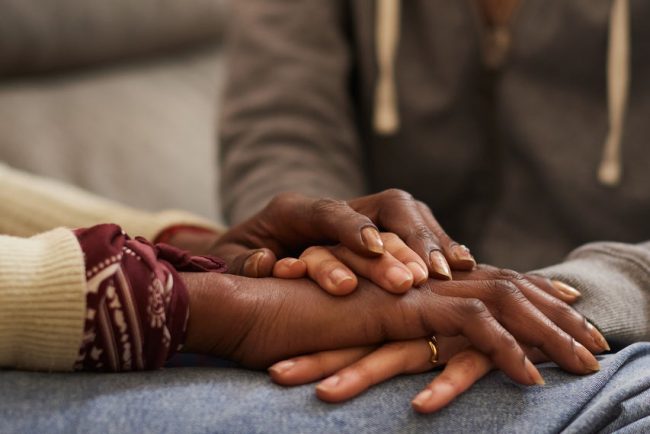
My Mother Was Absent For 20 Years — Our Reconnection Wasn’t What I Imagined
I spent most of my childhood and adolescence wondering how life might have been different had I been raised by my mother. Watching the relationships the women around me shared with their mothers, I felt certain I was missing something—something I deeply desired at that […]
FASHION
I spent most of my childhood and adolescence wondering how life might have been different had I been raised by my mother. Watching the relationships the women around me shared with their mothers, I felt certain I was missing something—something I deeply desired at that time in my life. My faith as a Christian gave me an early sense of what family should feel like, but my experience didn’t match that ideal. Despite my father’s best efforts and the love I received from friends’ mothers, who welcomed me as their own, and from friends themselves, who still offer me love, nurture, and compassion, the truth is that I missed out on a lot. Life probably would have been different if my mother had been present.
Radical acceptance was one of the first techniques I learned in therapy: acknowledging a circumstance for what it is and how it makes you feel, no matter how raw, painful, or ugly. For me, it meant accepting that my mother was absent and that her absence led me to endure certain experiences alone; going through puberty and starting my period at fourteen, developing an attraction to the opposite sex without guidance, and facing milestones like having sex for the first time, then dealing with my first heartbreak without the comfort a mother might offer. I hadn’t realised until therapy that my younger self’s wonderings were filled with pent-up emotion and, as my therapist concluded, a destabilising sense of abandonment.
When I was younger, I couldn’t quite understand my mother’s absence. It’s not as though she was dead; she just wasn’t there. This detail made her absence feel personal, almost like rejection. However, as I’ve matured, my receptiveness to the context has also grown. I wish I could say that learning the ins and outs of the matter took the sting out or undid years of belief, but it didn’t. When I was little, a relationship with my mother was something I desperately wanted and needed, but I never received it. As I transitioned from a girl into a woman, paid a therapist to listen to me cry once a week, and found love in the places and people, the hope of ever having a relationship with my mother faded.
In life, there are certain things you simply grow out of. At 28, I’ve shed so many habits, interests, and versions of myself that I find it hard to connect who I am now with past iterations of myself. Yet I never truly grew out of the sense of abandonment my mother’s absence created. If anything, with every new friend I made or man I dated, the fear of abandonment seemed to cloud how I viewed those connections. The feeling is hard to describe, even for a skilled writer: that fear and constant uncertainty, regardless of reassurance about whether people want you around, and, shamefully, questioning your own lovability.
Abandoning the idea of a relationship felt simpler, especially since what we had was far from the mother-daughter dynamic I’d seen in others all my life.
I was 26 when I reconnected with my mother. By then, she had been physically absent for 20 years, with only the occasional WhatsApp call, often nudged by family members. In my heart, the time for mothering had passed. I was a woman now—smart, bull-headed, and opinionated—and to me, she was little more than a stranger. All the sadness I once felt about our relationship had settled into indifference, leaving me visibly underwhelmed by our reunion. Truthfully, I couldn’t help it. Her presence now felt invasive and alien. Beyond my ingrained respect for elders and the niceties that came with it, there was little for us to discuss. I concluded that we had nothing in common—not even as people.
As a child, I was so hopeful about what our relationship could be. Would we talk about boys and sex? Would she advise me on how to be a better woman and share what to expect from motherhood? Would I turn to her when I felt depleted or like a failure in those areas? Admittedly, while I presented it as indifference, what I truly felt was disappointment. I spent most of my childhood and adolescence wondering, and it was to no avail. I didn’t really know this woman and she didn’t know me.
Earlier this year, a close friend held my phone in her hand. I’m unsure why she had it, but I remember her announcing, “Your mum is calling.” I replied, “I’ll call her back,” but I never did. As harsh as it sounds, after our reunion, I distanced myself completely. It had been months since I last answered my mother’s calls or texts. The thought of any interaction triggered emotional labour that I was unwilling to do. Funnily enough, I thought this route was completely normal and logical, often dismissing concerns and advice from friends and family who perceived my indifference to be unhealthy. I was frequently advised to talk things through with my mother, to tell her how I feel and get it off my chest. However, I was unyielding. In my mind, I had come to the end of that chapter. My mother wasn’t there when I needed her most, and so it seemed rational to withhold any further involvement in the life I was building. Abandoning the idea of a relationship felt simpler, especially since what we had was far from the mother-daughter dynamic I’d seen in others all my life.
I carried on this way for some time, and in all honesty, I was unmoved when family members reported my mother’s upset at my complete withdrawal. Why was it my responsibility? What did I really owe her? After all, wasn’t I the child? Looking back, I find this line of questioning almost comical. After all this talk of becoming a woman, this is the question I anchored my decision on. It wasn’t as though my mother wasn’t trying. She called, texted, and checked in with third parties when I failed to respond. Even after all my therapy sessions, adoptive maternal love, and carefully curated self-esteem, I was still wrapped up in the past, still hoping that my childhood fantasies of connection and warmth would somehow become reality. Yet, I made little to no effort to achieve this.
It wasn’t until I finally picked up The Purpose Driven Life written by pastor Rick Warren that I truly began to reconsider my stance. Although I’d felt fully justified in my decision to cut ties, a quiet part of me had always wondered if I’d been too hard-hearted, as friends and family had suggested. For a long time, I dismissed their concerns—I simply didn’t see things that way. But as I read through chapters like “You Are Not an Accident,” “Transformed by Trouble,” and “Understanding Your Shape,” I felt challenged. These chapters confronted my mindset and urged me to look beyond the pain and resentment I’d harboured for so long. For the first time, I could see my own hard-heartedness, not as justifiable self-protection, but as a barrier.
As I finished the book, I realised that I had a choice to make. I could continue holding onto the hurt and resentment, justifying my emotional distance as a form of self-protection. Or I could open myself to the possibility of healing and, perhaps, a different kind of relationship with my mother. One that didn’t need to fulfil childhood dreams but could at least bring peace to my present. I knew this shift wouldn’t mean erasing the past or dismissing the impact of her absence. Instead, it offered me something new and possibly wonderful.
A relationship with my mother that was free of expectations yet full of so much potential.
Like what you see? How about some more R29 goodness, right here?
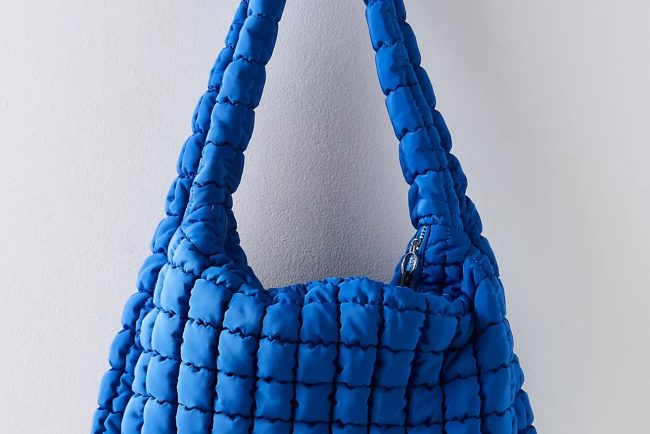
Free People Has Your Winter Wardrobe Sorted
We know our readers love a good Free People find… as do our editors. We’re always more than happy to keep tabs on the best new Free People styles to shop. When new releases can be overwhelming, we’re here to bring you the best-of-the-best options worth your […]
FASHIONWe know our readers love a good Free People find… as do our editors. We’re always more than happy to keep tabs on the best new Free People styles to shop. When new releases can be overwhelming, we’re here to bring you the best-of-the-best options worth your attention and money.
And now that winter is almost officially here, it’s a great time to take a deep dive into your closet to see what you need to re-stock. Do you need a new thick, winter coat? Maybe a new cosy knit to hibernate in? A new activewear set to brave winter workouts? What about your hat, scarf and gloves situation? Free People has fresh new styles that fit the bill. From clothing to accessories, we’ve put together a list of must-haves from Free People’s new arrivals section.
You’ll find a mix of products, many from Free People’s fan-favourite collections like FP Movement, We The Free and Free-est, to suit whatever vibe you’re going for this winter. Once you’ve perused our roundup, only one question will remain: How to choose your favourite?
All linked products are independently selected by our editors. If you purchase any of these products, we may earn a commission.
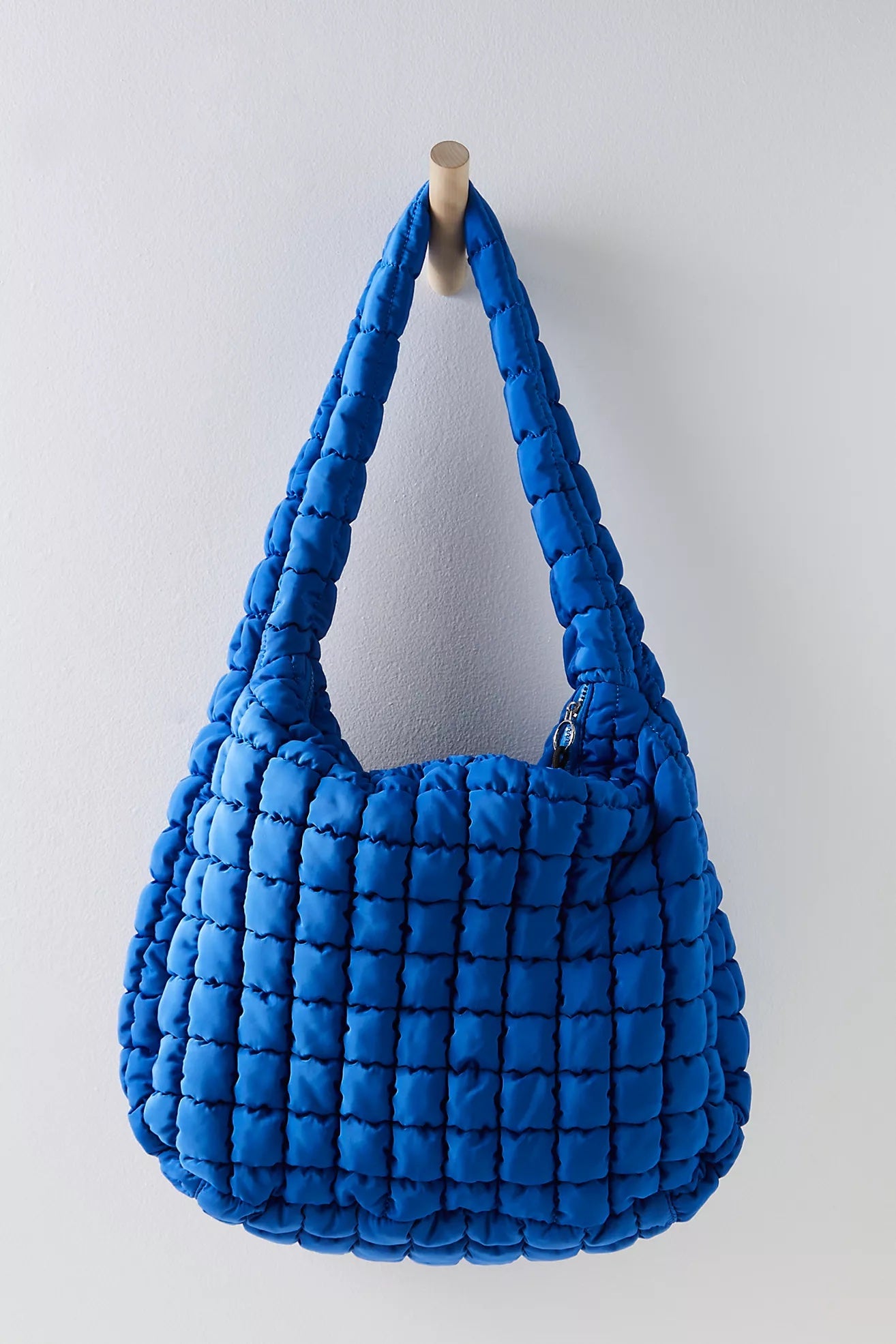
FP Movement Quilted Carryall, £68
FP Movement’s carryall bag is perhaps the collection’s most beloved piece. It’s no surprise why. This bag holds so much: your laptop, book, lunchbox and umbrella for the commute; gym kit; weekend staycation essentials. It’s designed with lots of handy pockets, too, which are perfect for stashing away smaller items. It’s also available in so many different shades (32 and counting!), from vivid brights to pastels and earthy neutrals. This bold cobalt blue is a bestseller and a welcome pop of colour during winter.
FP Movement Quilted Carryall Bag, $, available at Free People
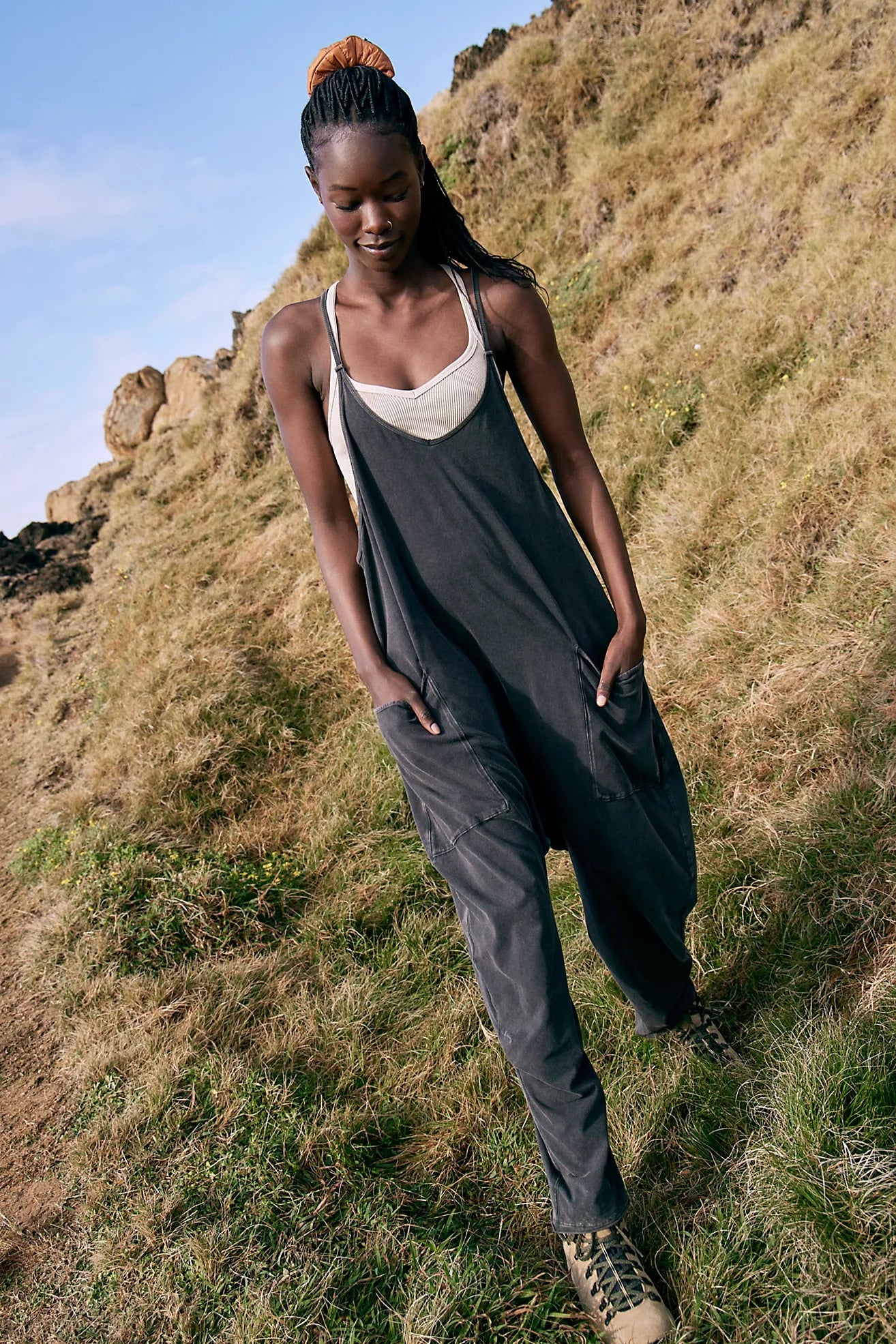
Hot Shot Collection Hot Shot Onesie, £70
When you don’t have the energy to put together an outfit, this onesie has your back. It’s another Free People bestseller, with a 4.7-star rating and over 2500 reviews. Customers rate it for its comfort and versatility, and describe owning the same style in numerous shades.
Hot Shot Collection Hot Shot Onesie, $, available at Free People
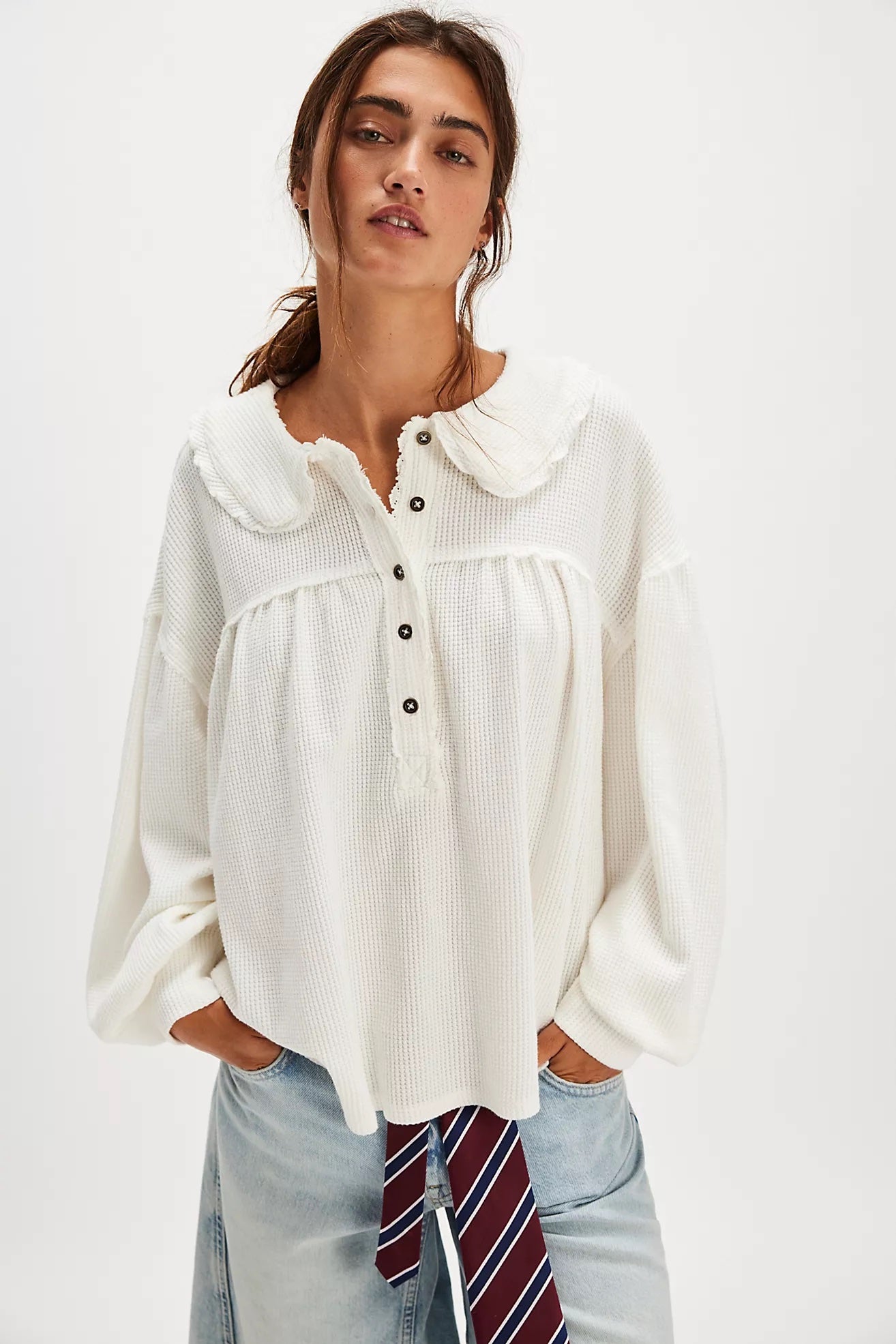
We The Free Queen Of Hearts Thermal, £98
Upgrade your usual thermal layer with this cute cottagecore inspired design, made in 100% cotton. The Peter Pan collar will look great peeking out under your knitwear and you’ll keep warm and cosy — genius!
We The Free Queen Of Hearts Thermal, $, available at Free People
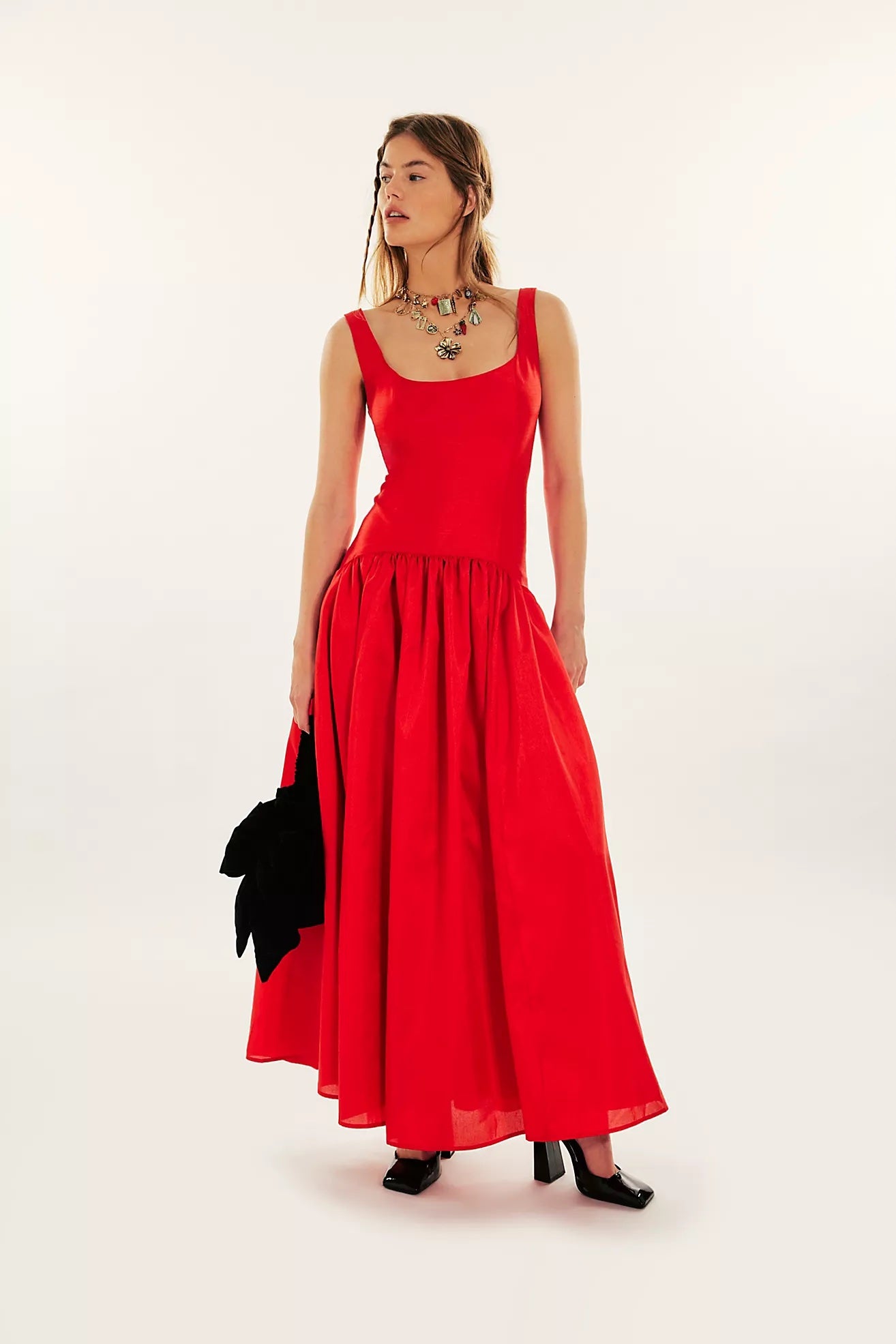
Hutch The Ridge Dress, £298
Did someone say they were looking for the perfect winter wedding guest dress?
Hutch The Ridge Dress, $, available at Free People

FP Movement Pippa Packable Puffer Jacket, £188
This is an unanimous favourite amount team R29. We love it for its practicality (you can fold it away when not using, use it as a pillow when travelling), its comfort (its surprisingly warm despite being a thinner puffer), and its versatility (you can easily dress it up or down). For example, when testing this puffer out, our Fashion Editor Ebony styled her jacket with a pleated midi skirt and knee-high boots, whilst others layered it over activewear for winter work outs. This is another item available in an array of colours — currently, 24 shades are available.
FP Movement Pippa Packable Puffer Jacket, $, available at Free People
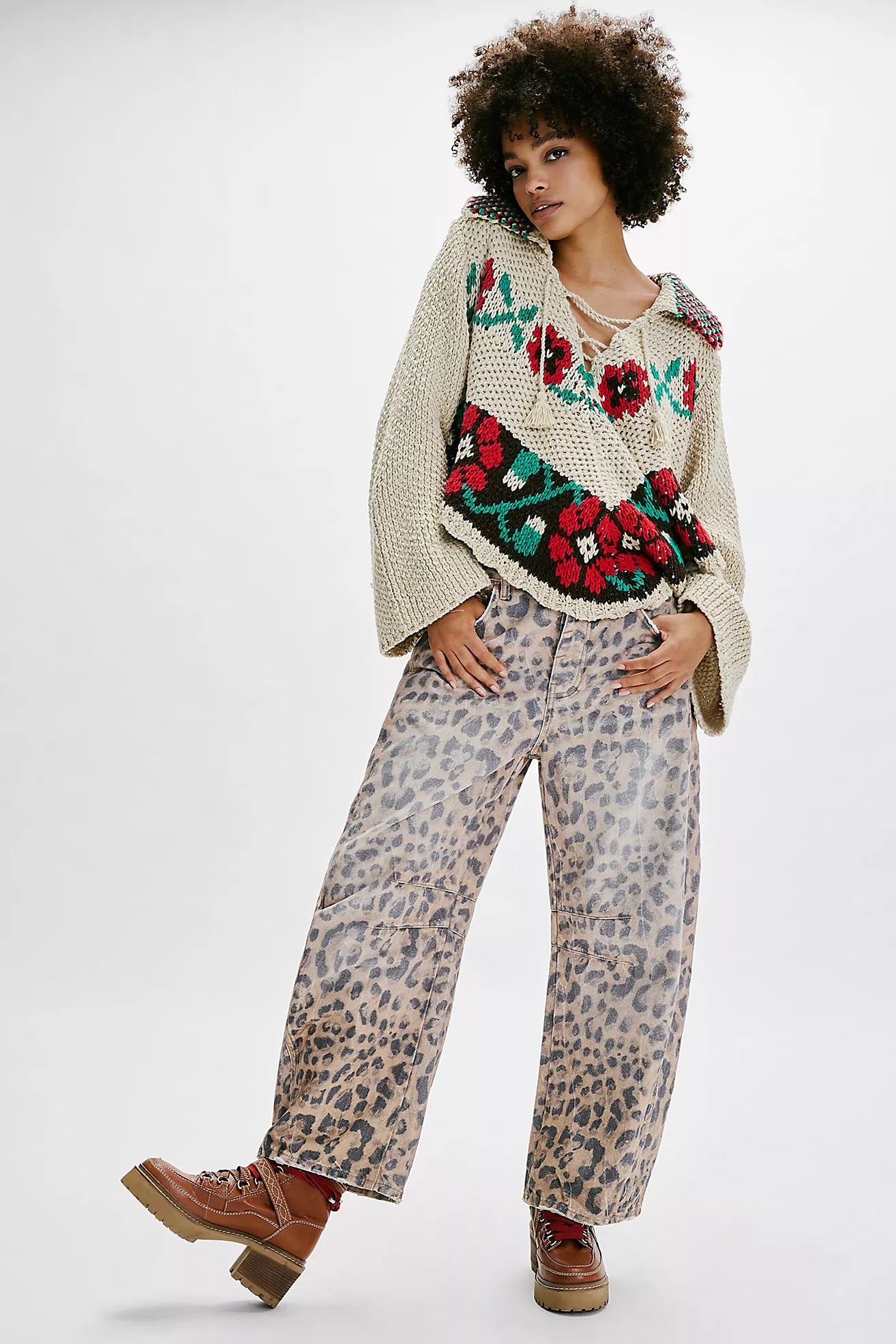
We The Free Good Luck Printed Barrel Jeans, £118
These jeans tick off two major autumn/winter trends, one that dominated last year and is set to continue to do so — leopard print — and the second, a newer arrival: The barrel leg silhouette. Having fun bottoms is also a great fix for winter. Too cold to care about fashion? No problem.
We The Free Good Luck Printed Barrel Jeans, $, available at Free People
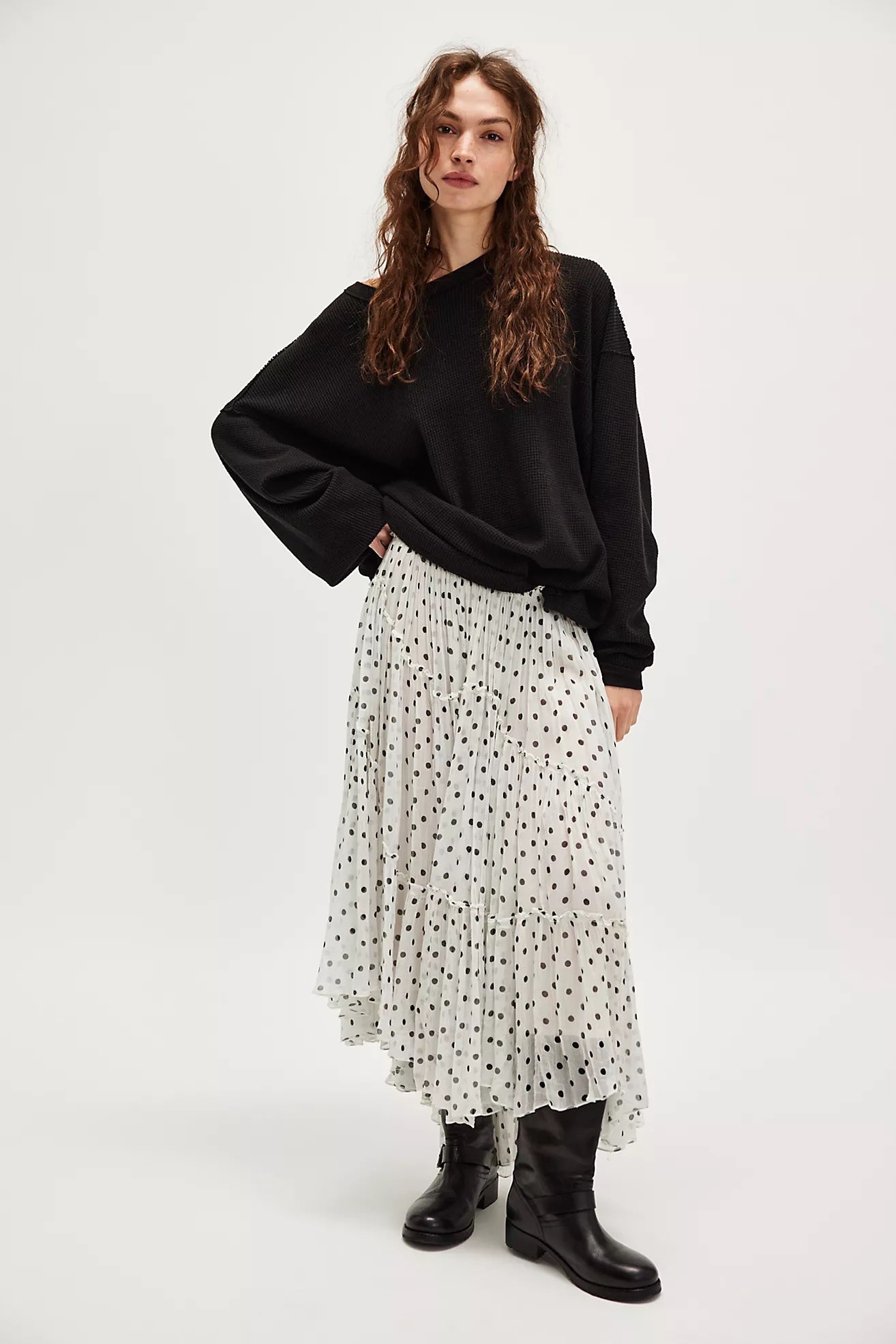
FP One Ember Printed Midi Skirt, £118
In case you missed it, polka dot prints made a return this year. We love this easy breezy update on the retro classic — it’s a piece that will serve you well throughout all seasons, with a chunky knit and boots now, and ballet flats and a cami top come summer.
FP One Ember Printed Midi Skirt, $, available at Free People
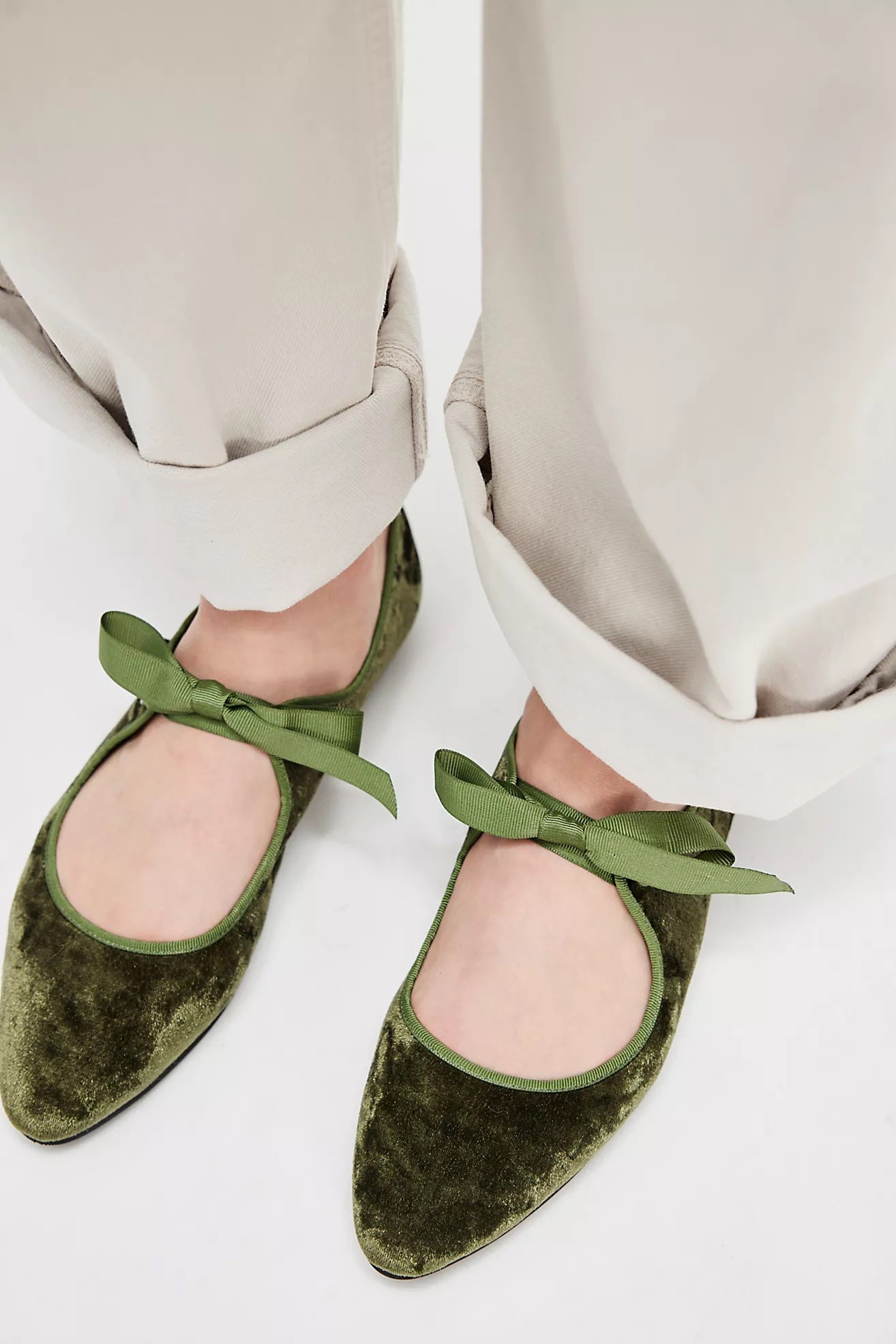
Intentionally Blank Tied With A Bow Ballet Flats, £148
Ballet flats are undoubtedly the It Shoe of the year. We can’t help but obsess over this pair. Everything about them just screams winter decadence: the forest green colour, the rich velvet, the present-like bow!
Intentionally Blank Tied With A Bow Ballet Flats, $, available at Free People
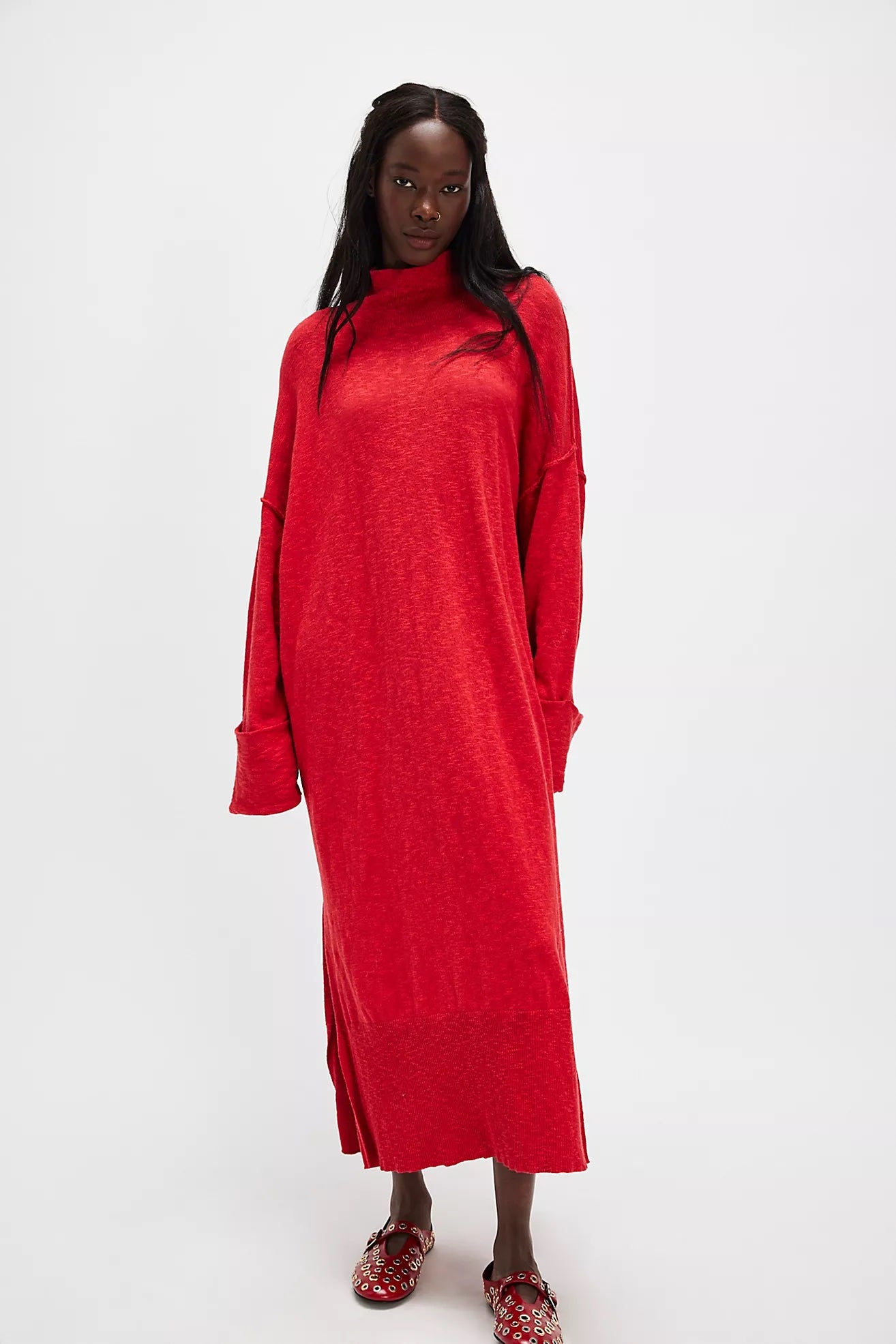
free-est Faye Sweater Midi, £88
Catch us wearing this knit dress all winter long (probably with thermals and ultra thick tights underneath).
free-est Faye Sweater Midi, $, available at Free People
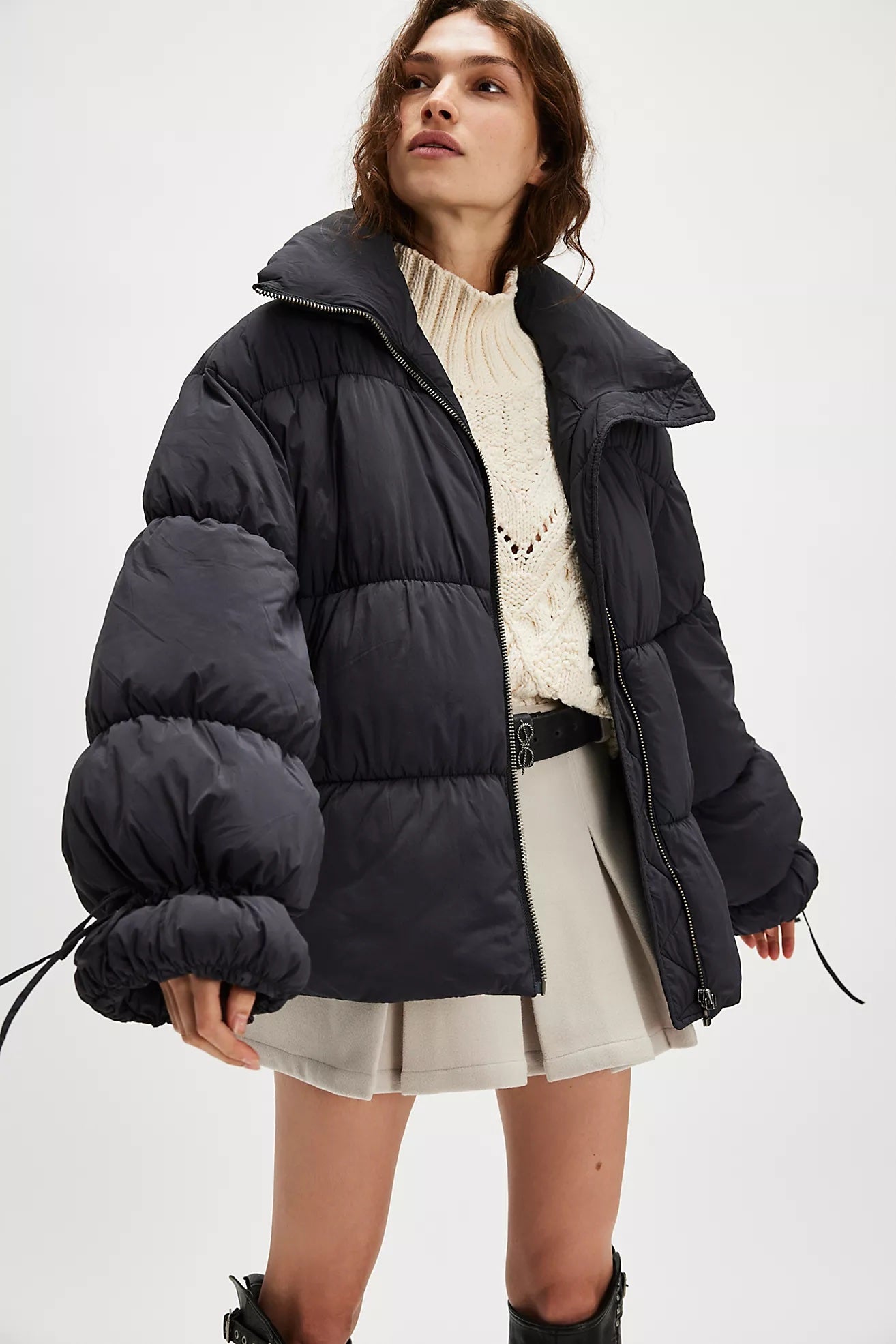
Solid Cotton Candy Puffer, £158
If you’re after a properly thick puffer that won’t make you look like the Michelin Man, our money is on this one — we love the cool arm detailing. Commenters say it runs large though so best to size down with this one.
Free People Solid Cotton Candy Puffer, $, available at Free People
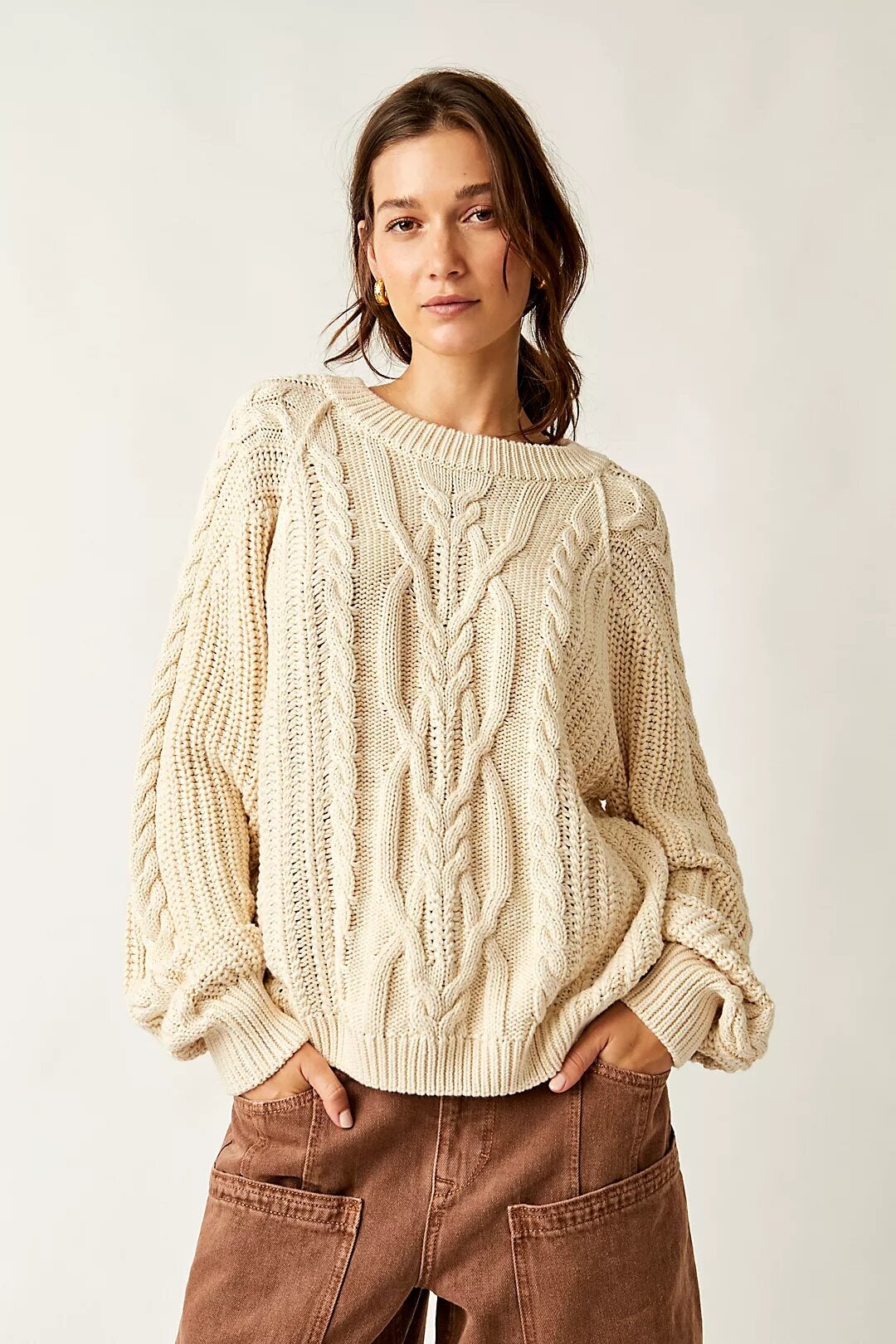
Free People Frankie Cable Sweater, £88
If, like us, Rory Gilmore’s perfectly slouchy, oversized, cream cable-knit jumper lives rent-free in your mind, then this one’s for you. Accessorise with a steaming cup of coffee and a stack of your favourite books.
Free People Frankie Cable Sweater, $, available at Free People
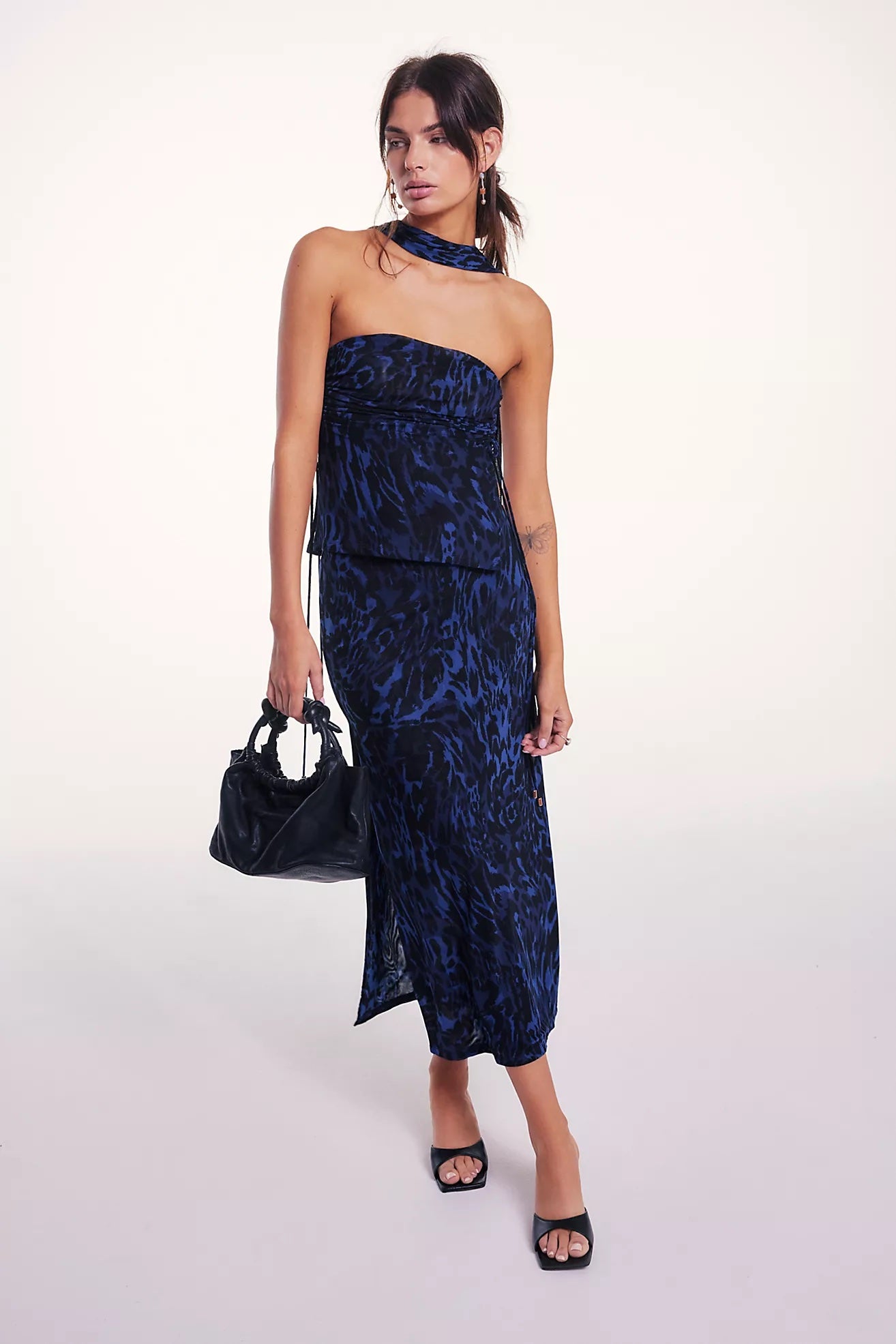
Free People Tempest Co-Ord, £140
Date night dressing just got so much easier with this co-ord, complete a matching accessory — the printed scarf.
Free People Tempest Set, $, available at Free People

FP Movement Good Karma Onesie, £88
Whatever we’re wearing this winter, you best believe we have one of these bad boys underneath for extra warmth.
FP Movement Good Karma Onesie, $, available at Free People
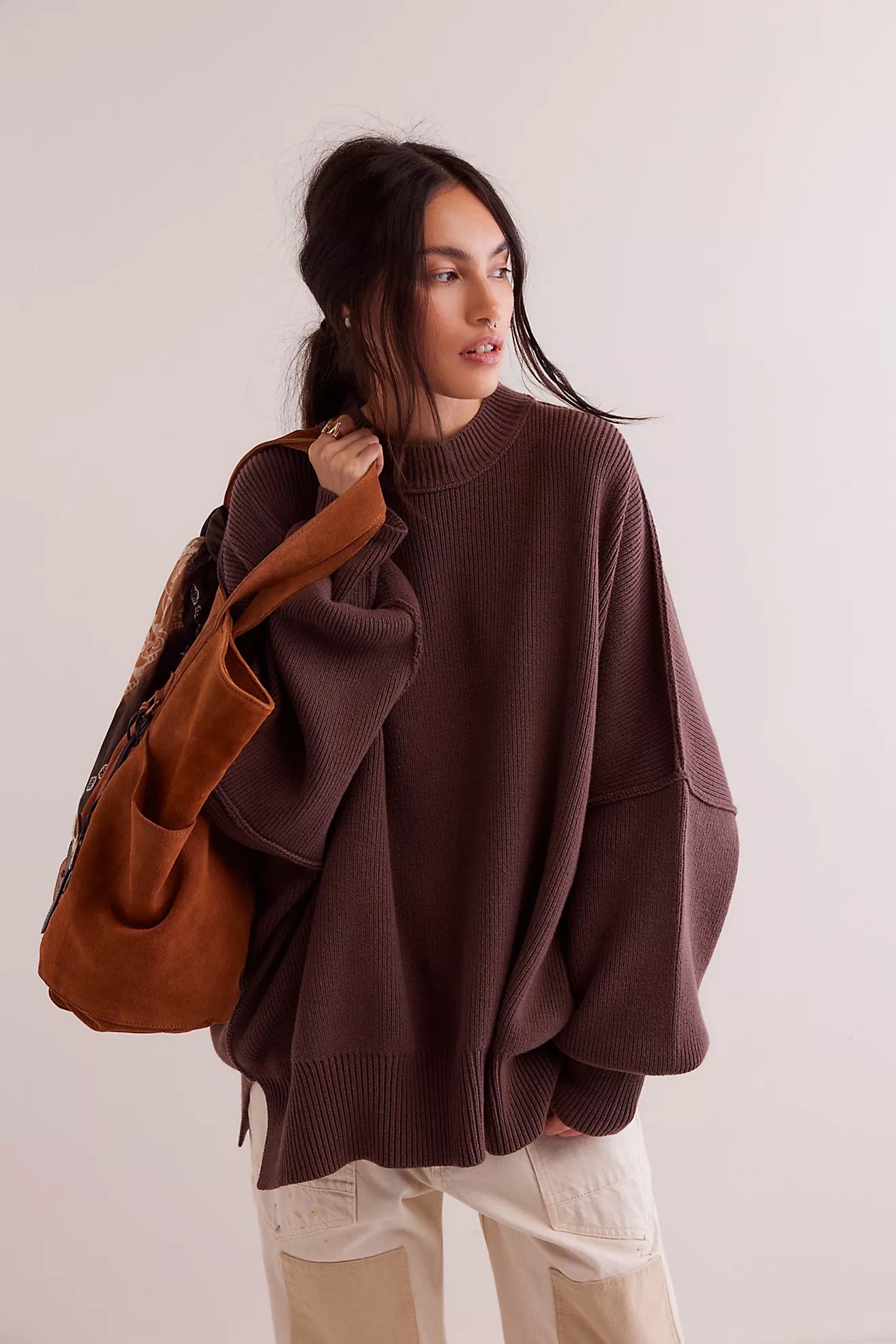
Free People Easy Street Tunic, £118
When it’s dark and cold outside, there’s only one thing we want to be wearing: a big, oversized jumper that’s basically a hug in fashion form. This one is rated 4.6 out of 5-stars and over 550 reviews, with many customers describing fourth or fifth purchases in different colours.
Free People Easy Street Tunic, $, available at Free People

Ellie Scarf Wrap Kimono, £88
Little Red Riding Hood but make it fashion — this is one of those pieces that does it all: It’s a ultra cosy knit, cape combined with a hood and a scarf, so it’ll keep pretty much all your top half warm and toasty. Plus, it has pockets for freezing fingers.
Free People Ellie Scarf Wrap Kimono, $, available at Free People
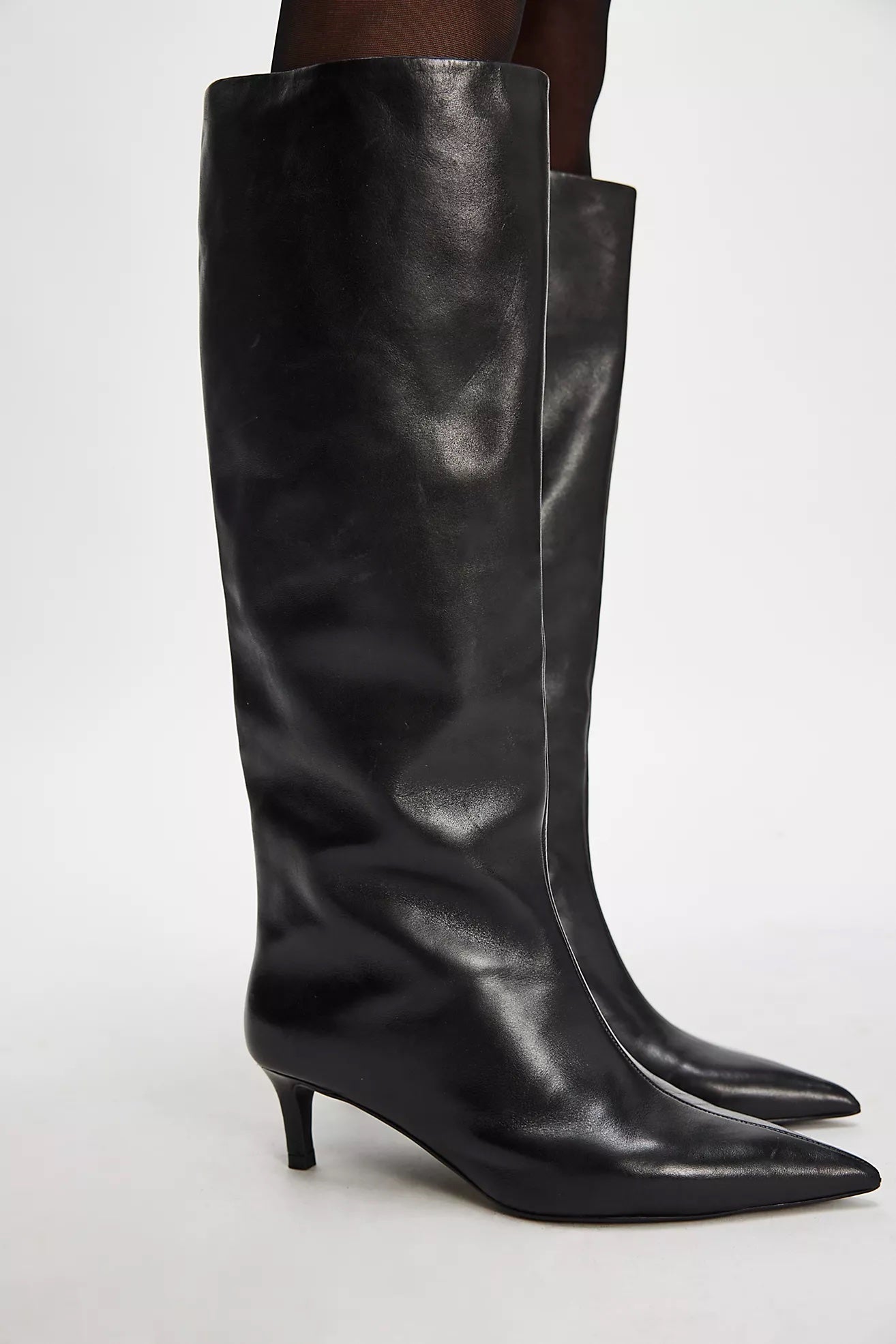
Kiki Kitten Heel Boots, £228
Need a more dressed-up shoe that won’t leave your toes frozen? Try these sleek kitten-heeled boots.
FP Collection Kiki Kitten Heel Boots, $, available at Free People
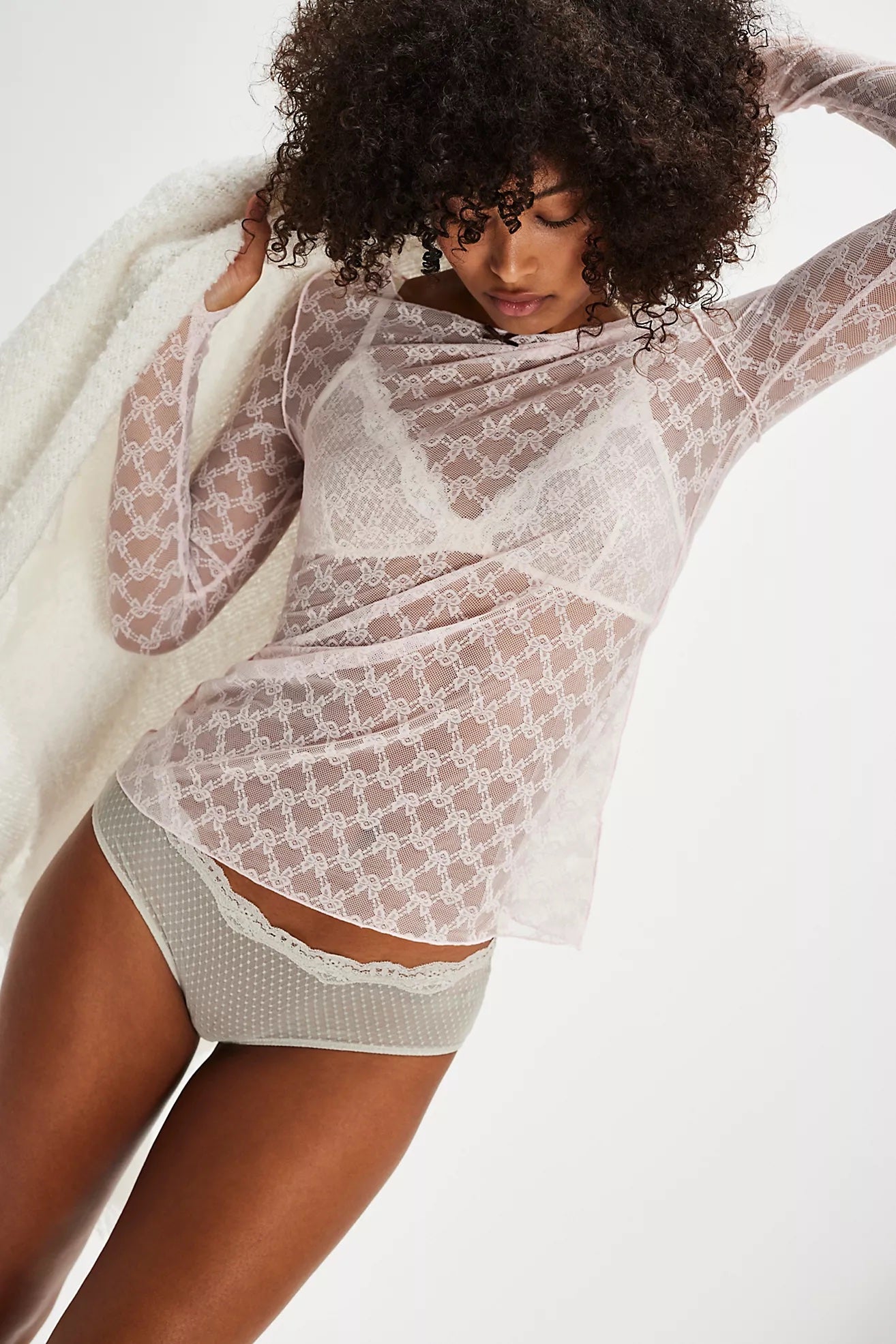
Intimately From Me To You Long Sleeve, £40
It may sound counterintuitive, but sheer lace or mesh tops like this are great for winter. Trust us, you can layer them over your basic turtlenecks or thermals to spice up your everyday look, or layer them under party dresses at night.
Intimately From Me To You Long Sleeve, $, available at Free People
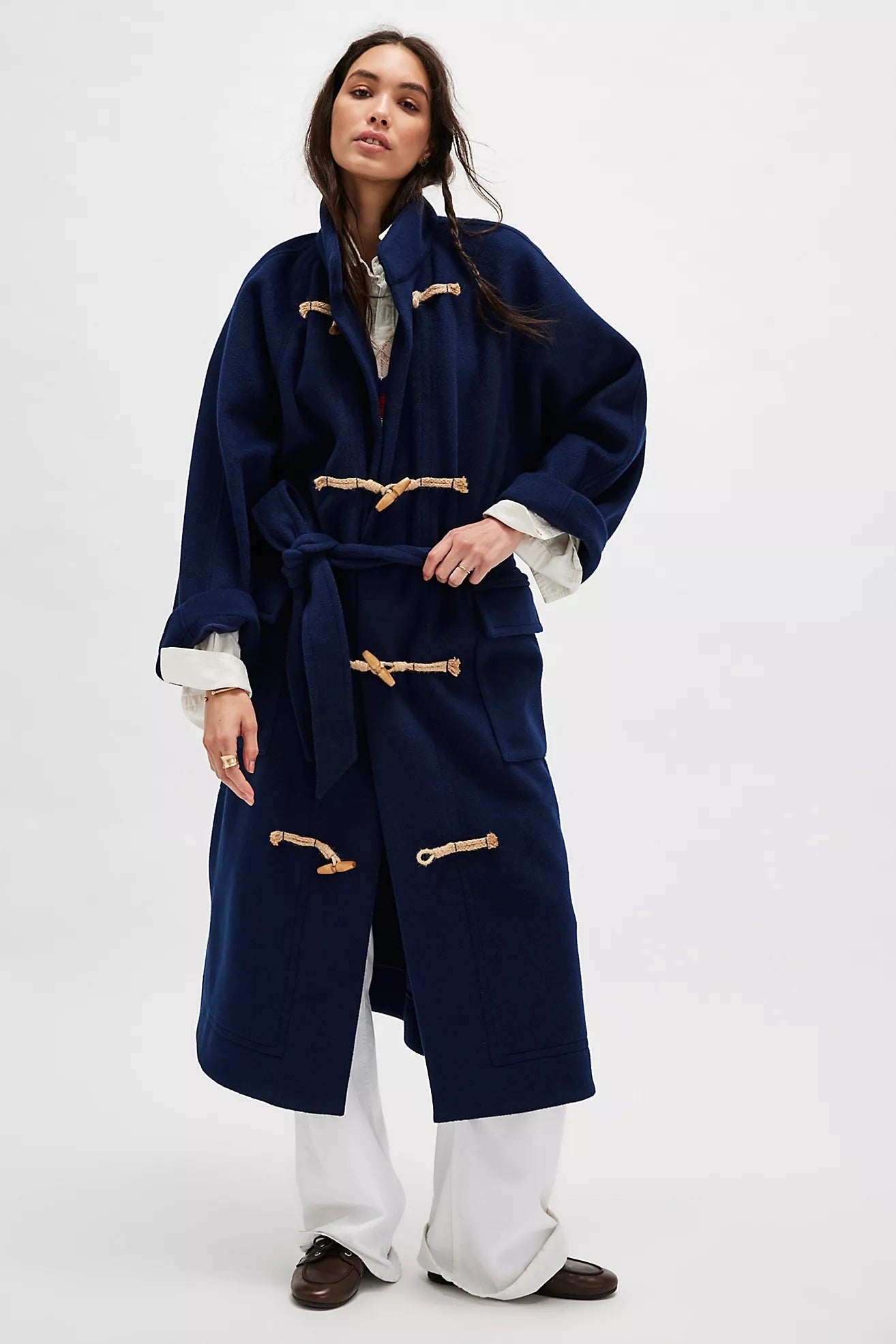
Free People Alma Duffle Coat, £248
If the thought of leaving your warm, cosy bed on a winter’s morning sends shivers down your spine, this is the coat for you. It’s basically just like wearing your dressing gown out, except in a chic, socially acceptable way.
Free People Alma Duffle Coat, $, available at Free People
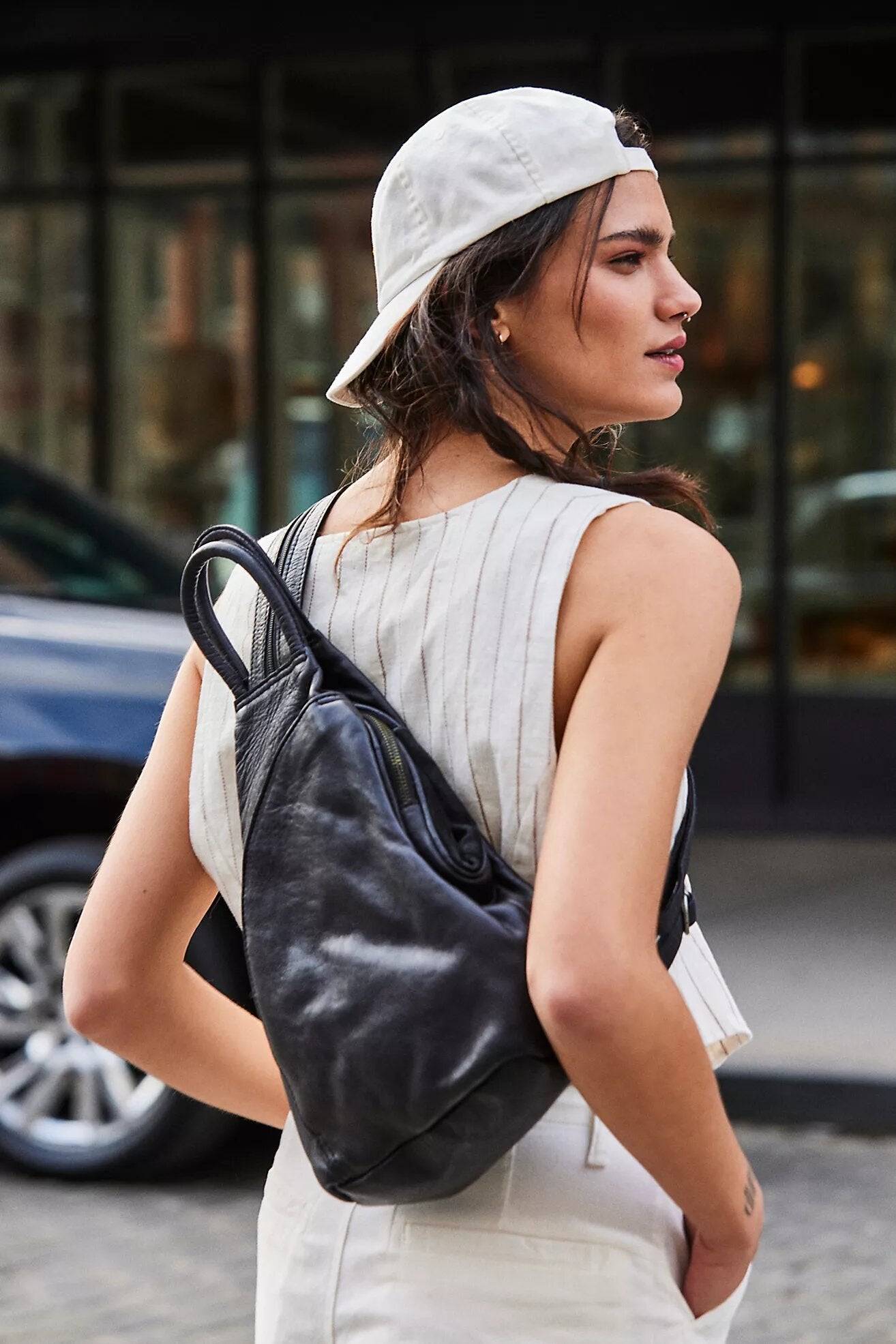
We The Free Soho Convertible Sling, £108
Whether you’re prepping for a festival, a holiday or a day in the city, you need this bag in your life. It switches seamlessly from a crossbody sling to a mini backpack, and the soft leather will only get better with age.
We The Free Soho Convertible Sling, $, available at Free People

Free-est Hailee Sweater Co-Ord, £118
This waffle knit set is light enough to keep you cool on hot days, but also plenty cosy for waiting out summer showers.
free-est Hailee Sweater Co-Ord, $, available at Free People

free-est Hailee Sweater Co-Ord, £118
Nothing shouts autumn like a cosy lounge co-ord in a warm, berry red. This is what you want to wear as you start your annual Gilmore Girls binge.
free-est Hailee Sweater Co-Ord, $, available at Free People

FP Movement Righteous Runsie, £88
FP Movement’s bestselling workout onesie has been updated with new colour ways, like this sweet baby blue. That’s plenty motivation to get us moving this summer — if only to grab an ice coffee and gossip with our friends in the park.
FP Movement Righteous Runsie, $, available at Free People

FP Movement Timko Onesie, £140
Everyone has lazy days and that’s what onesies are made for. Throw on this breezy cotton blend one piece on the days that you just can’t even, but still want to look stylish. Bonus points for the easy button easy button closure and trendy, barrel-style legs.
Free People Timko Onesie, $, available at Free People
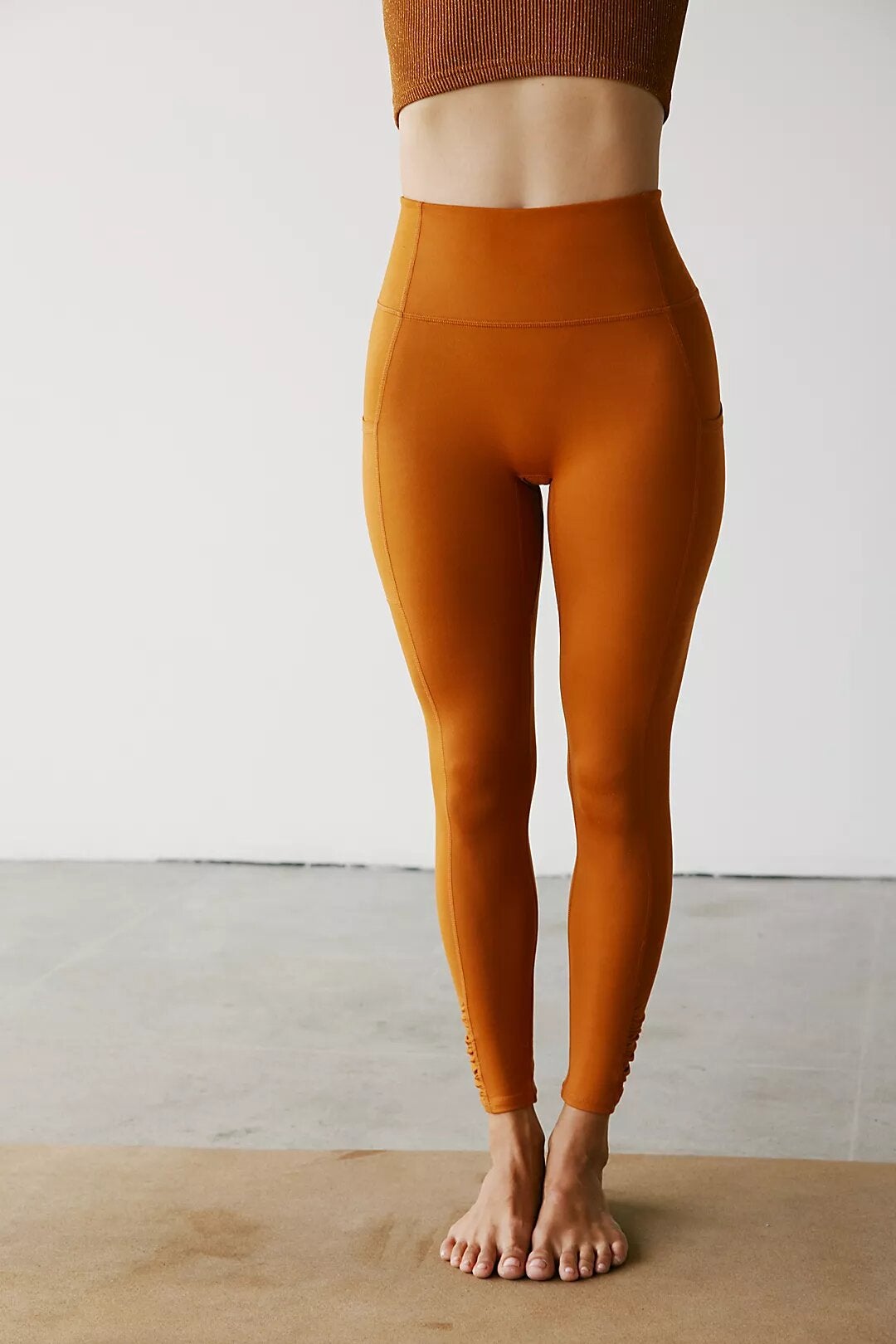
FP Movement Out Of Your League Leggings, £88
They may be expensive but FP Movement’s leggings are well worth it. This pair is designed to fit like a glove, with four-way stretch and a mid-to-low compression that’s perfect for yoga or low-impact activities. Alternatively, they’re buttery soft and silky enough to wear just for mooching around the house. Our favourite features are the high waist, side pockets and the ruching at the ankles (and this pumpkin spice shade, which just screams autumn).
FP Movement Out Of Your League Leggings, $, available at Free People
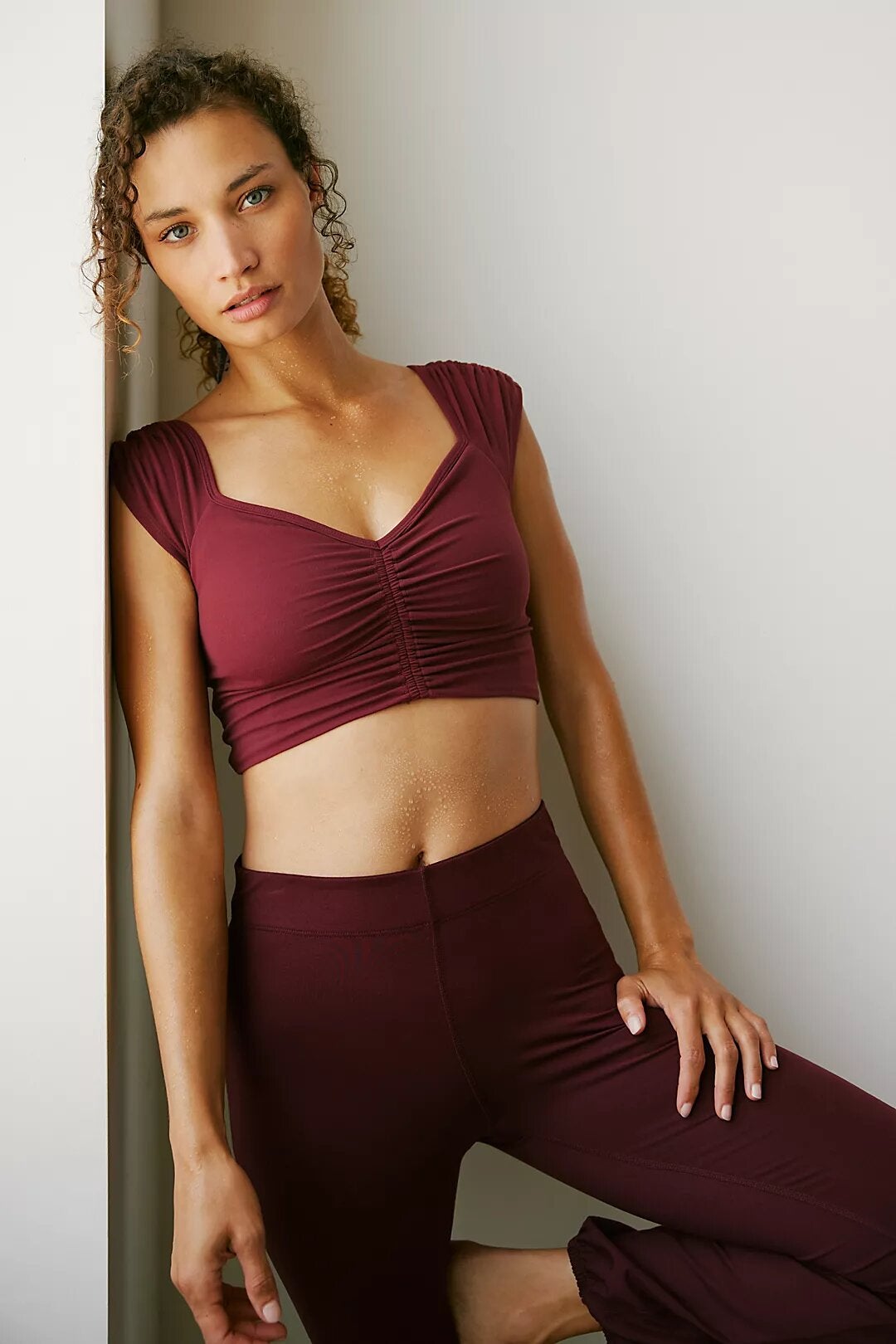
FP Movement Breathe Deeper Crop Tank, £44
We love a fashion item that doubles up so let us introduce you to our latest obsession: an FP Movement crop that works hard for your yoga workout but also looks great with a high-waisted skirt and biker boots for a night out.
FP Movement Breathe Deeper Crop Tank, $, available at Free People
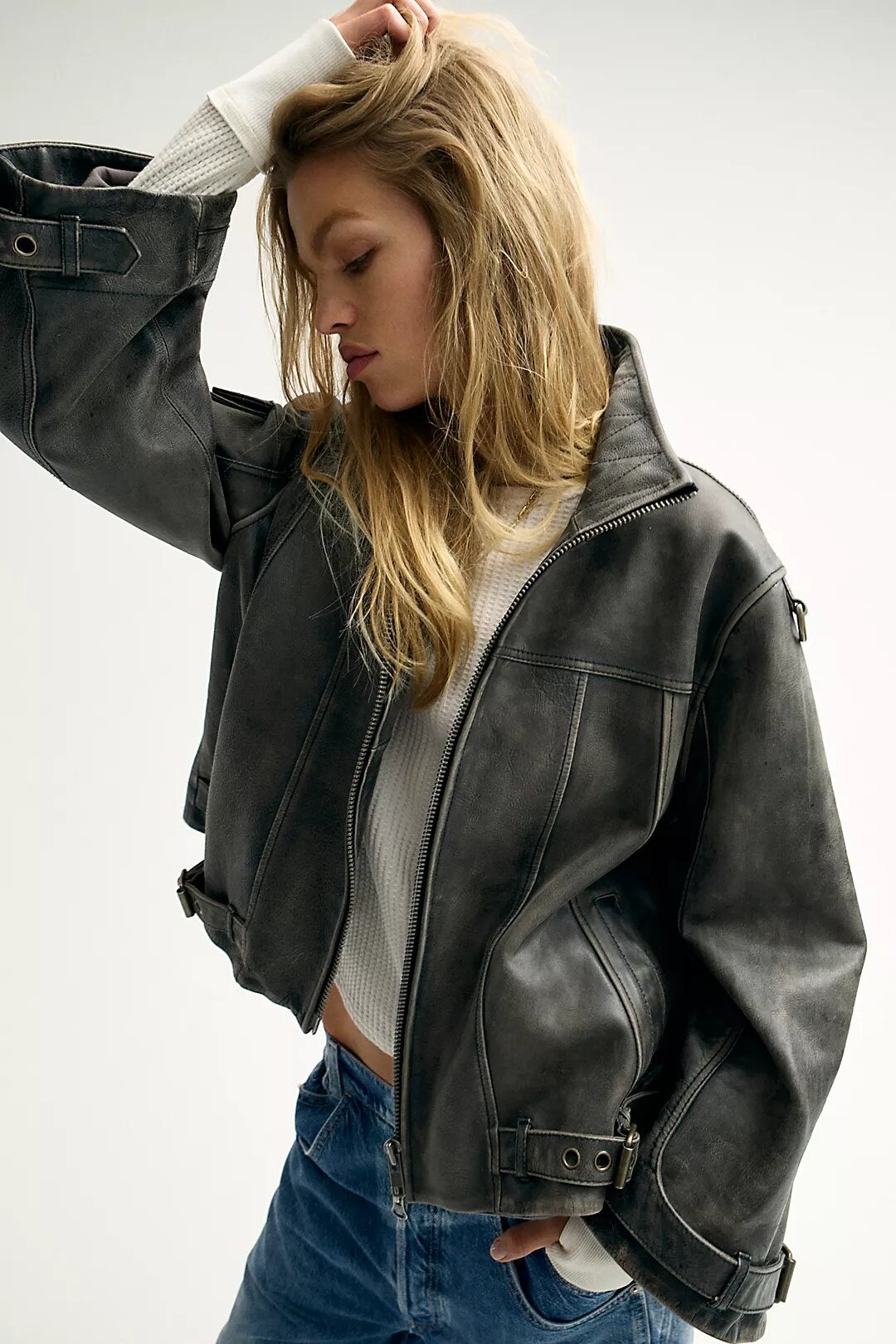
We The Free Skyline Leather Jacket, £700
The search for the distressed, slouchy, vintage leather jacket of your dreams ends now.
We The Free Skyline Leather Jacket, $, available at Free People

FP Movement Singin’ In The Rain Packable Jacket, £158
A packable raincoat is key for beating those summer showers — especially at a festival when packing space is vital. FP Movement’s Singin’ In The Rain Jacket is boxy and loose enough to allow for plenty of layers underneath without compromising on style.
FP Movement Singin’ In The Rain Packable Jacket, $, available at Free People
Like what you see? How about some more R29 goodness, right here?
Free People Pippa Packable Puffer Review 2024
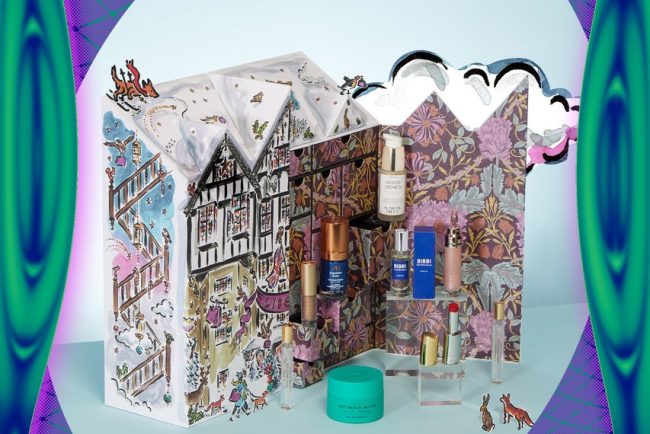
The Best Beauty Advent Calendars For Christmas 2024 So Far
.disclaimer{width:90%;margin-bottom:1rem}.disclaimer__lines{width:100%;margin:0 auto;border-bottom:1px solid #999;padding:0;max-width:150px}.disclaimer__copy{width:100%;max-width:355px;font-family:Brown Regular,sans-serif;font-size:.9rem;font-weight:300;line-height:1.3em;color:#333;padding:0 0 .4rem;margin:1rem auto;text-align:center} All linked products are independently selected by our editors. If you purchase any of these products, we may earn a commission. Some might think it’s far too early to be talking about Christmas, and they’re probably right; […]
FASHION.disclaimer{width:90%;margin-bottom:1rem}.disclaimer__lines{width:100%;margin:0 auto;border-bottom:1px solid #999;padding:0;max-width:150px}.disclaimer__copy{width:100%;max-width:355px;font-family:Brown Regular,sans-serif;font-size:.9rem;font-weight:300;line-height:1.3em;color:#333;padding:0 0 .4rem;margin:1rem auto;text-align:center}
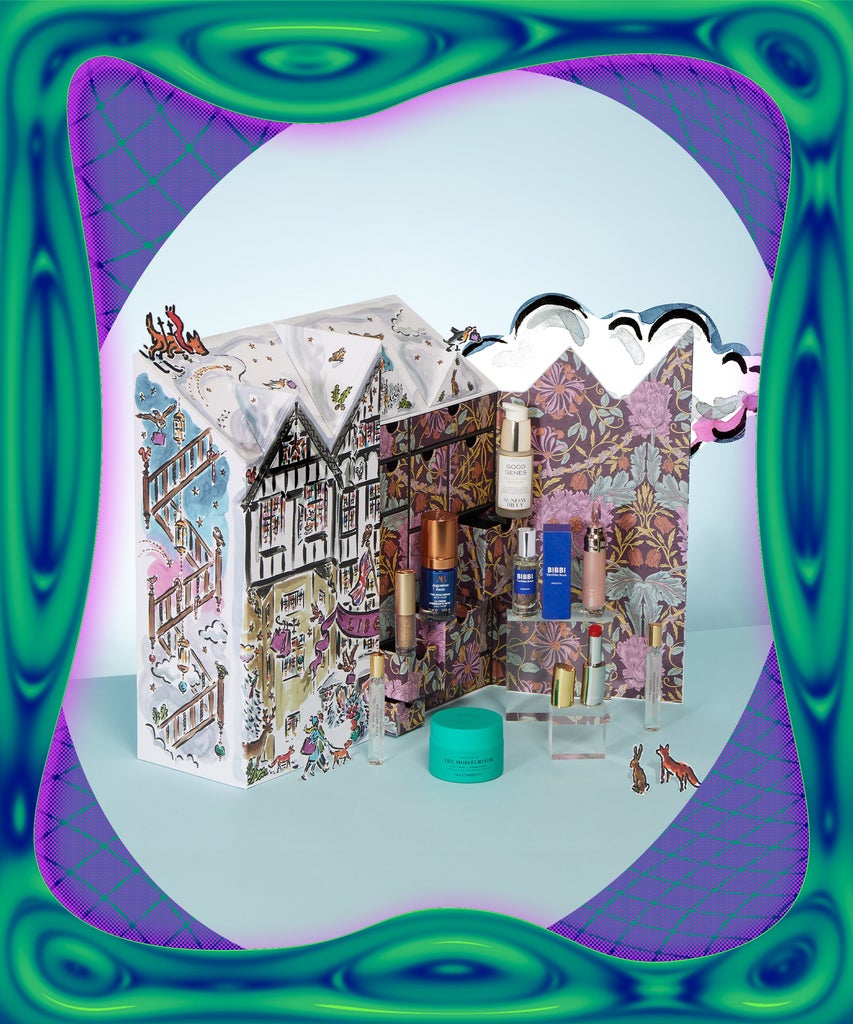
Some might think it’s far too early to be talking about Christmas, and they’re probably right; just not where beauty advent calendars are concerned. Though we’re a while away from the big event itself, it’s no secret that your favourite beauty brands have been busy curating the ultimate mix of products and gifts to stuff inside theirs, and believe it or not, a handful of beauty advent calendars are already available to buy.
From Harrods and Fortnum & Mason to Charlotte Tilbury and Cult Beauty, this year’s offerings are shaping up to be bigger and better than ever before. Besides Instagram-worthy exteriors (looking at you, Liberty), we’re talking more value for money and boxes or drawers that’ll become keepsakes or storage for your beauty stash.
Whether you’re treating yourself or a loved one this festive season, here are the best beauty advent calendars for 2024 so far.
Jo Malone Advent Calendar 2024, £360
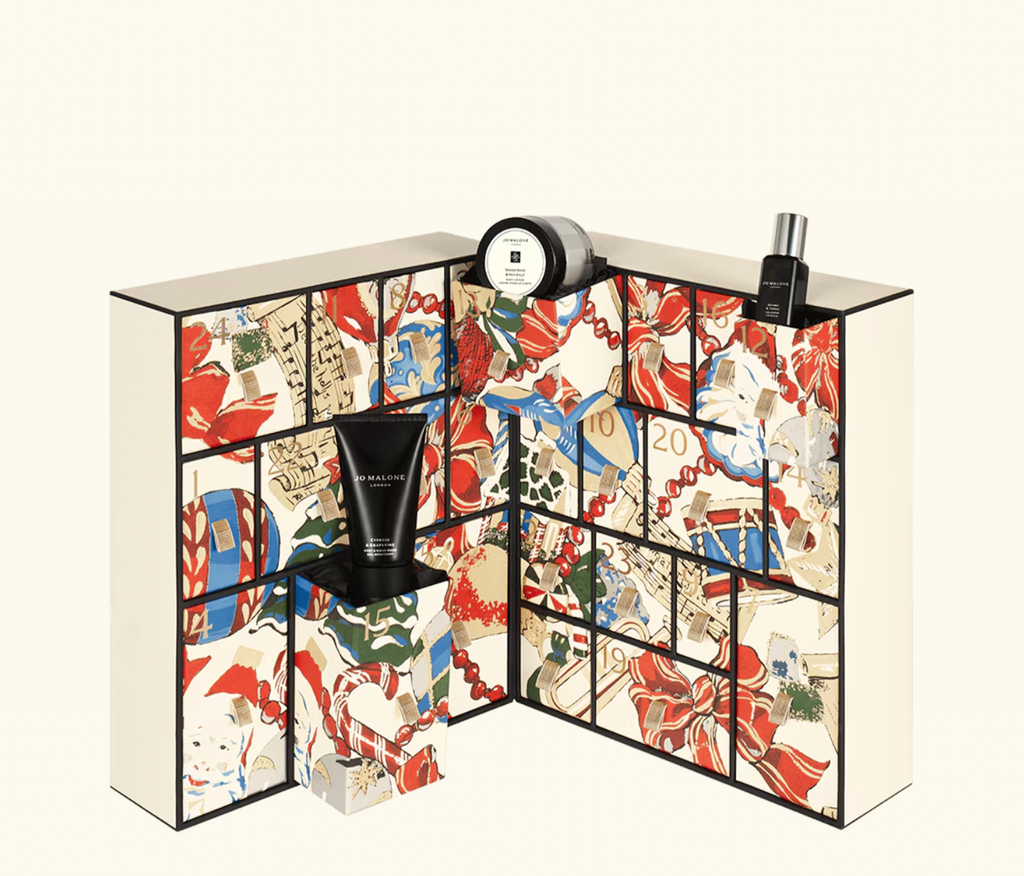
No-one does the holidays quite like Jo Malone. Its beautifully decorated advent calendar contains 25 colognes, candles and bath and body products in iconic scents like Wood Sage & Sea Salt and Orange Bitters.
Free People 2024 FP Beauty Advent Calendar, £140
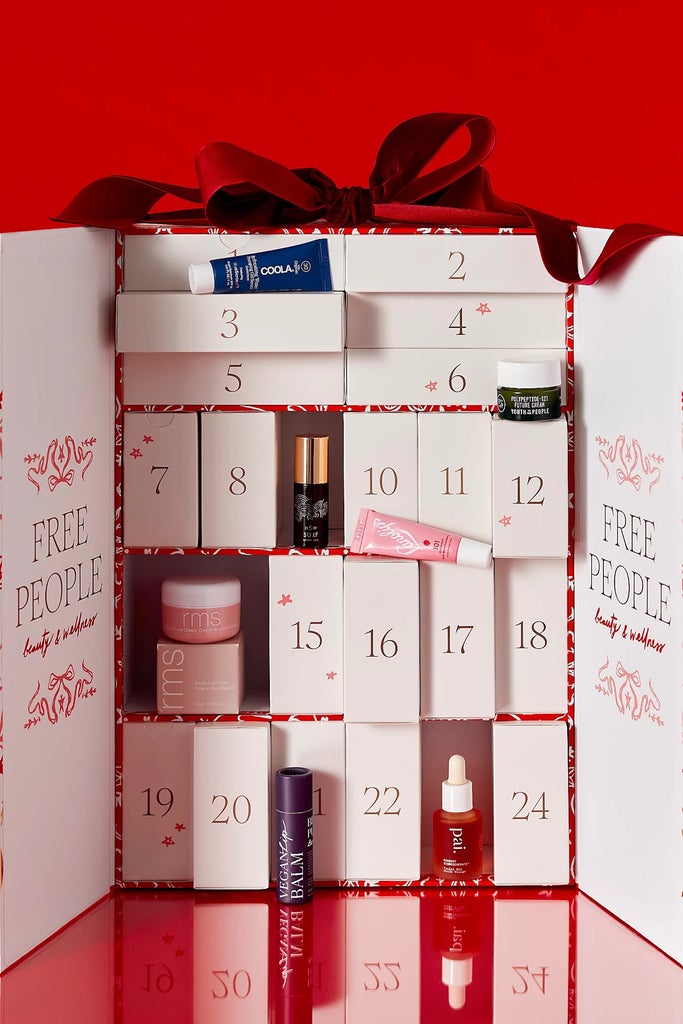
There are some seriously impressive brands to be discovered inside Free People’s 2024 beauty advent calendar this year: DedCool, Supergoop!, Rahua and Ellis Brooklyn are just a few — and you won’t be left wanting. From fragrance to skincare, this calendar has it all.
Sephora Advent Calendar 2024, £199
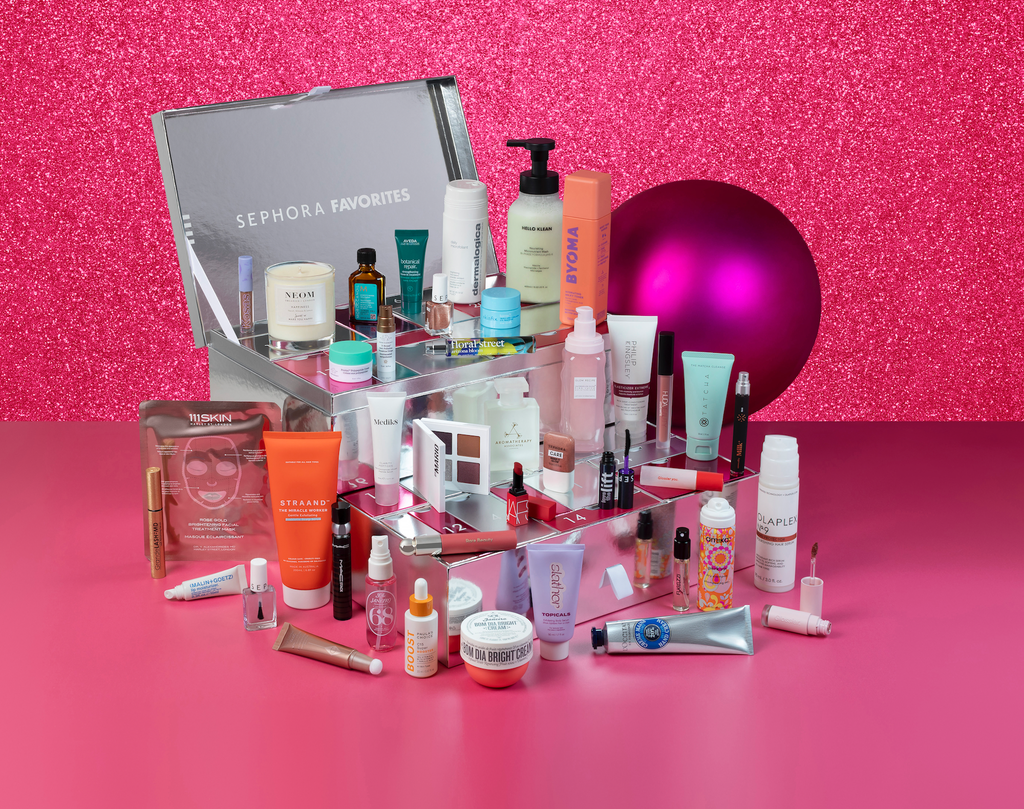
Last year’s Sephora advent calendar sold out fast, and its 2024 version is expected to do the same. When you consider that it houses 40 products in total (24 of which are full-size) it makes sense. Glossier, Rare Beauty, Makeup by Mario and Drunk Elephant all feature, plus many more editor-adored brands. Pre-order it here.
Yves Saint Laurent Advent Calendar Holiday 2024, £280
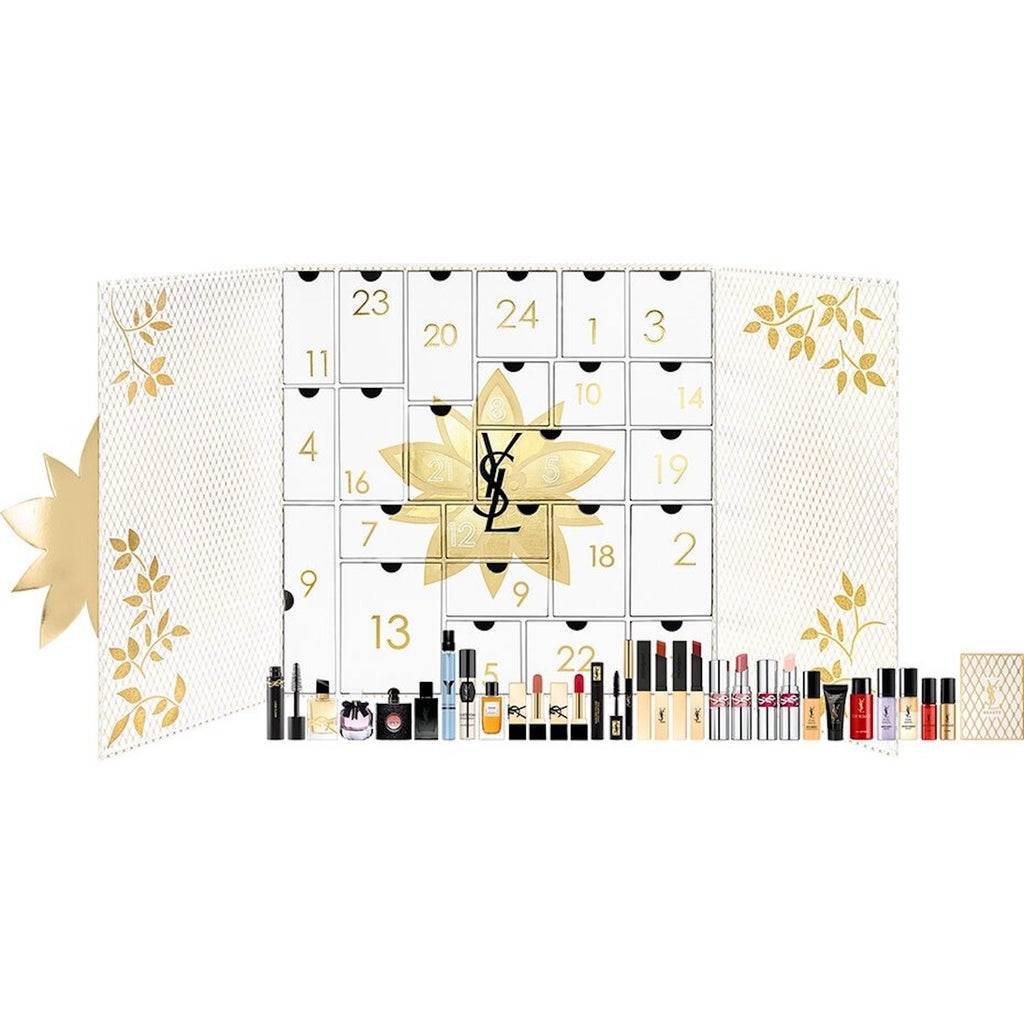
All of YSL Beauty’s bestsellers feature in this gold-adorned Christmas advent calendar, from a mini version of Libre Eau de Parfum (among other incredible fragrances) to Loveshine lipstick. It’s on sale early.
The Fragrance Shop Advent Calendar 2024, £120 or £96 for members
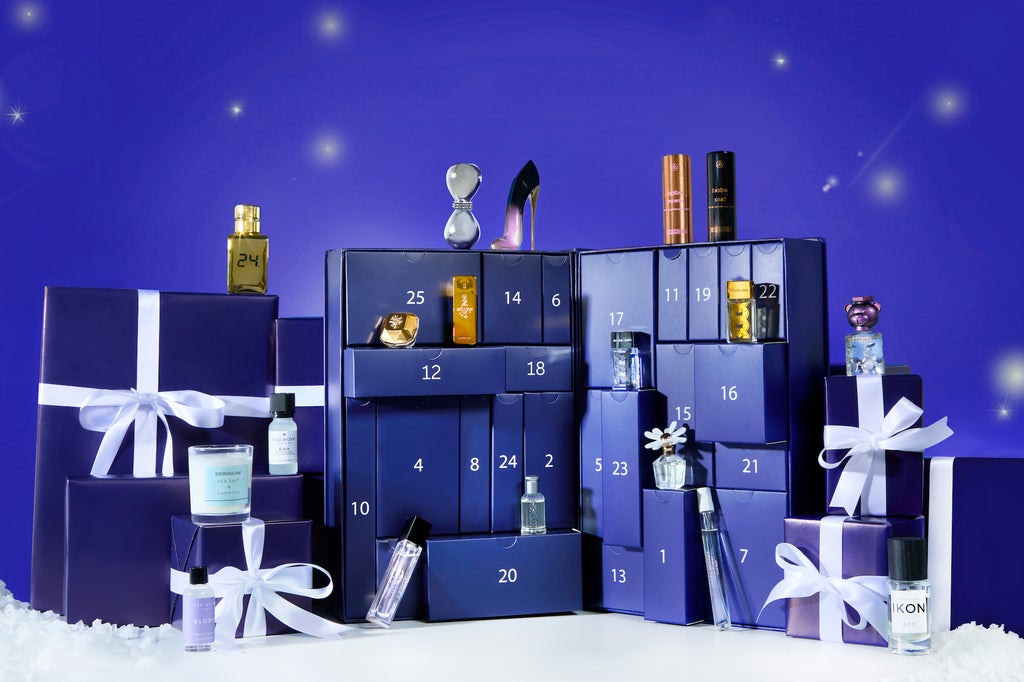
Worth over £300, The Fragrance Shop’s Christmas advent calendar brings together cult-favourite perfumes from Marc Jacobs to Caroline Herrera. You’ll also find a new launch — DKNY 24/7 Eau de Parfum — in the mix this year. Members can bag it for the discounted price of £96.
Armani Beauty Advent Calendar 2024, £270
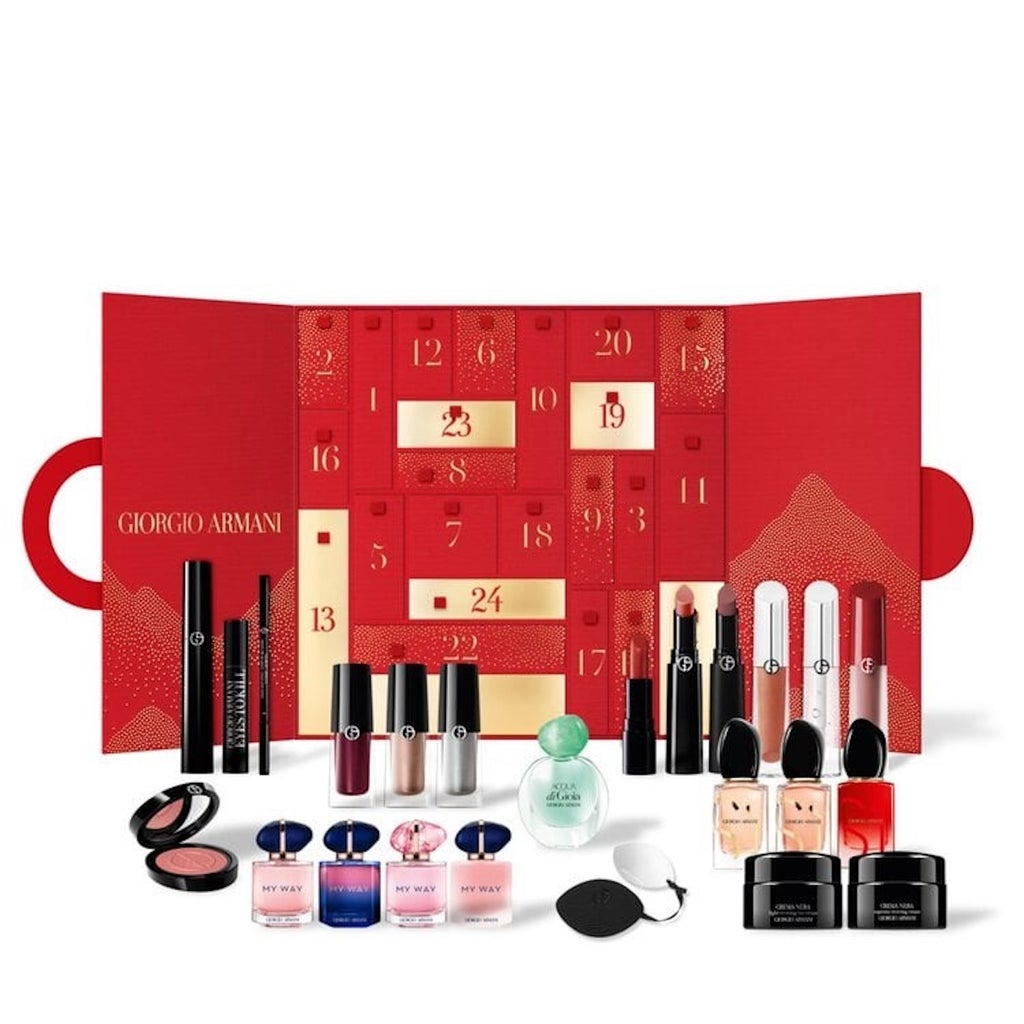
Eight full size products, 15 miniatures and one gift (that you’ll probably want to keep for yourself) makes up Armani Beauty’s 2024 Christmas advent calendar. And yes, that is three versions of the iconic Sì Eau de Parfum.
ESPA Wellbeing Advent Calendar 2024, £175
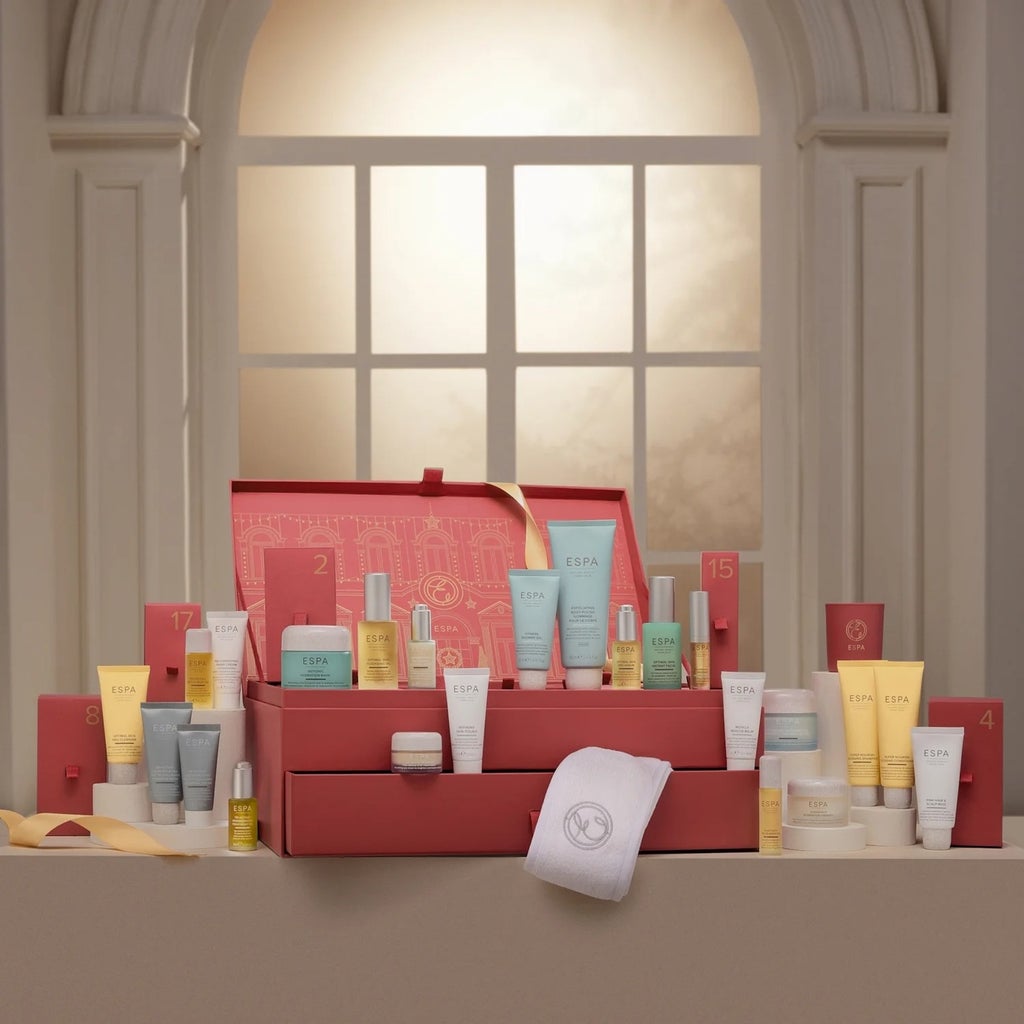
There are 25 hair, body and skincare products inside ESPA’s wellbeing advent calendar, including shampoo, face masks, cleansers and body oils to invigorate both your skin and senses. It’s the next best thing to a spa break.
Rituals The Premium Advent Calendar, £172
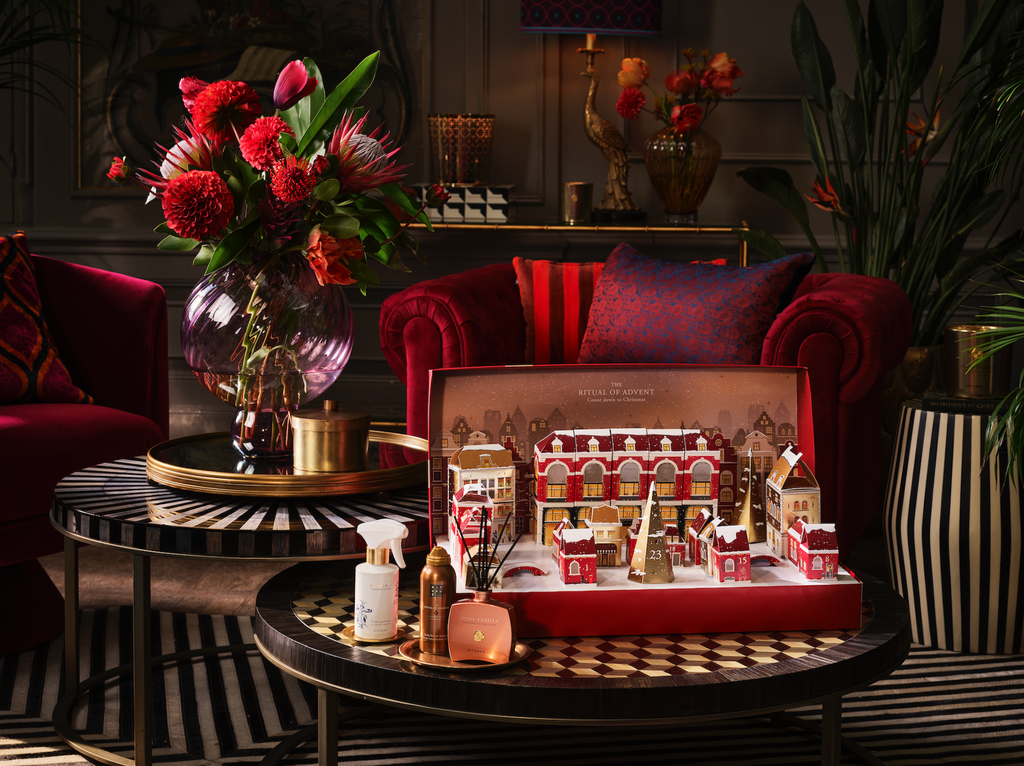
Rituals’ Premium Advent Calendar wins the award for most enchanting; it’s a little festive Amsterdam complete with beautifully illustrated boxes containing seven full-size products and 17 miniatures across body and skincare.
Rituals The Deluxe Advent Calendar, £114.90
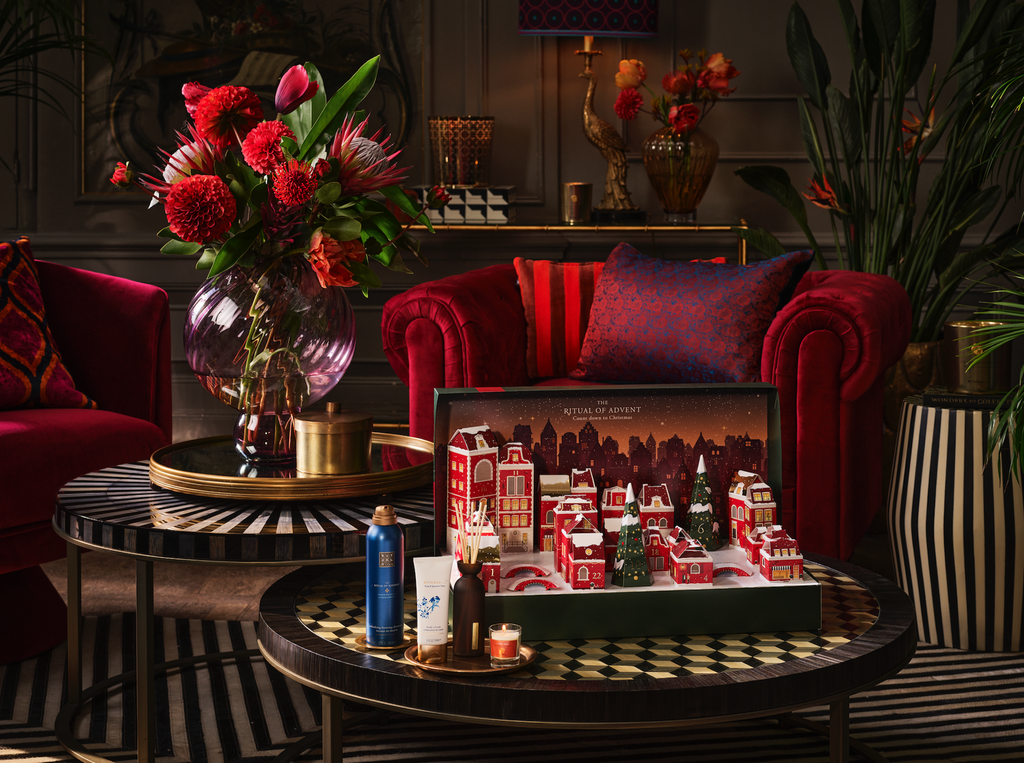
If you have a little less to spend, consider Rituals’ Deluxe Advent Calendar, which is just as charming. Two full-size products, four candles and a brand new shampoo and body bar comprises the 24-strong collection.
Rituals Classic Advent Calendar, £91.90

Rituals’ classic calendar may be the cheapest of the brand’s advent offering, but it’s no less dazzling. You’ll still find an array of scented treats, from The Ritual of Jing Body Cream to The Ritual of Karma Mild Body Scrub Paste. There are 24 doors to open.
Mantle The Advent Calendar, £200
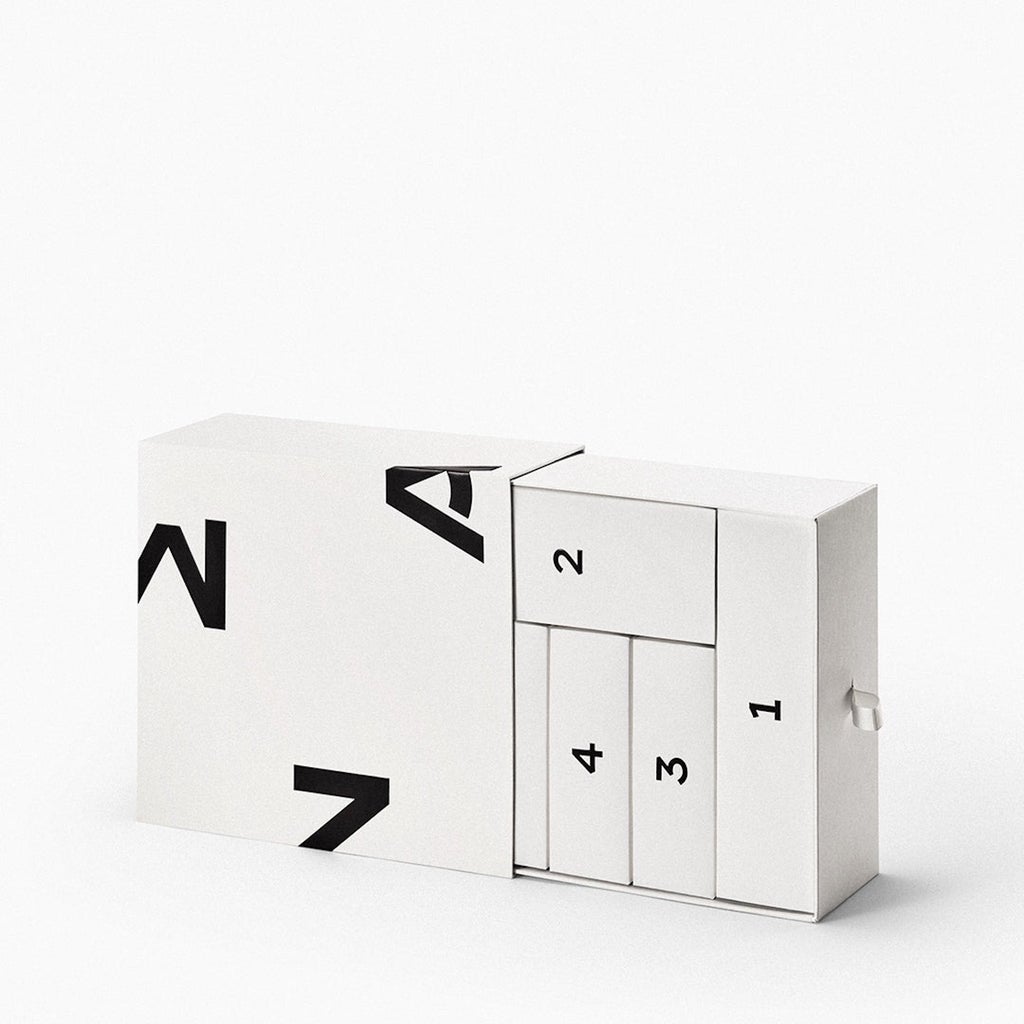
Mantle is one of those IYKYK Scandi skincare brands. Alongside a face mask, moisturiser, serum and de-puffing eye cream, you’ll spot The Bare Balm, a balm cleanser that has won over countless beauty editors since it launched.
Harvey Nichols Beauty Advent Calendar 2024, £250
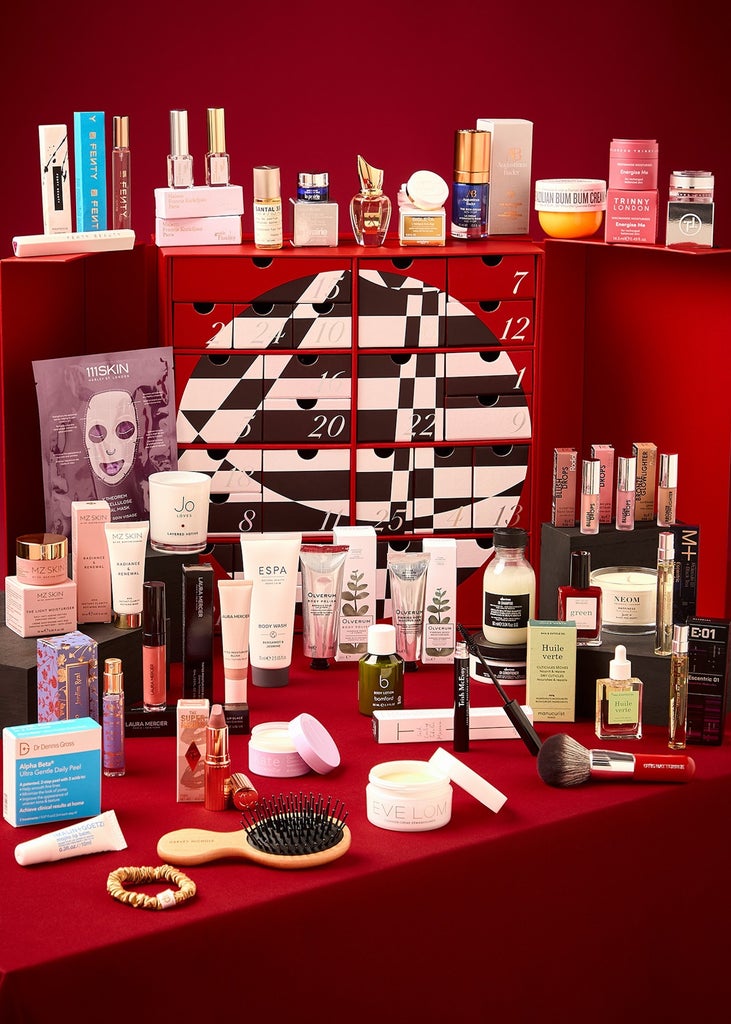
Nail care, skincare, hair care, makeup, fragrance… Harvey Nichols’ beauty advent calendar 2024 has got it all. From Escentric Molecules to Charlotte Tilbury, there’s something for every beauty enthusiast — whether you’re keeping this all to yourself or dividing up the contents between friends.
Space NK Advent Calendar 2024, £250
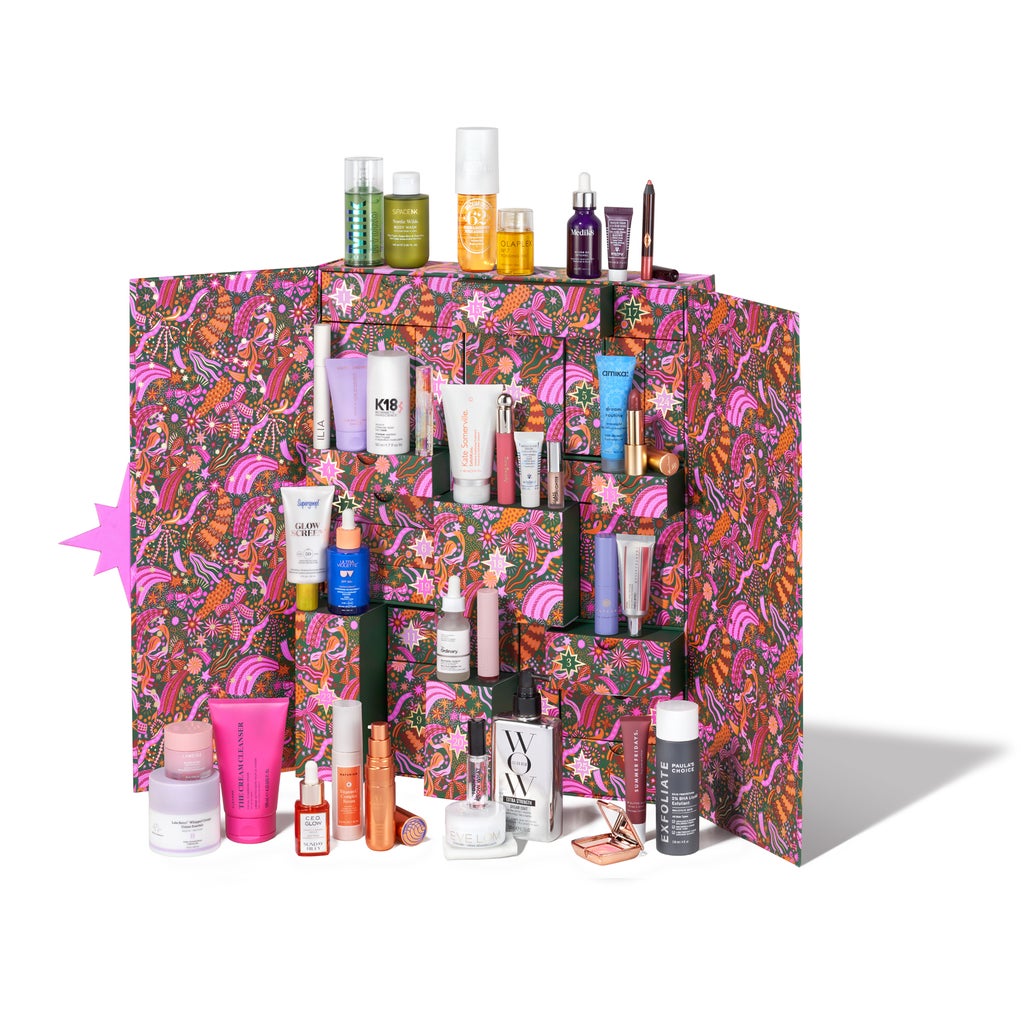
This is one of the most-anticipated beauty advent calendars every year, and for good reason: It mixes cult-favourite brands like Skin Rocks, Ultra Violette, Supergoop! Drunk Elephant, Color Wow and Rare Beauty — and that’s just the tip of the iceberg. Incredibly, there are 34 products (23 of them full-size) reaching a value of over £1,200. It’s yours for £250 when it lands on 12th of September.
ASOS Face + Body Advent Calendar 2024, £95
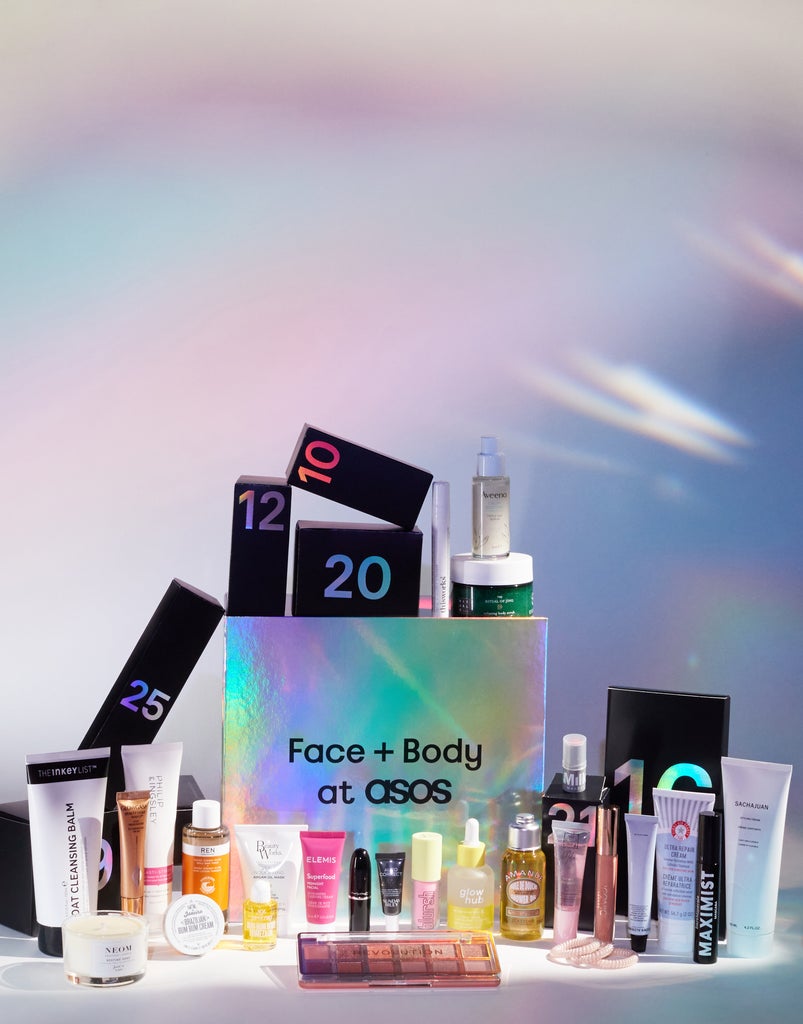
The ASOS Face + Body advent calendar is always a special one — and this year’s is no different. It’s jammed with premium brands including MAC, Elemis, Charlotte Tilbury and REN among unsung heroes like The Inkey List’s Oat Cleansing Balm, Made By Mitchell Blursh Liquid Blusher and First Aid Beauty’s Ultra Repair Cream. There are 26 (!) products in total, all worth £400. Get yours at ASOS.com on 4th of September.
Fortnum & Mason 2024 Beauty Advent Calendar, £256
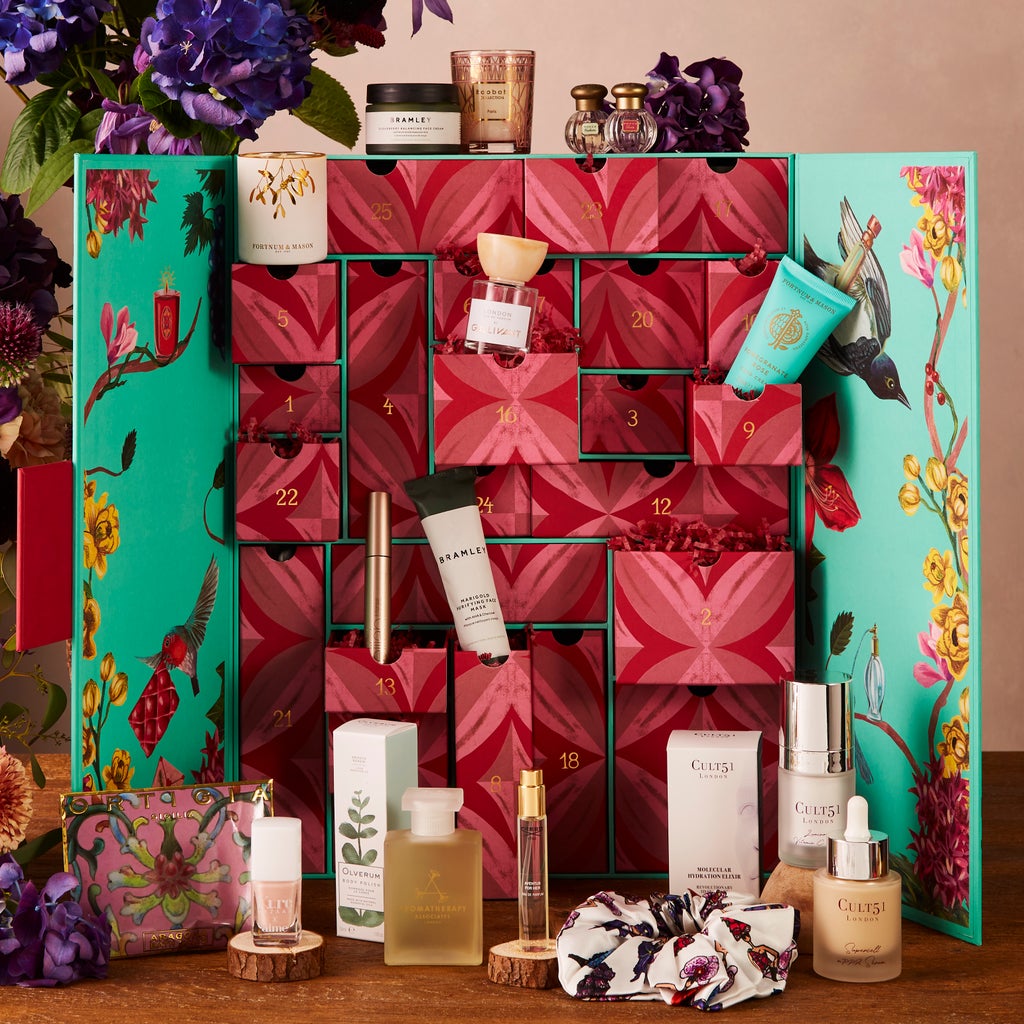
Advent calendars don’t come any more luxurious than Fortnum’s and this one is as jam-packed as it gets. Worth over £1,087, there are 27 products and of those, an impressive 23 are full-size. Nestled inside each drawer you’ll find fragrance by Creed and Tocca, body care from Sol de Janeiro and skincare from R29 favourite Wildsmith Skin. Even better? Ten people will win complimentary facials worth £120. It’s available for dispatch after 21st October 2024 but you can check out now.
benefit Cosmetics The Gorgeous Grocer Beauty Advent Calendar, £156
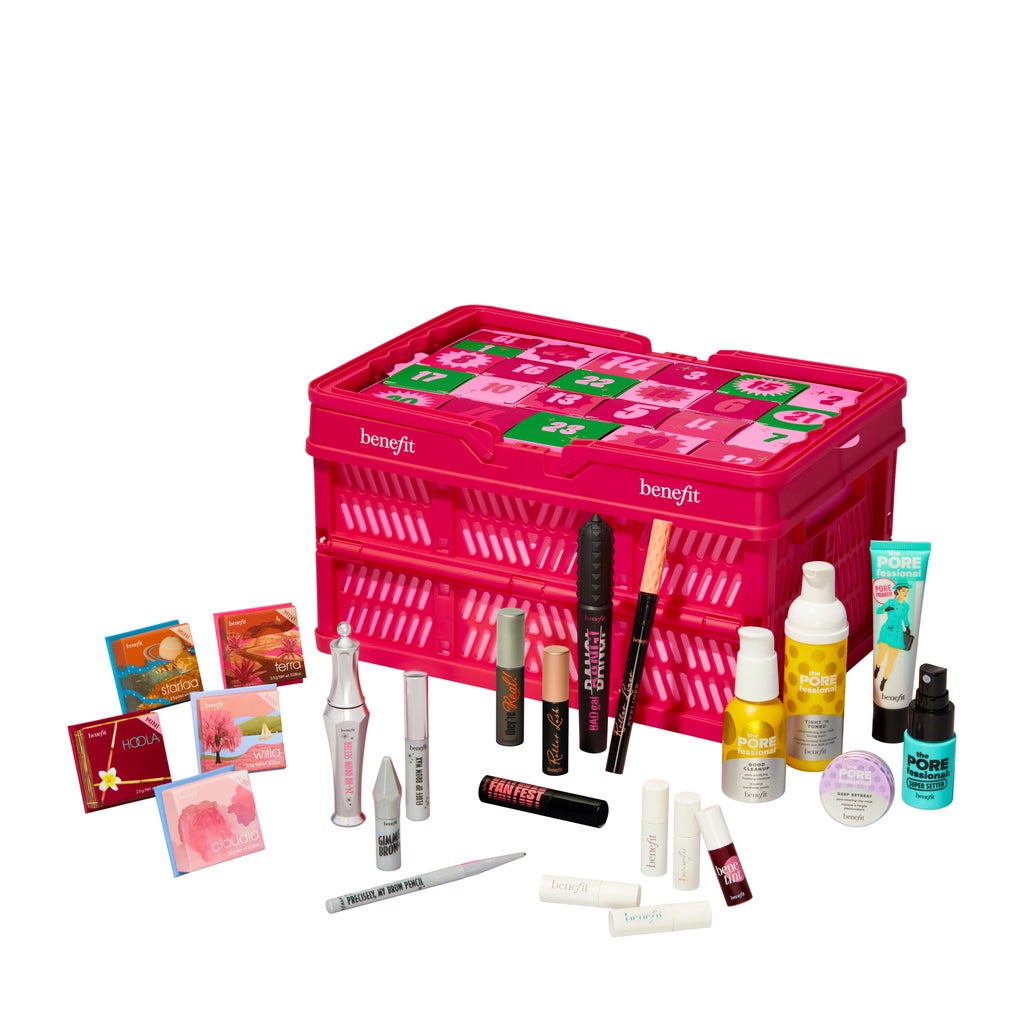
The award for the most creative (and Instagram-worthy) beauty advent calendar goes to benefit. Its Gorgeous Grocer shopping basket — which can be used to store your beauty stash once you unbox everything — is brimming with 24 products that have earned the brand such a cult following over the years. We’re talking TikTok-viral Benetint, a full-size version of BADGal BANG! Volumizing Mascara and a selection of the brand’s criminally underrated skincare. It’s exclusive to Selfridges, and we predict a sell-out.
The Liberty Beauty Advent Calendar 2024, £260
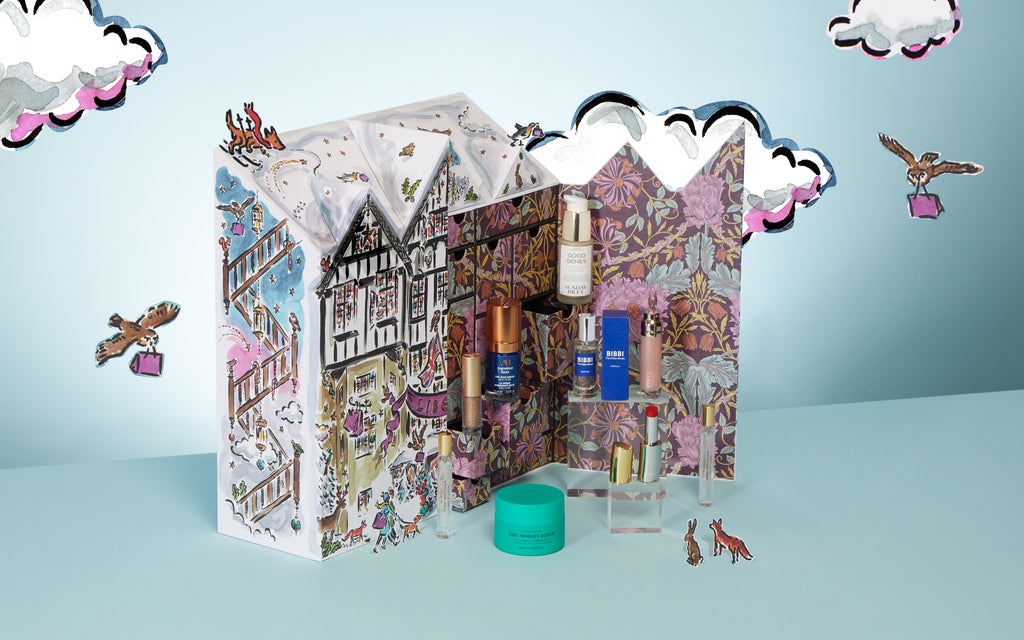
The Liberty beauty advent calendar is one we look forward to every year. Filled to bursting with 28 products from brands such as Byredo, Augustinus Bader, Sunday Riley, OUAI and Skin Rocks, 2024’s iteration is worth over £1,200. In other words, you’re making a saving of £940. This year’s haul, which boasts eight new brands and 18 full-size products, is housed inside a beautifully illustrated box depicting a festive Liberty storefront, making it a keepsake. Get yours on 4th September.
Anthropologie 2024 Beauty Advent Calendar, £88
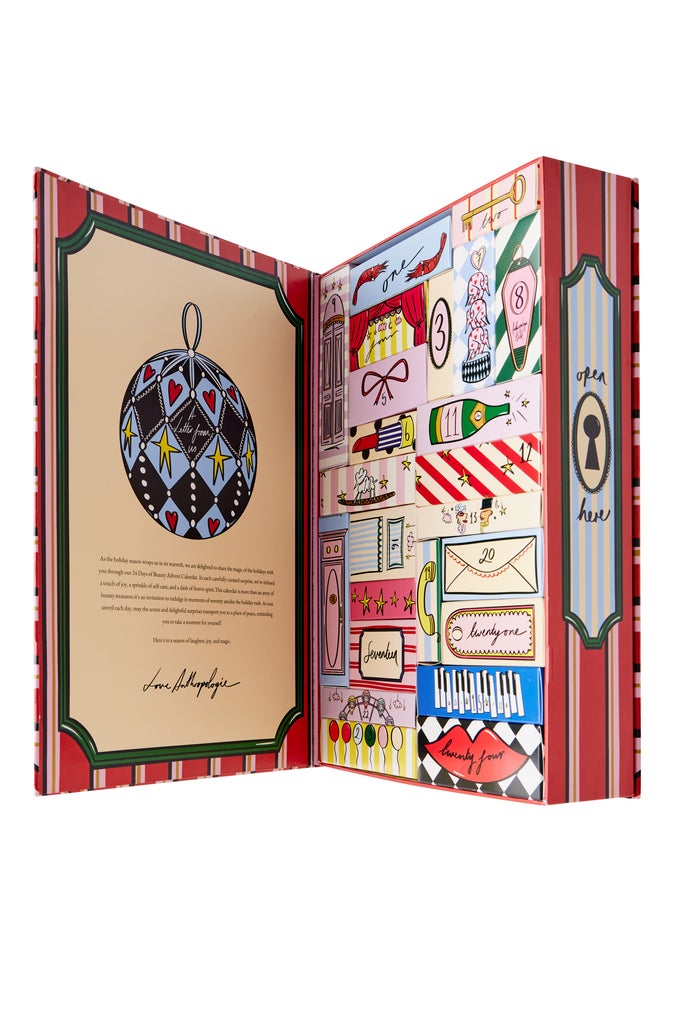
At £88 (but worth £300), Anthropologie’s beauty advent calendar is considerably less pricey than other brands, though equally stuffed with premium and luxury products from the likes of Sunday Riley, L’Occitane, Anastasia Beverly Hills and Malin + Goetz. There’s a mix of full-size and miniature products, all tucked away inside 24 illustrated boxes.
Cult Beauty Advent Calendar 2024, £235
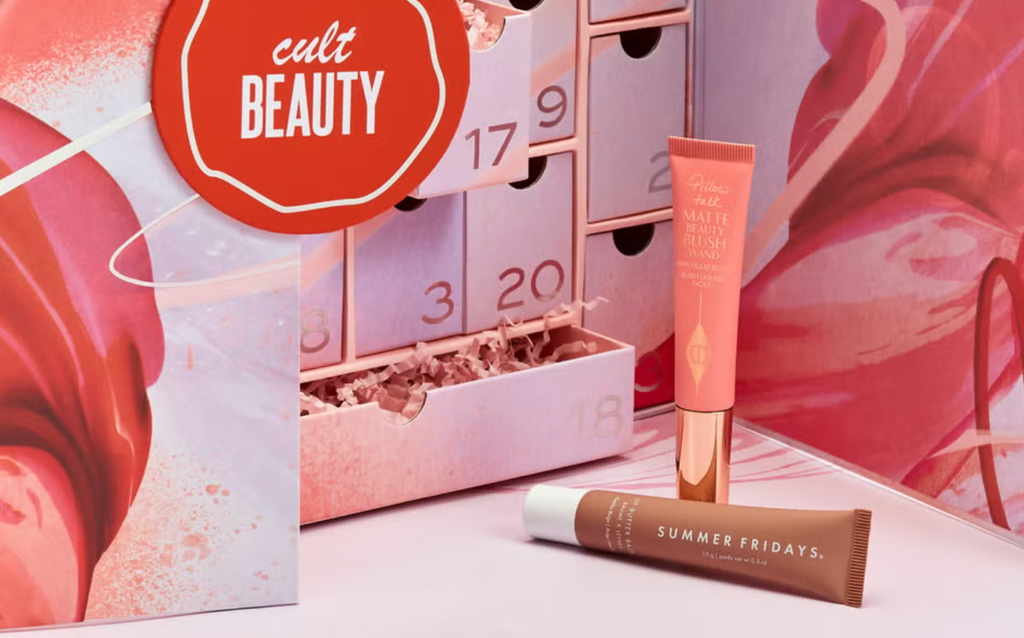
Worth £1,100, Cult Beauty’s 2024 advent calendar is bursting at the seams. No, really. There are over 40 products hidden inside those Tardis-like drawers including multiple TikTok sensations and, finally, fragrance! Summer Fridays, Charlotte Tilbury, Saie, Hourglass and Sol de Janeiro all make the cut, of course, but there’s so much more to be uncovered, not to mention £10 store credit and the lusted-after golden ticket. If you’re one of the lucky ones, it’ll afford you £1,000 to spend at Cult Beauty. Join the Cult Beauty Advent Calendar 2024 waiting list here.
Augustinus Bader The 12 Days of Bader with TFC8, £445
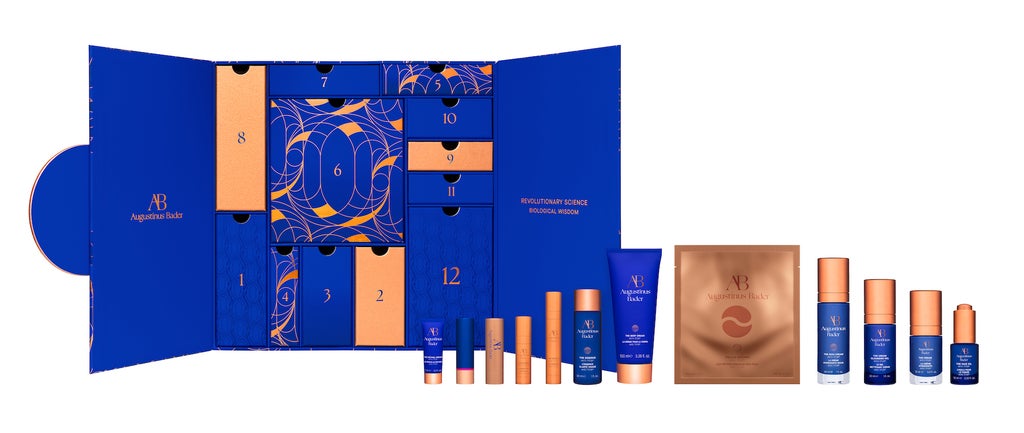
Landing on 25th September, this is Augustinus Bader’s first ever Christmas advent calendar. The brand’s bestselling products — The Cream and The Rich Cream — are bundled inside two of the 12 blue and gold boxes, alongside a lip balm, cleanser, body cream and face oil.
Elemis 2024 Beauty Advent Calendar, £199
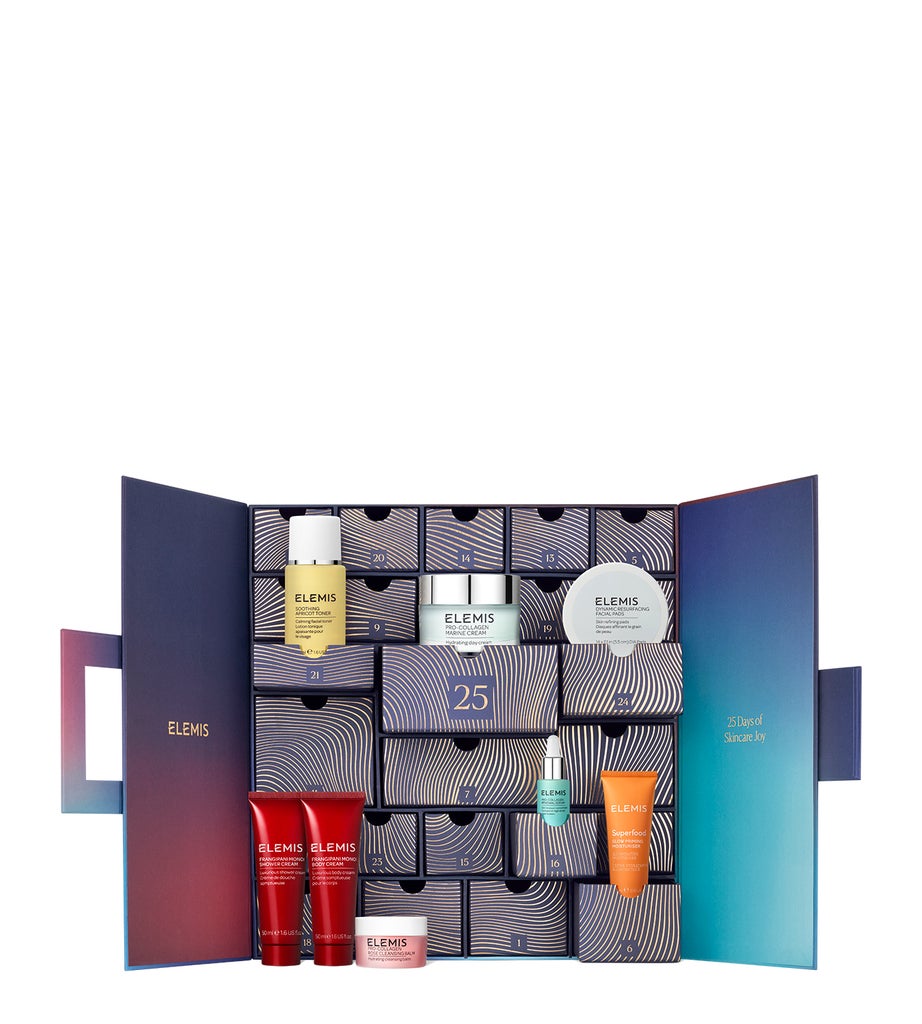
Sign up to the waiting list and gear up to unbox 25 days of skincare with Elemis, the brand behind one of our all-time-favourite cleansing balms and the most underrated new sunscreen launch of 2024. Root around inside and you might be lucky enough to spot one of 15 golden tickets, which could net you the chance to win £1,000 worth of Elemis products — on top of the 25 in your advent calendar, no less.
Lookfantastic Iconic Beauty Vault Advent Calendar 2024 , £100

Sol de Janeiro, Estée Lauder, Elemis… These are just a handful of brands that have been packed into Lookfantastic’s 2024 beauty advent calendar. At £100 it’s arguably a steal, especially when you consider that the contents — 27 products in total — are worth £565. There are 13 full-size offerings and myriad miniatures for popping into your handbag or for travelling.
Jo Loves 2024 Advent Calendar, £375
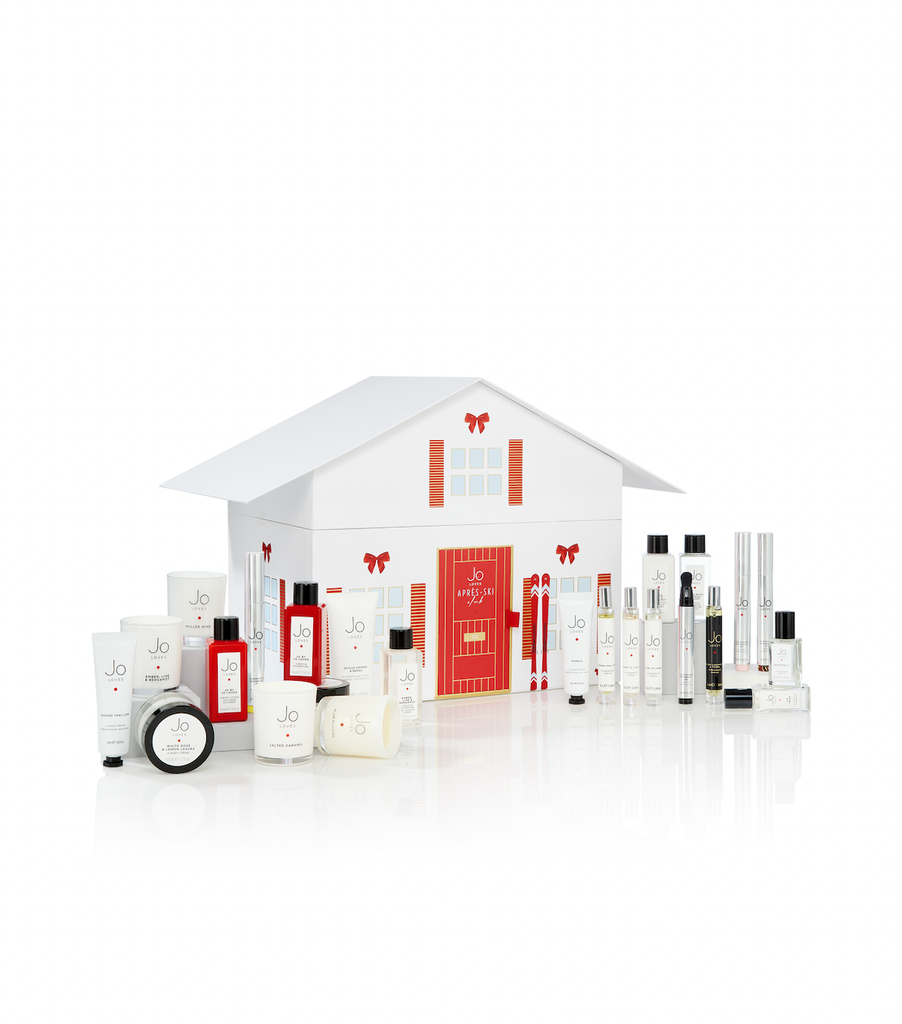
The cute ski chalet design piqued our interest but the array of perfumes and candles — seven of which are full-size — sold us. Inside, find a handful of Jo’s bestselling fragrances from Amber & Lime to White Rose & Lemon, not to mention the upcoming Black Cashmeran & Tonka Fragrance Paintbrush.
Bamford Twelve Days Of Christmas Advent Calendar, £195
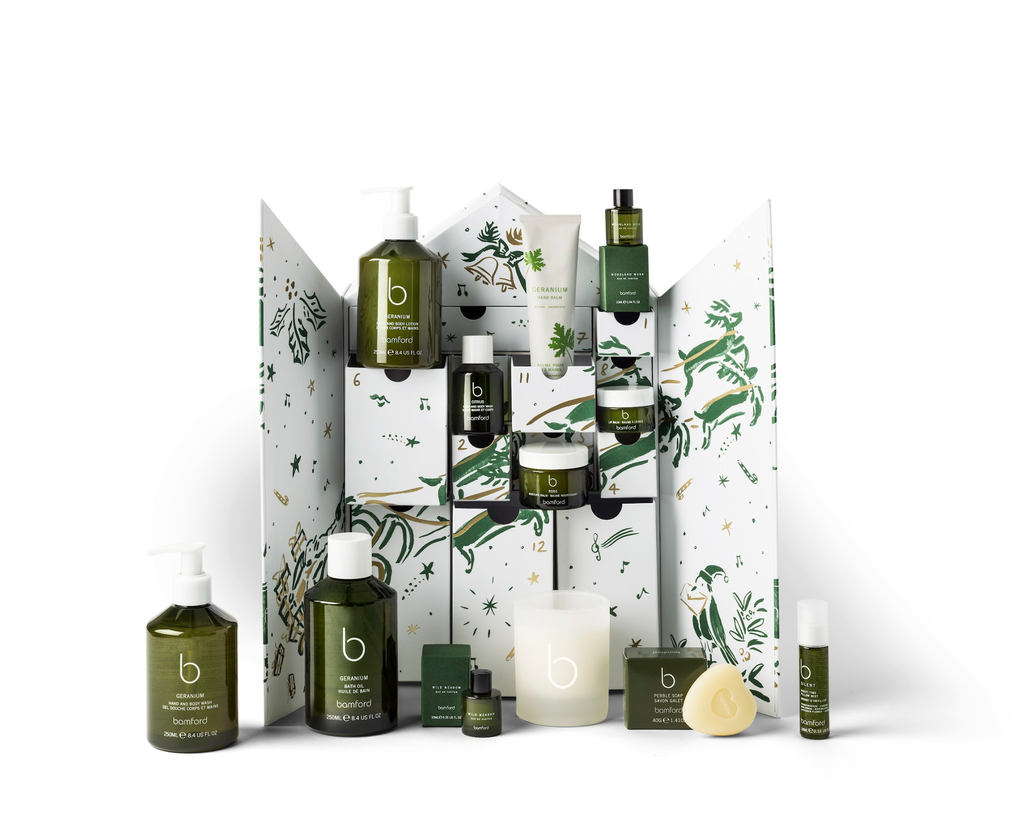
For the person that deserves a good pamper, it has to be Bamford. A full-size bath oil, candle, and hand and body wash make up this 25-strong advent calendar worth over £270. And relax…
Harrods Beauty Advent Calendar 2024, £250
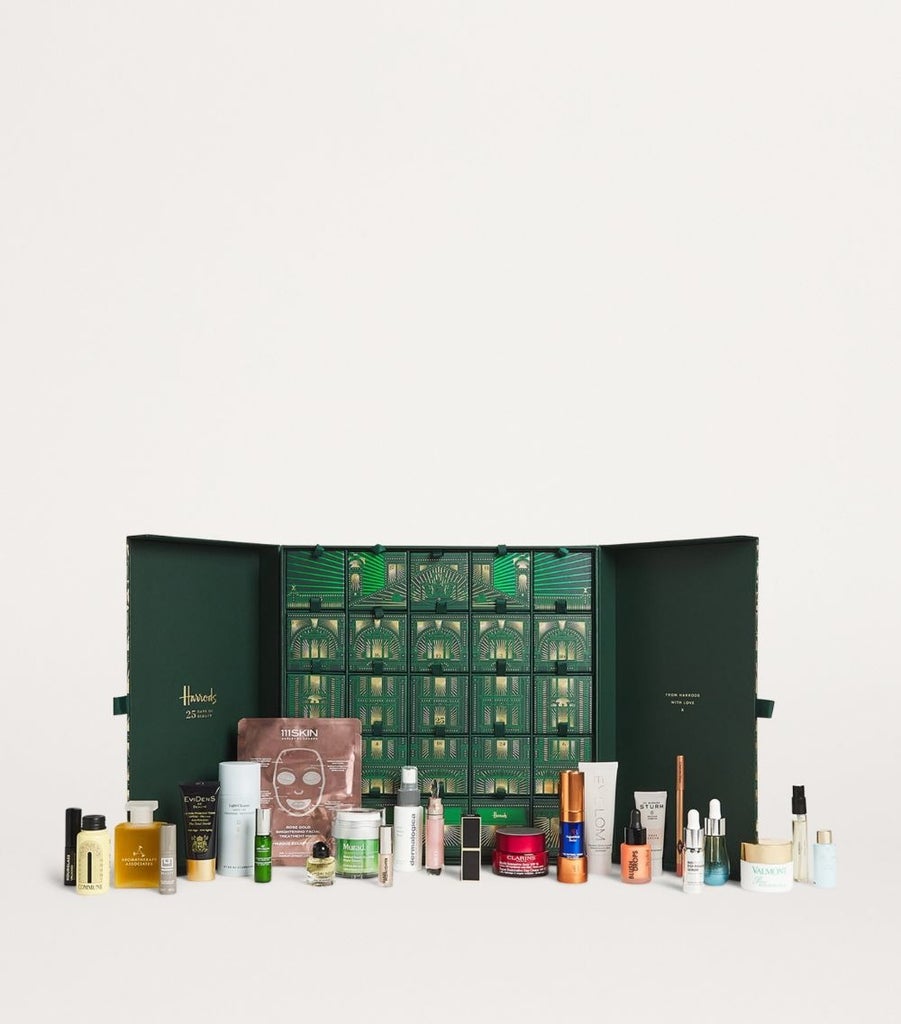
Worth £1,599, Harrods’ beauty advent calendar is a spectacle, thanks firstly to the beautiful embossed storefront spanning all 25 drawers and secondly to the megamix of luxury and premium brands inside. There’s skincare from U Beauty, Augustinus Bader and Clarins, fragrance from Byredo and makeup from La Mer, Tom Ford and Charlotte Tilbury.
Liz Earle 12 Days of Liz Earle Beauty Advent Calendar 2024, £79
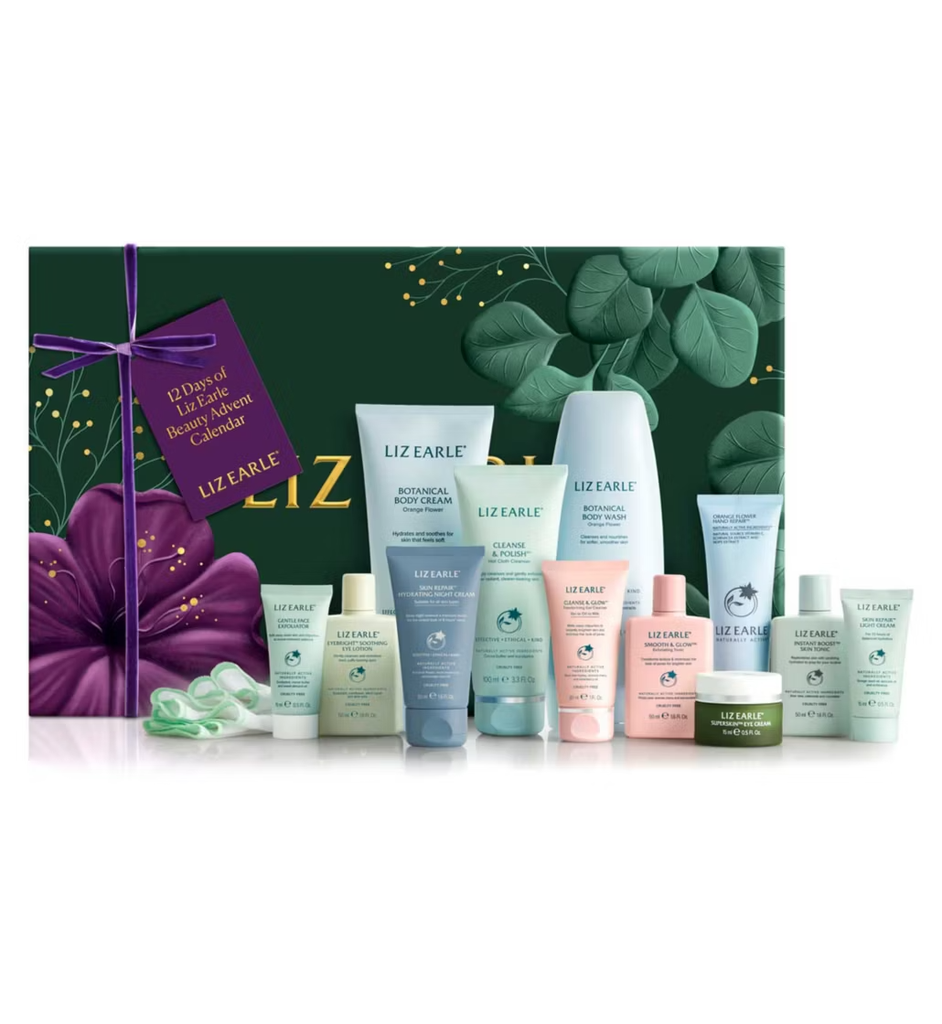
Give the gift of great skin (or simply treat yourself) with Liz Earle’s 12 days of beauty advent calendar, featuring its most famous product — Cleanse & Polish Hot Cloth Cleanser — alongside eye creams, day and night moisturisers and body care products in a mix of full and miniature sizes. At £79, you’re making a total saving of £99. It’s available now from both the brand’s official website and at Boots.
Next 25 Days of Beauty Advent Calendar 2024, £90
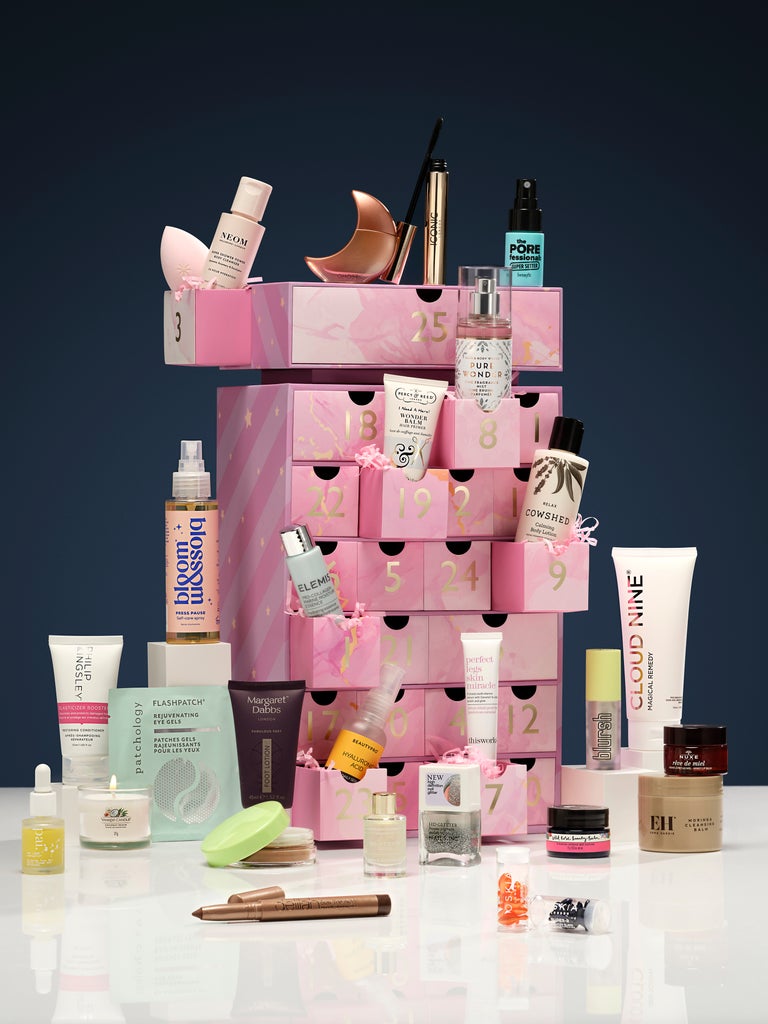
Next has pushed the boat out this year with not one but two beauty advent calendars. First up is 25 Days of Beauty, which is £90 but worth £383. It’s a treasure trove of products from beauty editor-adored brands like Philip Kingsley, Elemis, Aromatherapy Associates and Nuxe. Even better? Next and makeup brand Iconic London have joined forces to give you the opportunity to win £213 worth of makeup via 10 golden tickets hidden inside selected boxes.
W7 Beauty Blast Advent Calendar 2024, £19.95

At £19.96, W7’s advent calendar is the most affordable here — but don’t underestimate it. Loaded with mascara, lip gloss, eyeshadow and highlighter (24 products to be exact), it’s perfect for makeup beginners.
Next The Luxury Beauty Advent Calendar 2024, £170
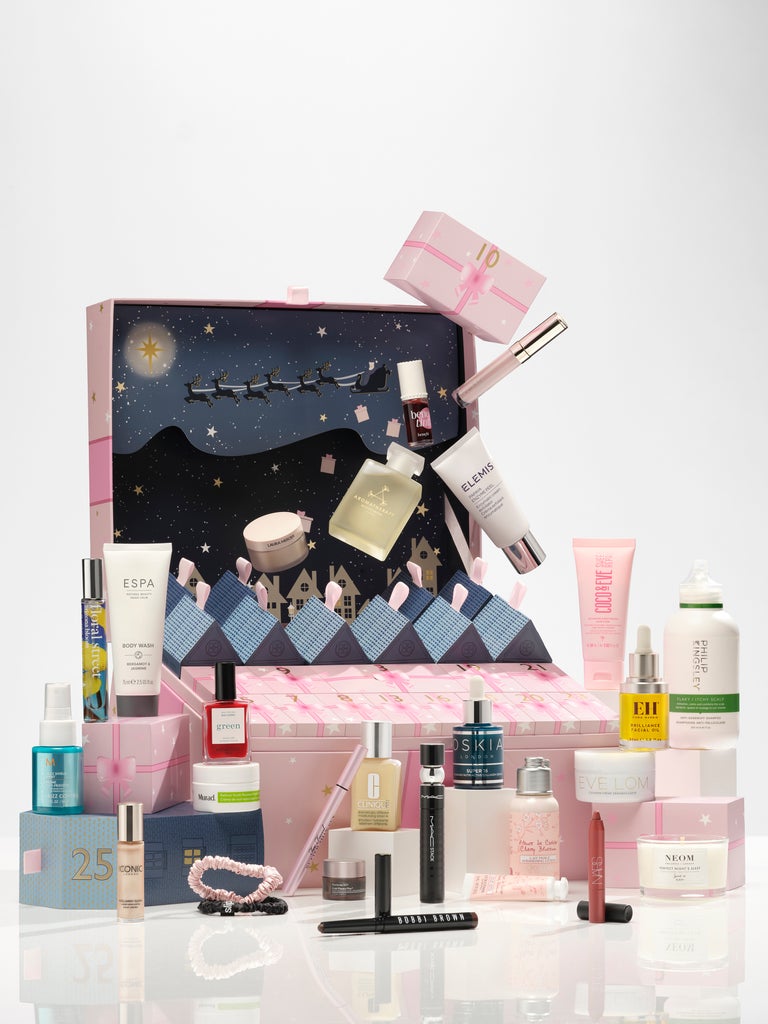
If 25 Days of Beauty doesn’t do it for you, you’ll love Next’s Luxury Beauty Advent Calendar. Possibly the best value for money on this list (it’s worth a huge £768), it’s chock-full of makeup, skincare, hair care and fragrance from NARS, Floral Street, Eve Lom, MAC, Moroccanoil, Murad, Bobbi Brown and so many more. Also concealing 10 special golden tickets — this time to win £289 worth of makeup products with Elemis — it’s going to fly off the virtual shelves.
Charlotte Tilbury Charlotte’s Beauty Treasure Chest of Love 2024, £170

The award for the most Instagrammable beauty advent calendar of 2024 goes to Charlotte Tilbury. The bejewelled drawer knobs! What’s inside is likely to be just as impressive, though. Think 12 full- and travel-size heroes that are yet to be unveiled. We’re willing to bet you’ll spot something from the famous Pillow Talk collection and possibly even a mini Magic Cream like last year. It’s available from 10th September exclusively on the Charlotte Tilbury app or 17th September on CharlotteTilbury.com.
Sentier Advent Calendar: 12 Days x 12 Stories, £99
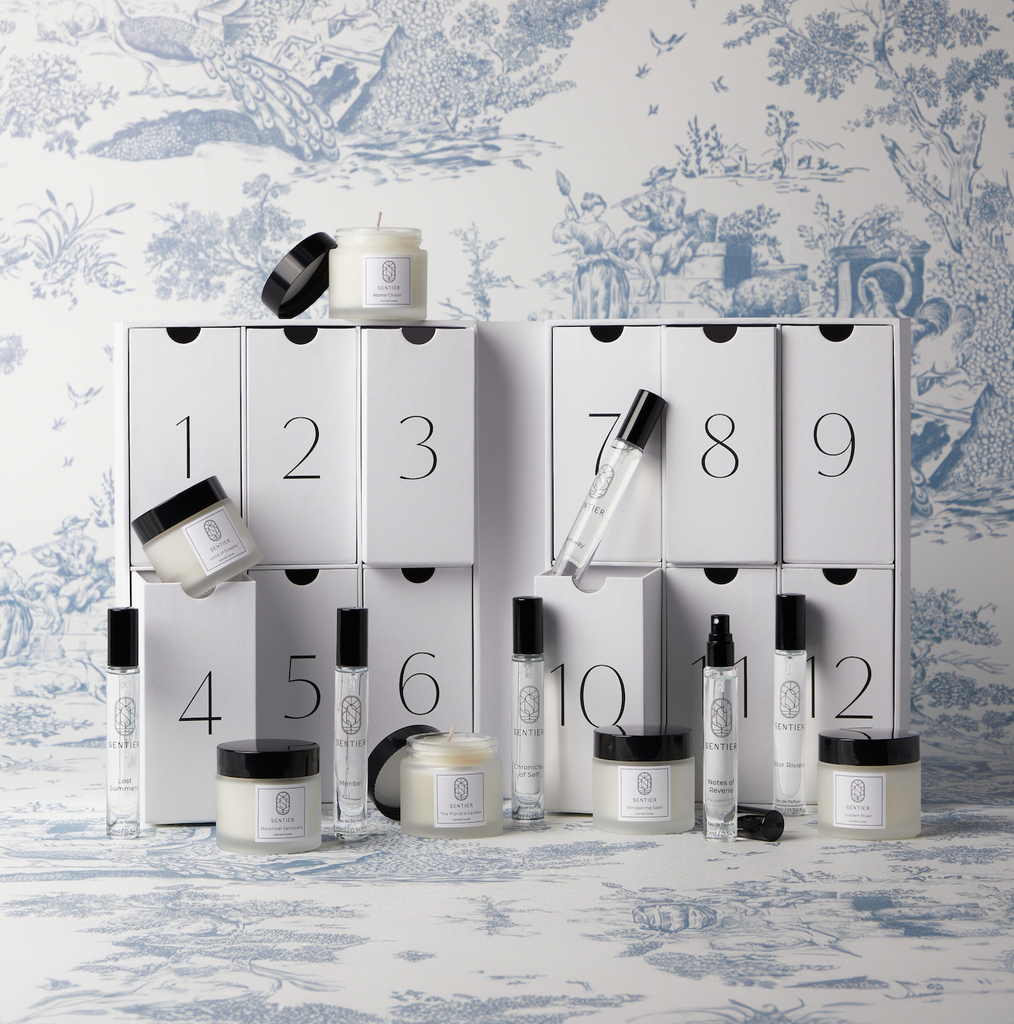
Sentier’s advent calendar is a fragrance-obsessive’s dream: Six genderless, alcohol-free perfumes and six scented candles are burrowed inside the 12 boxes. Worth £516, it’s almost too good to gift. Another option? Keep it to yourself and uncover your new signature scent. You can join the waiting list here.
Lush Advent Calendar, £190
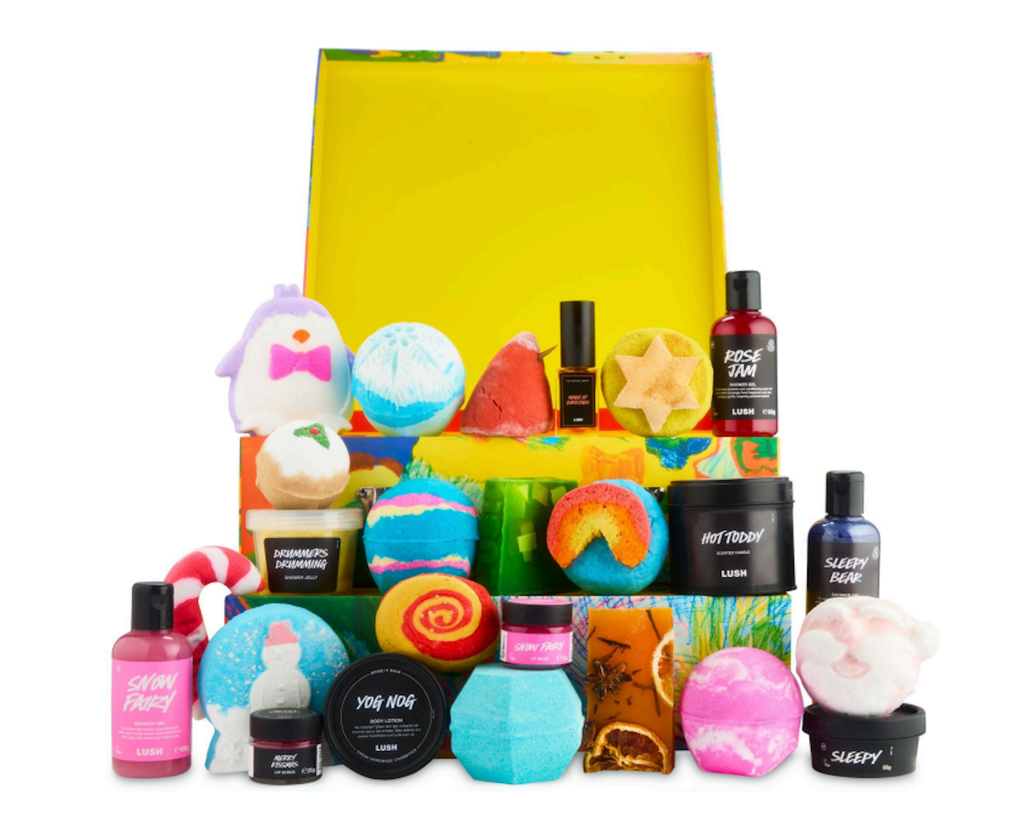
Twenty-five bath bombs, lotions, scrubs, perfumes, bubble bars and more comprise Lush’s 2024 advent calendar, including its ever-popular Sleepy range and long-awaited festive scents like Snow Fairy. The artwork adorning the reusable box is by artist Tess Gilmartin, a member of Blue Room — an initiative that supports learning disabled and neurodivergent artists.
Lush 29 High Street Christmas Advent Calendar, £130

Lushees will adore this limited edition, collectable and reusable advent calendar — mainly for the wide selection of bath bombs, soaps and bubble bars but also for the super cute 3D characters hiding behind each door. Grab one before it sells out. (It always does.)
Bobbi Brown Dazzle & Glow 12-Day Advent Calendar, £160
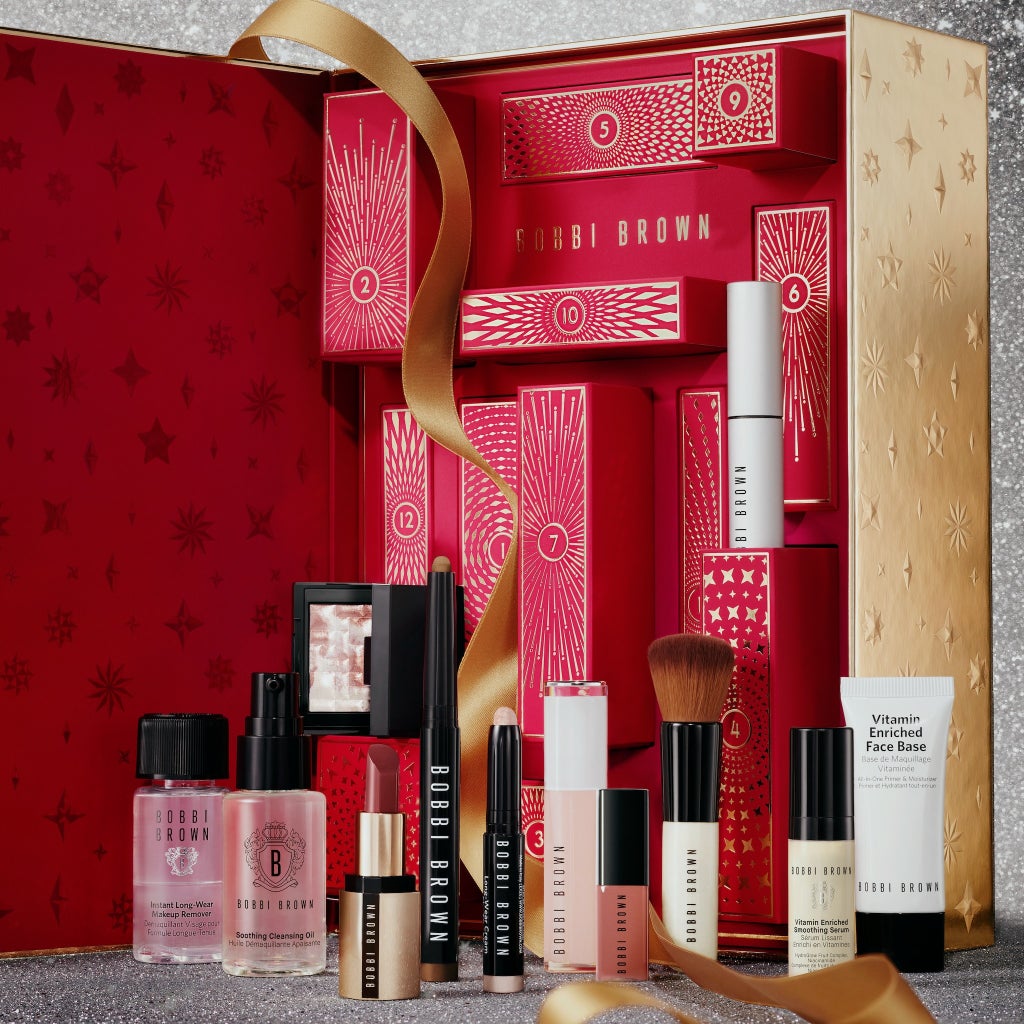
Bobbi Brown’s 12-strong advent calendar serves up a full-size Long-Wear Cream Shadow Stick in shade Golden Bronze, Extra Plump Lip Serum in Bare Pink and Smokey Eye Mascara in Black alongside nine travel-size skincare and makeup products. The red and gold box will look impressive under any tree.
Mintd Box Twilight Zone: Mini Mintd Advent Calendar, £190
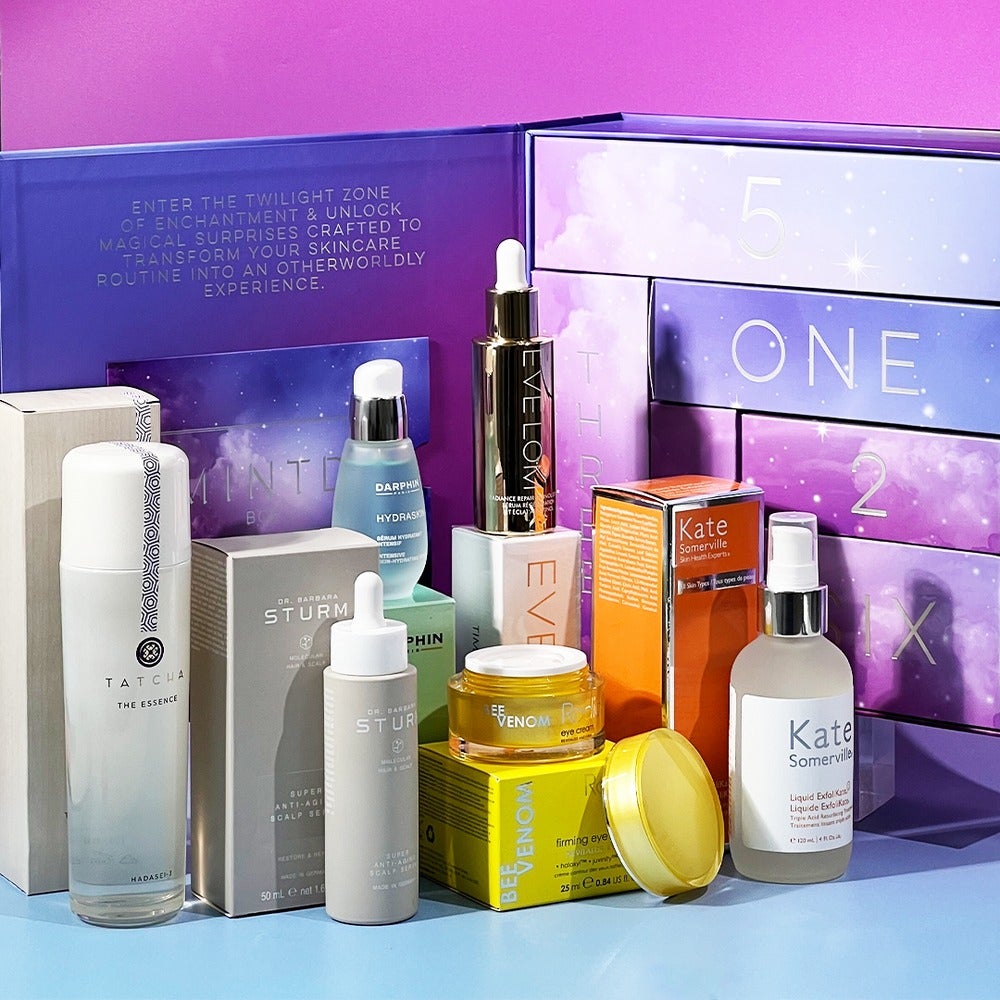
Mintd’s 2024 advent calendar is a compact box of some of the very best luxury skincare. There are six full size products in total: Tatcha The Essence, Kate Somerville Liquid Exfoliator, Darphin Intensive Skin-Hydrating Serum, Eve Lom Radiance Repair Retinol Serum, Rodial Bee Venom Eye Cream and Dr. Barbara Sturm Anti-Hair Fall Scalp Serum. It’s worth nearly £600.
No7 Ultimate Beauty Calendar, £175

It doesn’t get better than 25 full-size products. The value of No7’s Ultimate Beauty Calendar comes in at over £514, which means you’re making a saving of £339. Spilling over with skincare from the brand’s hero Future Renew range and an abundance of makeup including a face and eye palette, it’s going to be a popular one. Sign up to the waiting list to be the first in the know when it lands.
No7 25 Days of Beauty Advent Calendar, £60
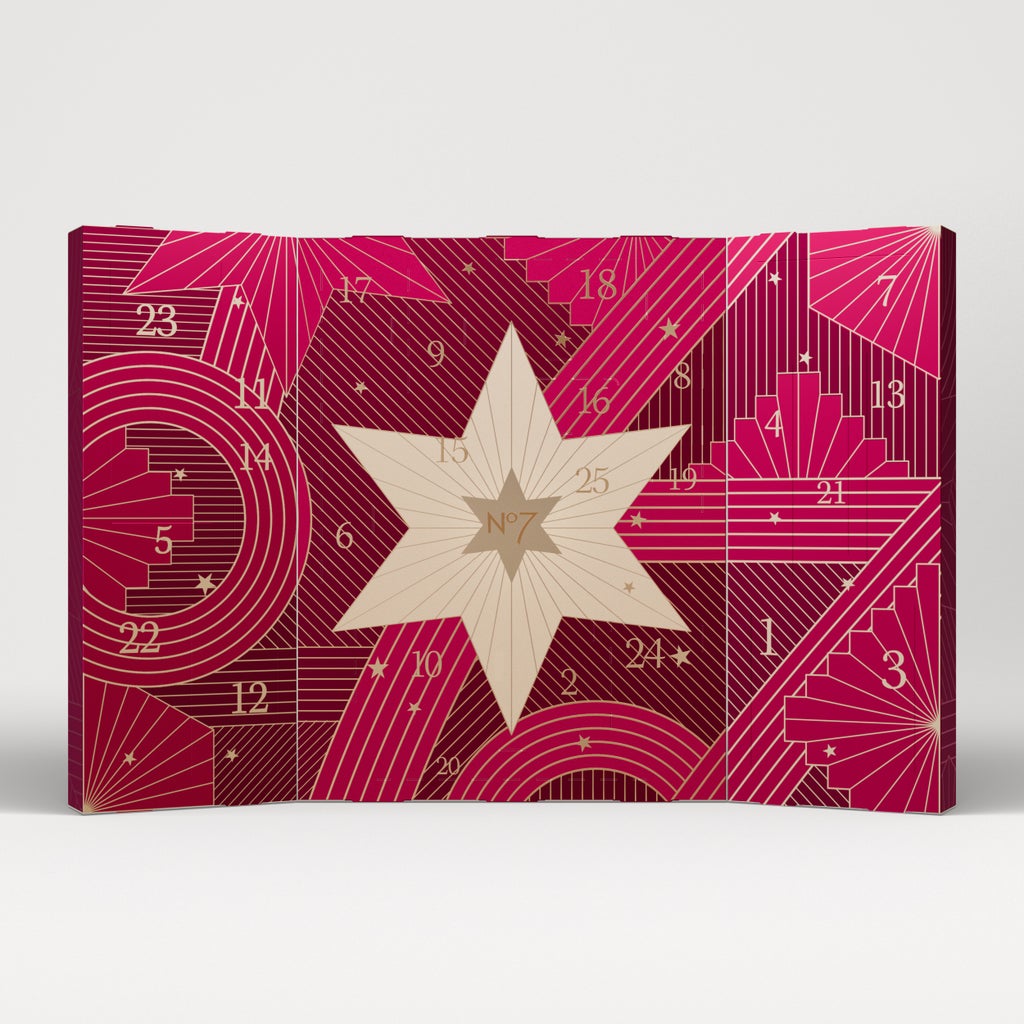
If you have a smaller budget, consider No7’s more affordable option. Not to be underestimated, it too is crammed full: 12 full-size and 13 mini products across makeup and skincare. Signing up to the waiting list gives you early access to the calendar on 1st October. For everyone else, it’s available in store and online at Boots from 2nd October.
Avant 12 Days of Beauty X Dreams Advent Calendar 2024, £99
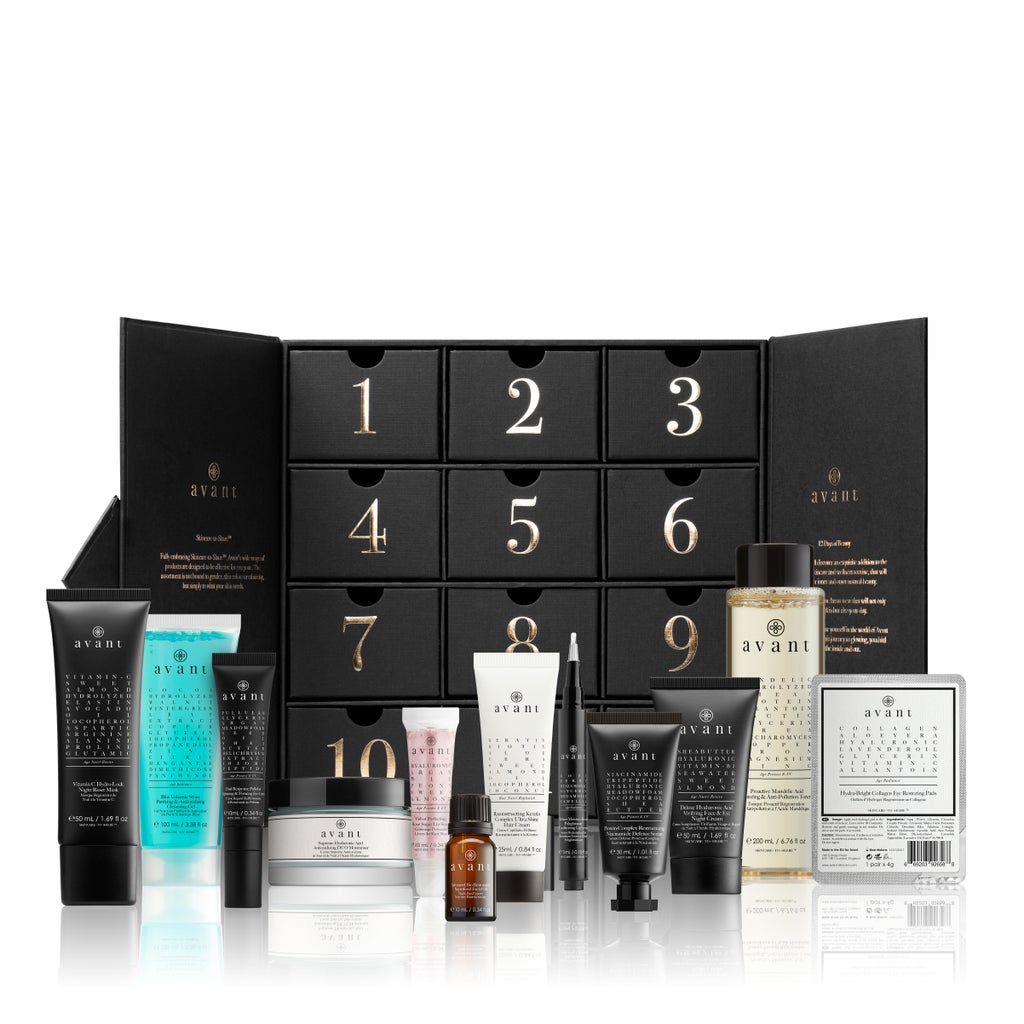
Worth £807, Avant Skincare’s 12 Days of Beauty advent calendar is impressive value for money. From cleansers and moisturisers to masks and lip scrubs, the 12 drawers feature all you need to curate a reliable skincare routine — including a handful of QR codes that boast hidden offers. Last year’s advent calendar sold out twice, so get in there quick when it lands on 5th of September.
Sisley Beauty Advent Calendar 2024, £640
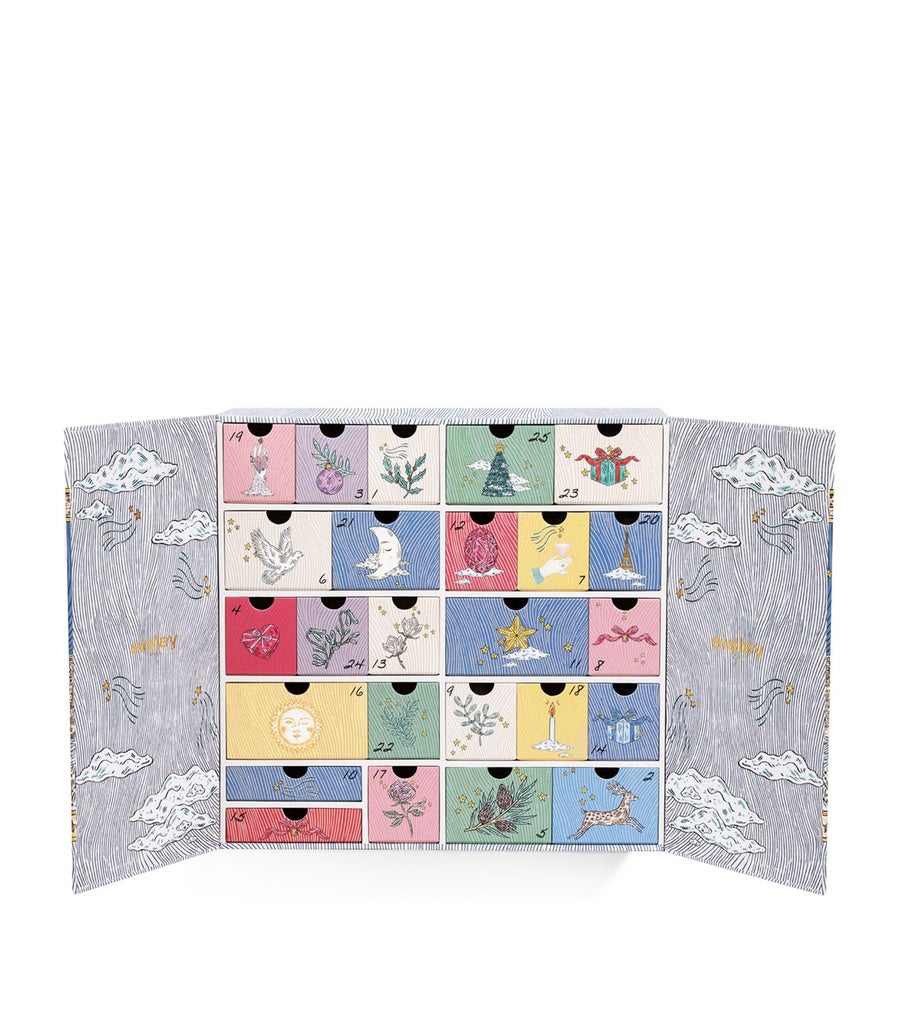
Luxury skincare fiends, look no further than Sisley’s beauty advent calendar. The illustrated boxes are almost too beautiful to open. We said almost. Cushiony cleansers, cosseting facial oils and cocooning moisturisers make up the 25-strong offering this year, available online at Harrods.
Soap & Glory 24 Moments On Cloud All-Mine Advent Calendar Set 2024, £48
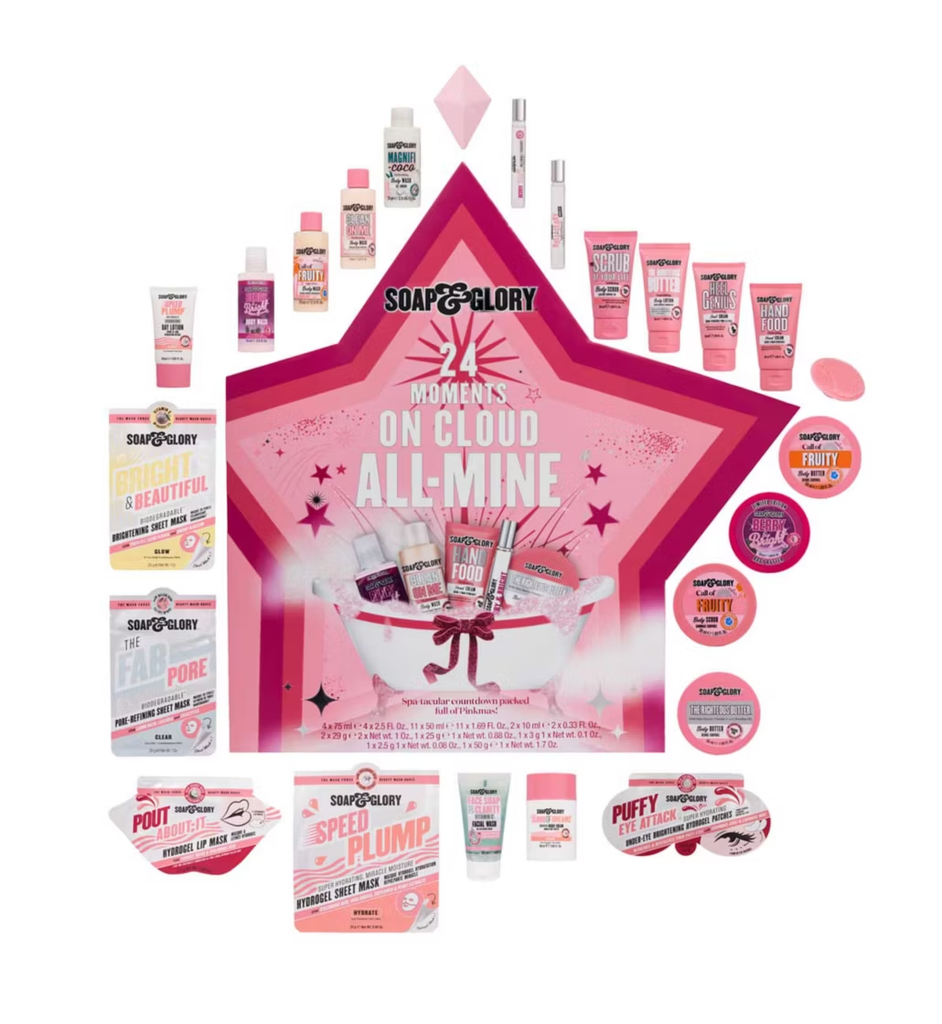
You can never go wrong with Soap & Glory’s Christmas advent calendar full of body butters, face masks and shower gels to keep you stocked up all year round. At £48, it’s one of the more affordable beauty options. Get yours at Boots.
Jurlique Advent Calendar 2024, £110
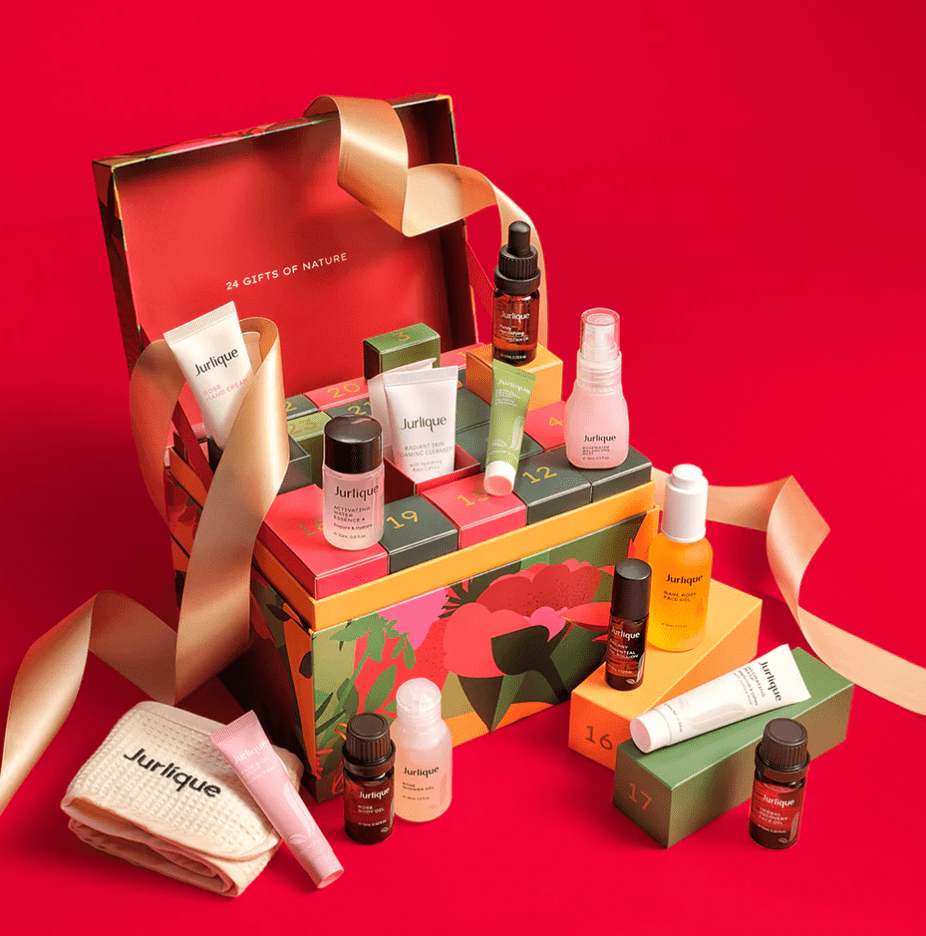
Cleansers, eye creams, moisturisers… Jurlique’s 2024 advent calendar is overflowing with everything you need to build a solid skincare routine. Among the 24 products, three are full-size including the luxurious Rare Rose Face Oil, transformative Lip Care Balm and rejuvenating Energy Essential Oil Blend Roll-On. It’s available on 2nd September and you can sign up to the waiting list here.
Baylis & Harding 24 Days of Beauty Advent Calendar Gift Set, £45, £27
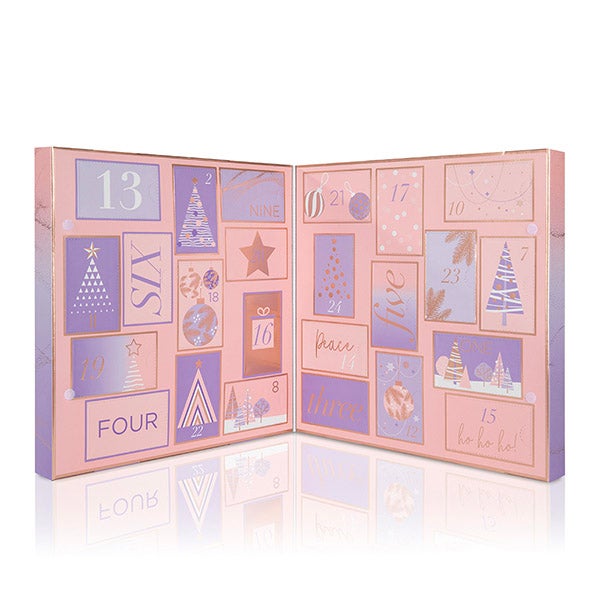
Save 40% on Baylis & Harding’s advent calendar, which is stuffed with 24 bath and body surprises in the brand’s Jojoba, Vanilla & Almond Oil and Sweet Mandarin & Grapefruit fragrances.
Real Techniques Advent Calendar, £30
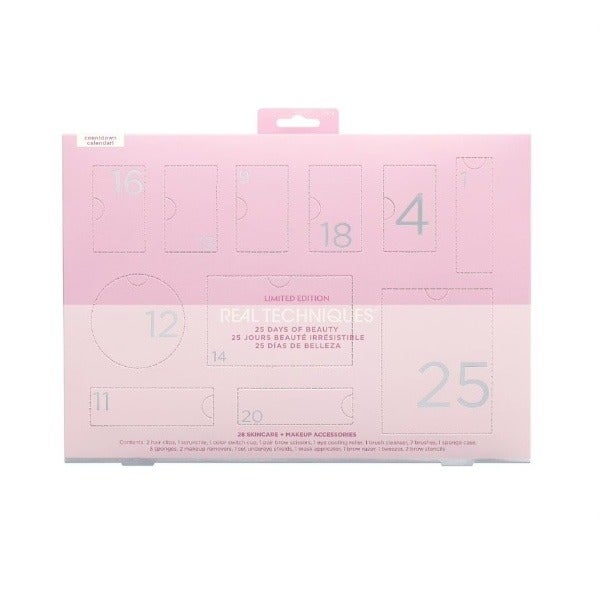
Real Techniques’ advent calendar includes all of the tools you need for a flawless beat, like makeup brushes, sponges, tweezers and creaseless hair clips. If you’re giving it as a present, you can have it gift-wrapped once it’s in your virtual basket.
Revolution Magical Advent Calendar 2024, £40
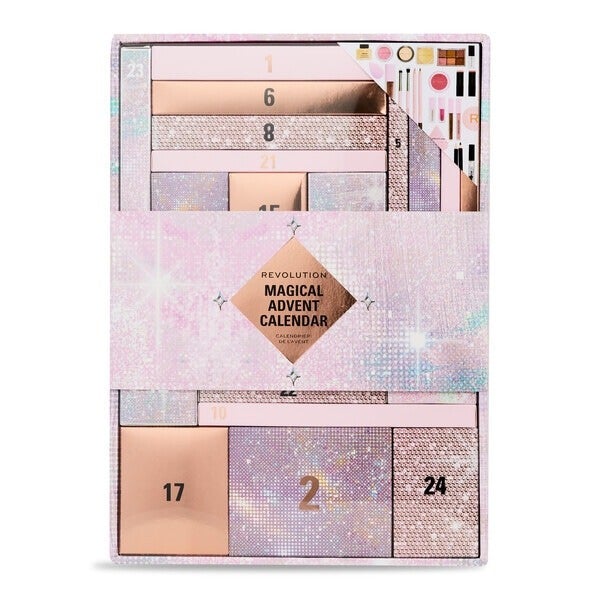
An excellent choice for tweens and makeup beginners, Revolution’s Magical Advent Calendar brags 24 products from lip gloss and blush, to eyeshadow and brow gel, all housed in the sparkliest of drawers.
Like what you see? How about some more R29 goodness, right here?

Best of Earth911 Podcast: Relocalize Aims to Hyper-Localize Ice and Beverage Production
Growing, packaging, transporting, and distributing food is a major source of society’s emissions, accounting for… The post Best of Earth911 Podcast: Relocalize Aims to Hyper-Localize Ice and Beverage Production appeared first on Earth911.
EcoTechGrowing, packaging, transporting, and distributing food is a major source of society’s emissions, accounting for…
The post Best of Earth911 Podcast: Relocalize Aims to Hyper-Localize Ice and Beverage Production appeared first on Earth911.

Earth911 Podcast: Oceanographer John Englander’s 2024 Sea Level Rise Update
Sustainability In Your Ear welcomes back oceanographer and author John Englander, who last visited with… The post Earth911 Podcast: Oceanographer John Englander’s 2024 Sea Level Rise Update appeared first on Earth911.
EcoTechSustainability In Your Ear welcomes back oceanographer and author John Englander, who last visited with…
The post Earth911 Podcast: Oceanographer John Englander’s 2024 Sea Level Rise Update appeared first on Earth911.





